
IN




IN


Connect
Studio,
THE PROJECT IS LOCATED IN WARD VILLAGE, A MASTER PLANNED DEVELOPMENT IN HONOLULU, HAWAII, WHICH IS STILL BEING CONSTRUCTED. ANY VISUAL REPRESENTATIONS OF WARD VILLAGE, INCLUDING WITHOUT LIMITATION, RETAIL ESTABLISHMENTS, PARKS, AMENITIES, OTHER FACILITIES AND THE CONDOMINIUM PROJECTS THEREIN, INCLUDING THEIR LOCATION, UNITS, VIEWS, FURNISHINGS, DESIGN, COMMON ELEMENTS AND AMENITIES, DO NOT ACCURATELY PORTRAY THE CONDOMINIUM PROJECTS OR THE MASTER PLANNED DEVELOPMENT. ALL VISUAL DEPICTIONS AND DESCRIPTIONS IN THIS ADVERTISEMENT ARE FOR ILLUSTRATIVE PURPOSES ONLY. THE DEVELOPER MAKES NO GUARANTEE, REPRESENTATION OR WARRANTY WHATSOEVER THAT THE DEVELOPMENTS, FACILITIES OR IMPROVEMENTS OR FURNISHINGS AND APPLIANCES DEPICTED WILL ULTIMATELY APPEAR AS SHOWN OR EVEN BE INCLUDED AS A PART OF WARD VILLAGE OR ANY CONDOMINIUM PROJECT THEREIN. EXCLUSIVE PROJECT BROKER WARD VILLAGE PROPERTIES, LLC, RB-21701. COPYRIGHT ©2024. EQUAL HOUSING OPPORTUNITY. WARNING: THE CALIFORNIA DEPARTMENT OF REAL ESTATE HAS NOT INSPECTED, EXAMINED OR QUALIFIED THIS OFFERING.
THIS IS NOT INTENDED TO BE AN OFFERING OR SOLICITATION OF SALE IN ANY JURISDICTION WHERE THE PROJECT IS NOT REGISTERED IN ACCORDANCE WITH APPLICABLE LAW OR WHERE SUCH OFFERING OR SOLICITATION WOULD OTHERWISE BE PROHIBITED BY
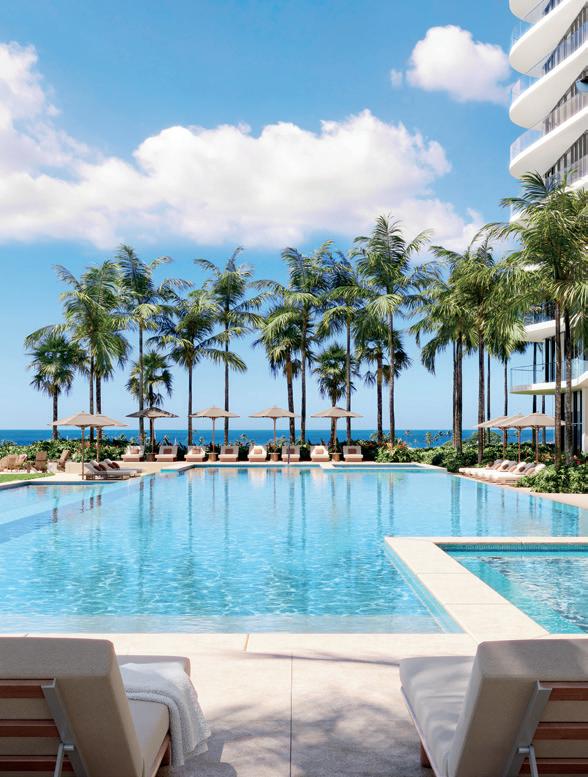

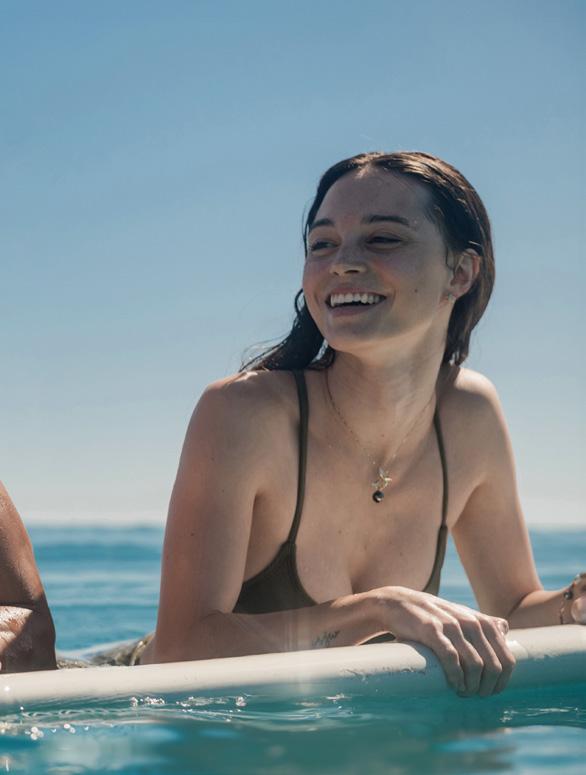
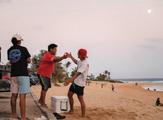
34 /
Without a Rudder
Hawai‘i’s V1 racers are steering paddling in a new direction
STORY BY STU DAWRS
PHOTOGRAPHY BY HAYDEN RAMLER
46 / Acts of Invisibility
Hawai‘i’s background actors make an art of blending in
STORY BY LARRY LIEBERMAN
52 / Lost & Found
STORY
STORY BY JACK TRUESDALE
PHOTOGRAPHY BY MATTY LEONG 64 / Common Threads
How aloha wear became the fabric of Island life
STORY BY SARAH ROSE
PHOTOGRAPHY BY MICHELLE MISHINA
STORY
STORY
WORDS BY RAE SOJOT
PHOTOGRAPHY BY ELYSE BUTLER
92 /
Weathering Heights
The Mauna Kea Weather Center helps astronomers make the most of telescope time
STORY BY HUNTER HASKINS
PHOTOGRAPHY BY ANDREW RICHARD HARA
106 /
Chipping In
For four generations, Maebo Noodle Factory has kept a Hilo institution going.
STORY BY KATIE YOUNG YAMANAKA
PHOTOGRAPHY BY ANDREW RICHARD HARA

114 / Events Calendar & Island by Island
143 / Hawaiian Airlines Information
160 / PAU HANA
Call of the Wa‘a
STORY BY CATHARINE LO GRIFFIN
PHOTOGRAPHY BY SAMANTHA JOHNS

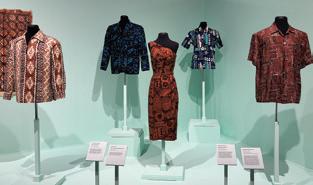

Forget to take your copy of Hana Hou! from the seat pocket? Miss a story from a back issue? Want to share a story or a video you’ve seen on the in-seat media player or on the Hawaiian Airlines app? Hana Hou! is now online as well as on-screen. Visit our new web site at the link below or scan the QR code to view the current issue and selections from our archive.


hawaiianairlines.com/hawaiistories/hana-hou
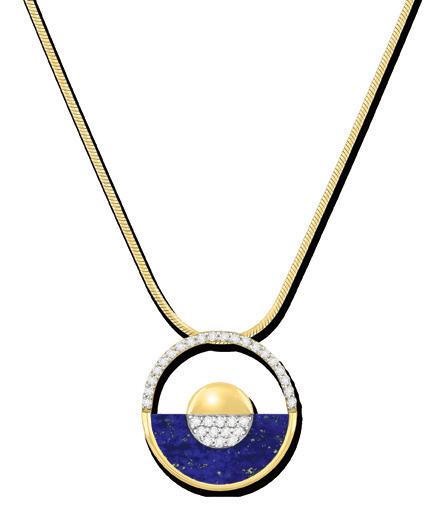
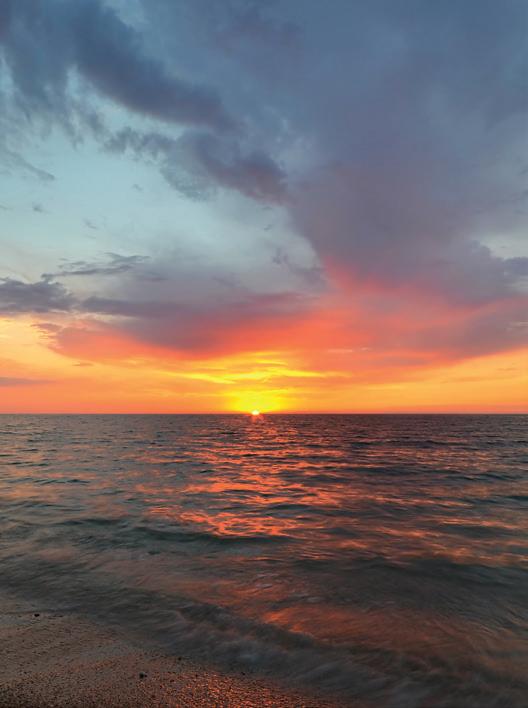
PUBLISHER & CEO
Jason Cutinella
PARTNER/GM —HAWAI‘I
Joe V. Bock
GLOBAL EDITORIAL
DIRECTOR
Brian McManus
EDITOR
Michael Shapiro
DIRECTOR OF PHOTOGRAPHY
Matt Mallams
ASSISTANT EDITOR
Maria Kanai
MANAGING DESIGNER
Taylor Niimoto
DESIGNERS
Eleazar Herradura
Coby Shimabukuro-Sanchez
VP FILM
Gerard Elmore
FILMMAKERS
Blake Abes
Romeo Lapitan
Erick Melanson
VIDEO EDITOR
Jhante Iga
STUDIO DIRECTOR/ PRODUCER
Kaitlyn Ledzian
DIGITAL CONTENT MANAGER
Brigid Pittman
DIGITAL PRODUCTION DESIGNER
Arriana Veloso
PRODUCER
Taylor Kondo
HAWAIIAN CULTURAL ADVISER
Kahōkū Lindsey-Asing
OPERATIONS
VP ACCOUNTS RECEIVABLE
Gary Payne
OPERATIONS DIRECTOR
Sabrine Rivera
TRAFFIC MANAGER
Sheri Salmon
CLIENT SERVICES
DIRECTOR
Kristine Pontecha
ADVERTISING
SENIOR DIRECTOR, SALES
Alejandro Moxey
VP SALES
Mike Wiley
ADVERTISING DIRECTOR
Simone Perez
DIRECTOR OF SALES
Tacy Bedell
HEAD OF MEDIA SOLUTIONS & ACTIVATIONS
Francine Beppu
ACCOUNT EXECUTIVE
Micah Aina
ACCOUNT EXECUTIVE
Rachel Lee
SALES COORDINATOR
Mai Ueda
CONTACT
EDITORIAL INQUIRIES editors@NMGnetwork.com
SALES INQUIRIES sales@NMGnetwork.com
CONTRIBUTORS
Andrew Richard Hara
Catharine Lo Griffin
Conner Gorry
Daniel Sullivan
Elyse Butler
Ezgi Green
Hayden Ramler
Hunter Haskins
Jack Truesdale
Katie Young Yamanka
Larry Lieberman
Lila Lee
Martha Cheng
Matty Leong
Megan Spelman
Michelle Mishina
Paul Wood
Peter Rosegg
Rae Sojot
Samantha Johns
Sarah Rose
Stu Dawrs
Wayne Levin
Published by: NMG Network 41 N. Hotel St. Honolulu, HI 96817
©2024 by NMG Network, LLC. Contents of Hana Hou! are protected by copyright and may not be reproduced without the expressed written consent of the publisher. Hana Hou! assumes no liability for products or services advertised herein.

3375 Koapaka Street, G-350 Honolulu, HI 96819
Phone: 808-835-3700
Fax: 808-835-3690
Mailing Address: PO Box 30008 Honolulu, HI 96820
For questions related to travel, visit us online at HawaiianAirlines.com or contact us at any of the following numbers:
UNITED STATES / CANADA 1-800-367-5320 Monday-Sunday, 24 hours Text 38285 Monday-Sunday, 5:00am - 11:00pm HST
AUSTRALIA (61) 1-800-955-912
CHINA (86) 10-6502-6766
JAPAN (81) 570-018-011 Monday-Sunday
NEW ZEALAND (64) 0800-449-415
AMERICAN SĀMOA (684) 699-1875
SOUTH KOREA (82) 2-775-5552
TAHITI (689) 40-866-000
CONSUMER AFFAIRS
HawaiianAirlines.com/CAO
BAGGAGE INQUIRIES 1-866-389-6654
Monday-Sunday, 8:00am - 4:30pm HST
H awaiian M iles
For information on our frequent flyer program, please contact our HawaiianMiles Service Center Monday-Friday, 7:00am - 4:30pm HST 1-877-HA-MILES or 1-877-426-4537
HAWAIIAN AIR CARGO INQUIRIES 1-877-422-2746
HawaiianAirCargo.com

Swimmers, boogie boarders and bodysurfers play in the shorebreak at Sandy Beach, O‘ahu.
PHOTOGRAPH BY ELYSE BUTLER
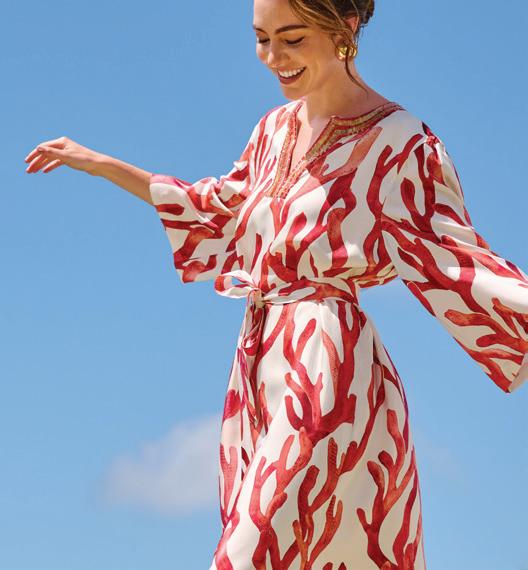

“A parking lot offers compelling portraits of the communities that gather there,” says Rae Sojot, who wrote the story accompanying this issue’s photo feature, “Park & Ride.” “They’re windows into the social dynamics and characters that make a place special.” As a bodysurfer, Sojot is familiar with the subcultures and camaraderie of beachside parking lots like the one at Sandy Beach, a.k.a. “Sandy’s,” on O‘ahu’s Ka Iwi Coast.
“Some scientists note the correlation between the ions produced by moving bodies of water and mood,” Sojot notes. “Essentially, people who live near or frequent the ocean tend to be happier. This makes sense, especially at Sandy’s. Each time I go, everyone’s having such a good time.” Sojot is a senior editor at NMG Network in Honolulu, and while she enjoys Sandy’s, she has a soft spot for the parking lot scene at her own home break—Point Panic.
Hunter Haskins

“Mauna Kea is the coolest, most interesting place in the world,” says Hunter Haskins, who wrote “Weathering Heights” about the meteorologists who do the important work of predicting the summit weather so that astronomical observatories can make the best use of their telescope time. “It’s the tallest mountain in the world, depending on how you measure things, and if you roll downhill long enough, you’ll find yourself at the most perfect beach.” Haskins previously visited the various observatories on Mauna Kea for a 2017 Hana Hou! story and is honored to have had the opportunity to return. “Everyone who works on the summit in any capacity shares credit for the mind-blowing discoveries that seem to come every week.” Haskins is a regular contributor to Hana Hou! and has written on topics as diverse as freediving, beach volleyball and medieval combat re-enactors.

“As a documentary photographer, I’m always fascinated by subcultures in Hawai‘i and loved photographing the scene in the Sandy Beach parking lot for this issue,” says Elyse Butler, who shot “Park & Ride.” “The Sandy’s lot is a classic spot for youth to hang out and tailgate, check the surf and party, and for water people to talk story with friends before and after riding the waves. It’s a timeless place in East O‘ahu that people from every generation know about.” Butler is a veteran Hana Hou! photographer, and when she’s not photographing life in Hawai‘i she can be found swimming in the ocean and walking her dog at Sandy’s. Butler recently won several American Advertising Federation Pele Awards for her photo essay, “Full Immersion,” in the AugustSeptember 2023 issue of Hana Hou! See more of her work @oceanelyse.
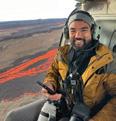
“Whether I’m shooting telescopes or a noodle factory, I still want to know about the people—their concerns, their struggles, their joys,” says Andrew Richard Hara, who shot both “Weathering Heights” and “Chipping In” for this issue. “Getting to know the people behind each assignment helps me get a better idea of how to represent them, what part of their story we can shine some light on. What really struck me about both of these stories is that even though they were so different— meteorologists tracking the weather on Mauna Kea and a multigenerational family business making noodles in Hilo—all of the people help their communities every day, whether by gathering critical data or making an iconic snack. Both were greater than the sum of their products and full of people taking care of each other.” Hara is a visual media specialist based on Hawai‘i Island and focuses on culture, science and conservation. See more of his work @andrewrichardhara.
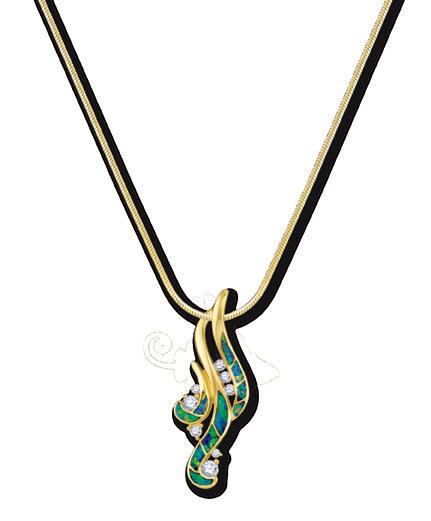


BY PETER INGRAM , PRESIDENT AND CHIEF EXECUTIVE OFFICER, HAWAIIAN AIRLINES
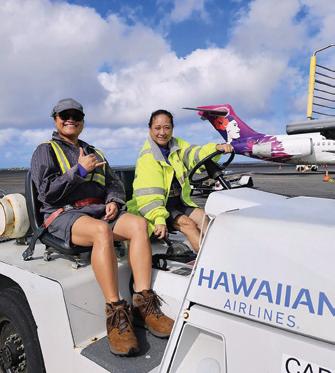
Alittle-known fact in our company’s nearly ninety-five-year history: In the midst of World War II, on March 20, 1942, Hawaiian Airlines was granted the first US cargo service certificate, and later that year we dedicated a fleet of three Sikorsky S-43 amphibious aircraft to carry interisland freight.
What launched as a venture to support military cargo traffic and distribute goods to customers across the Islands has flourished into a growing and important part of our business. Each day, via more than 250 flights, our small but mighty cargo team of just over 150 employees moves an
average of 340,000 pounds of freight— the equivalent weight of roughly 100 SUVs—throughout our transpacific and interisland network. Inside the bellies of our aircraft, you’ll find an incredible variety of cargo: produce from the US West Coast, live carp, auto parts from Japan and e-commerce goods from Seoul. And while shipments to Hawai‘i from our destinations in the continental US, Asia and Oceania account for most of our volume, our high-frequency flying within the Islands is an irreplaceable link for the timely transportation of perishables, construction equipment, lifesaving medications and blood supply.
Last year, building on our cargo expertise and long-standing punctuality, we began flying freight on behalf of Amazon, which contracted Hawaiian to operate an initial fleet of ten Airbus A330s between airports located near the online retailer’s facilities.
Hawaiian’s thriving cargo business also reflects our progress in advancing a diverse workforce. Glance out the window on your next flight and you’ll notice many wāhine (women) in the flurry of activity on the ramp, dropping off and picking up cargo containers. Today women make up half of our cargo team, a 12 percent increase over the past decade.
“Cargo can be a very physical job; it requires workers to lift heavy objects, operate forklifts, be on their feet all day,” says Dana Knight, our director of commercial cargo. “But regardless of the task or someone’s gender identity, expectations are the same and there are no assumptions that one person could do it better than the other.”
During our immediate support for Maui following last year’s tragic wildfires, Dana was among employees who managed our Mālama Maui Desk, which was set up to more efficiently field and respond to urgent requests for help (or mālama). Through this effort, we assisted over 230 individuals and organizations while carrying approximately 19,000 pounds of donations, including meals, electronics, school supplies, athletic equipment and pet kennels.
“One thing I love about cargo is how it helps our community, what it does for our people in Hawai‘i,” says Tracy Freitas, who heads our Kahului cargo hub. “It may look like a simple box that is going from cargo to the aircraft and out on the other side. But within that box is everything that matters to somebody.”
From our ‘ohana to yours,
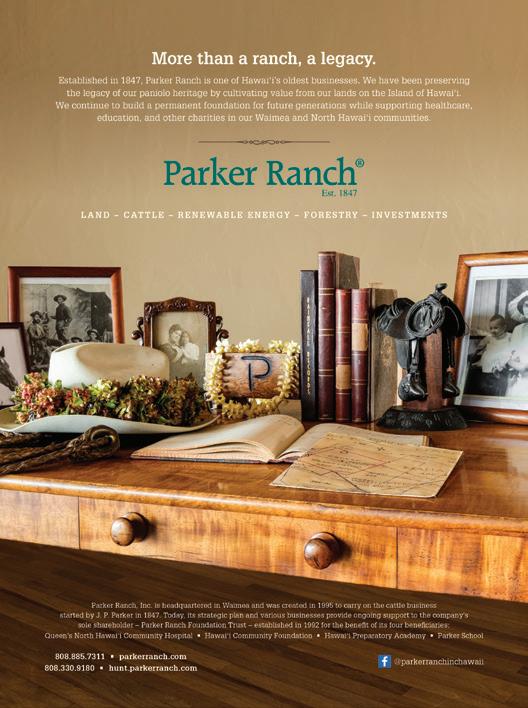
Heaven: Immersing yourself in an oasis at Kilolani Spa.

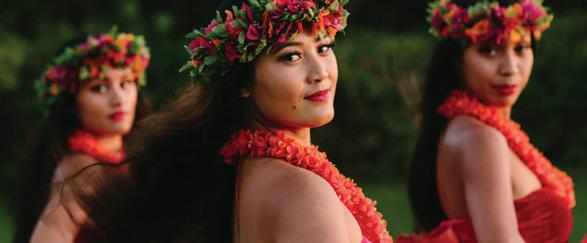
Ear th: Experiencing a ceremonial Lū‘ au.

Sea: Feeling weightless in the waves of the pacific.



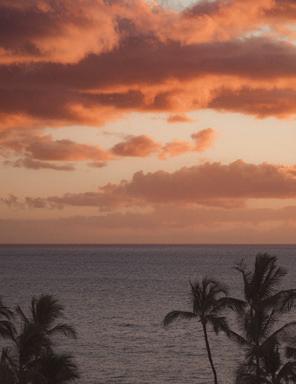
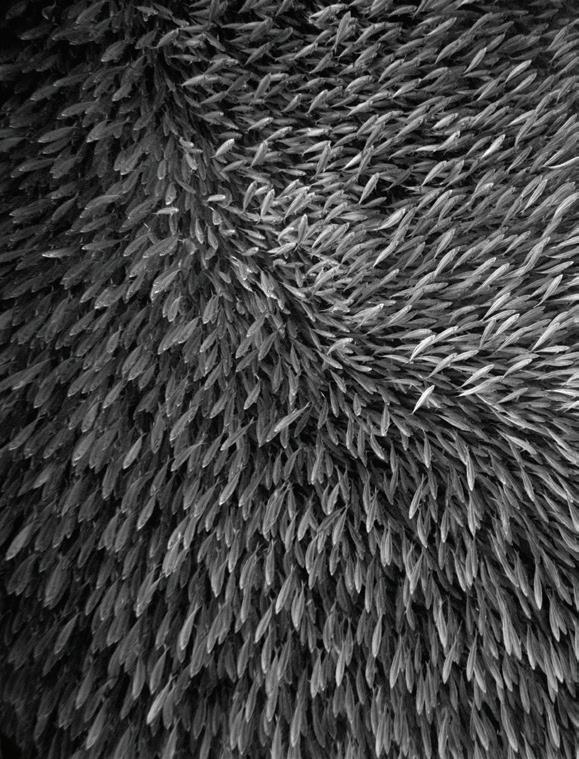
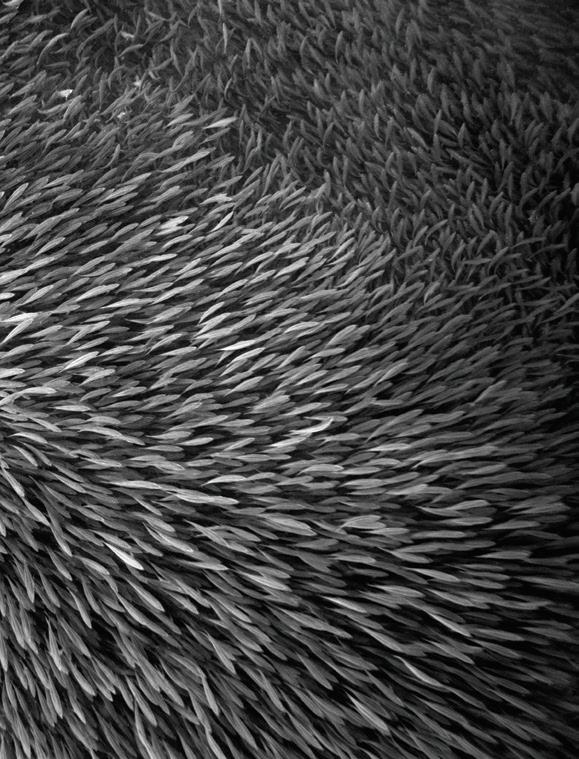


A new retrospective featuring the work of renowned Hawai‘i photographer Wayne Levin includes
of kamanu (rainbow runners) hunting akule (big-eye scad) as well as historic photos of the
Montgomery, Alabama, March 1965. On the previous spread, schooling akule, one of
Wayne Levin’s parents built a house in South Kona in the 1970s, shortly after he’d gotten out of the Navy. He’d visit and swim at Hōnaunau—the place he now calls home. “I was so taken with how beautiful it looked when the waves broke on the reef and drained back into the ocean that I wanted to photograph it,” Levin recalls. He borrowed a friend’s camera, got dragged over the reef and scratched the lens. “He told me, ‘OK, you bought my camera.’” That was the beginning of Levin’s exploration of the undersea world through a viewfinder. He has since become renowned for his black-and-white photographs of marine life and surfers, images that have been described as “haunting and mercurial,” “elegant” and “a glowing world of light poured into water, of silver clarity and dim, depthless mystery.”
From July 25 through August 31, 2024, the Downtown Art Center in Honolulu will host Levin’s first retrospective show, Wayne Levin, A Life in Photography, Retrospective 1965-2024,
a sweeping exhibit spanning his sixty-year career. The work isn’t all oceanographic: Levin documented the 1965 civil rights march from Selma and the restoration of the island of Kaho‘olawe following decades of military bombing. He shot at Kalaupapa, the remote peninsula on Moloka‘i where Hansen’s disease patients were exiled, and juxtaposed images taken on both sides of the border wall in Texas. “Wayne is not the disengaged observer,” says exhibition curator and fellow photographer Floyd K. Takeuchi, “but rather a photographer who goes all in, whether he’s marching for justice or diving deep to capture the beauty of nature at its best.”
Nature at its best has resulted in some of Levin’s most memorable images. Over numerous dives to photograph large schools of akule (big-eyed scad), he became fascinated by the way they seemed to move as a single organism. “Their movements were so coordinated, it made me wonder: What’s the individual, actually? Is it the fish or is it the school?”
Levin started photographing the behavior of other groups, too, from migrating geese in the Pacific Northwest to starling flocks in England. “I heard about this Aspen grove in Utah called the Pando,” he says, explaining how he pursued the idea to its apotheosis. “It’s arguably the largest single being in the world.”
Images of these amorphous schools will be on view, as well as selections from The Edge (his first underwater exhibition in color, which focuses on the intersection among water, earth and air), as well as photographs from Kure, Bikini Atoll, Kona and other waters that can be anything but pacific. “When I go into the ocean and put myself into an environment that’s much more powerful than I am, it’s only by its grace that I return,” Levin says. “I ask permission from Kanaloa, the Hawaiian god of the ocean, each time before I enter, and then give thanks when I get back.”
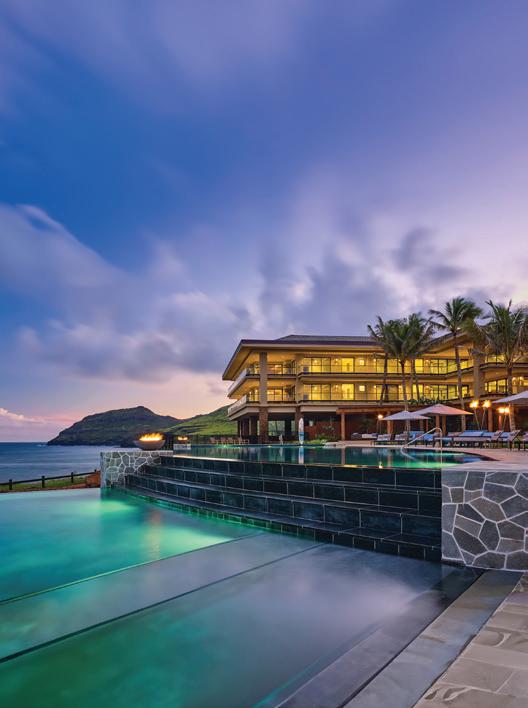
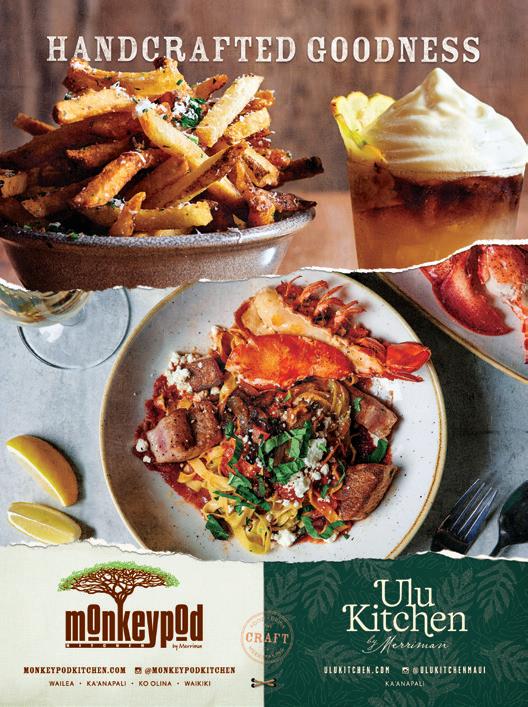
STORY BY MARIA KANAI PHOTOGRAPHY BY EZGI GREEN
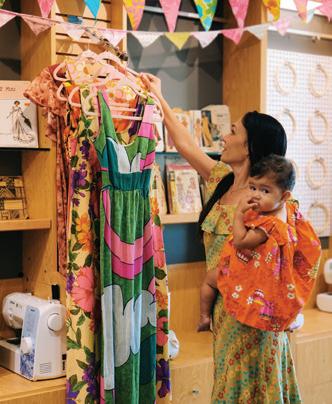
Marion Camo talks about her mu‘umu‘u as if they were sisters and aunties. “This one here, she has so much color but there’s some sun damage,” she says of the yellow, long-sleeved mu‘u with intricate orange-and-white plumeria lei prints. There’s obvious greenish-blue color bleeding at the hem. “People might think these kinds of mu‘u are only good for scrap fabric, but I have sun damage, too! Whether you’re a person or a beautiful
dress like her, life happens,” says Camo. “The damage is part of her story.”
The precious mu‘u is next to wellknown designer brands like Manuheali‘i, Nake‘u Awai Designs, Mamo Howell and Puamana Crab, along with other homemade mu‘u and thrift store pieces that Camo collected as a teenager—the origin of Camo’s Mu‘umu‘u Library.
“I was always drawn to loud prints and colors,” says Camo. “Even as a
teenager, I’d see these mu‘u at the thrift stores and I would think, ‘Oh my gosh, I have to save her.’” As her personal collection grew, so did a revival of interest in mu‘u through the 2010s. In 2021 she collaborated with the Daughters of Hawai‘i to start a program called Ho‘onanea: A Vintage Experience at Queen Emma Summer Palace, where women could borrow a mu‘umu‘u for a day at the palace. In June 2023 she connected with the Pu‘uhonua Society, a nonprofit that supports artists and Hawaiian cultural practitioners. With their help and support from Nā Mea Hawai‘i, a shop showcasing Native Hawaiian arts, Camo was able to open the Mu‘umu‘u Library on the first floor of Ward Village in Honolulu.
Down the stairs lies the entrance into a brightly lit room with tables and chairs, sewing machines, materials and patterns—everything you need to create your own mu‘u. The library is a mu‘u lover’s safe haven where, for a fee, members can borrow a frock for special occasions, donate their beloved dresses and, on Wednesdays, repair discarded and damaged mu‘u.
“History happens when women gather together, you know,” says Camo, referring to the American missionary wives who came to Hawai‘i wearing high-necked holokū, otherwise known as Mother Hubbard dresses—the predecessors of the mu‘u. “It was that friendship between the missionaries’ wives and the ali‘i wāhine [chiefly women] that paved the way for them to form the Hawaiian alphabet and written language. Hawai‘i became the most literate place in the world,” she says, pointing to her larger aim in maintaining a library of the Islands’ signature dress. “It was through that connection of dressmaking and sewing circles. We want to keep fostering that environment of women coming together, being creative and helping each other. It’s actually one of the most powerful things that we can do.”
STORY BY MARTHA CHENG PHOTOGRAPHY BY LILA LEE

Hiroshi Tsuji’s signature lies under the dollops of caviar, the flutters of gold leaf, the lush lobes of uni. You might miss it entirely, distracted by dramatic displays of smoke unfurling from the saba sushi, the ombré tiles of tuna from the ruby-red loin to the blush pink otoro. It is constantly upstaged, but it is the stage. It is the rice, the building block of sushi. For his shari,
or sushi rice, Tsuji mixes two varieties: Sashanishiki, which Tsuji values for its texture, with Nanatsuboshi, which lends sweetness. He then flavors it with a blend of three different vinegars ranging in maturity from three to ten years to achieve his desired level of acidity. The result: The shari provides lightness and harmony with each fish draped across it. “The shari defines the quality of
the experience,” Tsuji says through a translator. “If the neta (topping) is good but shari is not prepared with proper care, the sushi will not be delicious.”
Early this year Tsuji opened Sushi Gyoshin, a tiny omakase restaurant barely bigger than a bedroom, marked only by a noren (curtain) with the restaurant’s name (days before the restaurant opened, someone stole the noren—as if the place weren’t already hard enough to find). The narrow sliver of a space consists of just eight seats fronting Tsuji’s workspace; with little separation between diner and chef, it feels like sharing a stage with a one-man show. You are near enough to hear the satisfying crack as Tsuji cuts through nori, close enough to see slices of mirugai (Pacific geoduck) curl upward as he scores it with his knife.
The fifteen courses combine kaiseki with omakase sushi, beginning with a series of seasonal appetizers that change weekly. They might take advantage of the winter shirako (cod milt) season, combining the creamy milt with kuzu (kudzu) starch to create a soft tofu. In spring it might be firefly squid, each the size of a thumb, bathed in a ginger sauce. Born in Japan, Tsuji spent most of his twenty-year career there learning sushi and washoku (traditional Japanese cuisine), with its emphasis on balance and seasonality. He intended to go to Europe to learn new cuisines, but when a friend offered him a position in Honolulu, he accepted without hesitation.
After about five years working at Japanese restaurants, he decided to open his own place, naming it Gyoshin, or “fish god.” In the chef’s hometown of Toyama, the phrase also refers to nodoguro, or blackthroat seaperch, a prized fatty white fish. If the timing is right, Tsuji will serve it, torching its skin lightly before setting it on a pedestal of rice—at this serene altar on a busy Honolulu street, a tribute to home and the fish gods.
SHOP CAUSE for a



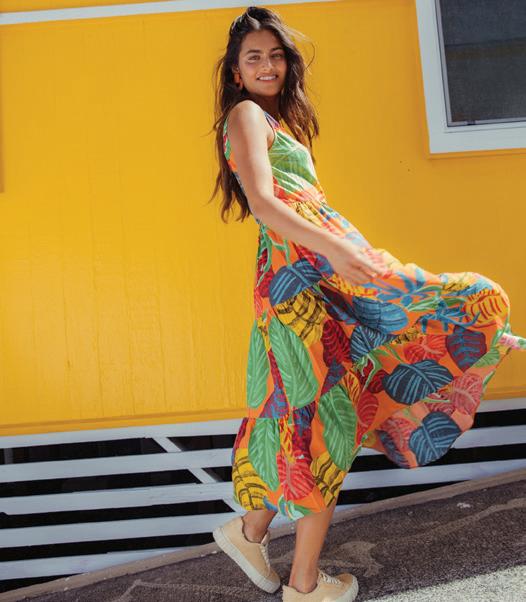




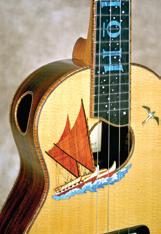
Master ‘ukulele maker Chuck Moore is famous among musicians and collectors in part for his intricate inlay work. Above left, Moore etches faux ivory on the headstock of an ‘ukulele recently donated to the Hawaiian Music Archives. Right, a tribute to the Polynesian voyaging canoe Hōkūle‘a, celebrating the canoe’s return to Hawai‘i in 2017 after sailing around the world.
We don’t need more ‘ukulele,” says master luthier Chuck Moore. “We need better and more innovative ones.” Which is why he calls his innovative business Moore Bettah Ukes.
Since 1985 Moore has built some eight hundred ‘ukulele, many of which are the most sought-after instruments in the world of ‘ukulele. His highest-quality instruments are usually made from Hawai‘i Island-sourced koa, though sometimes he uses spruce or milo, with necks of Spanish cedar or Honduran mahogany. Moore crafts each one singlehandedly from his solar-powered workshop in remote ‘Opihikao, Hawai‘i Island.
He first came to Hawai‘i from Northern California on a trip he won with a single, $1 raffle ticket he bought at a craft fair, where he was selling his pottery and scrimshaw creations. A lifelong love affair followed, with Moore moving first to Moloka‘i, where he met his wife, Bonnie, and then to Hawai‘i Island, where the couple now live in a treehouse Moore built.
Moore is renowned for his inlay work—intricate images of people, places, whales, flowers and more rendered in shell, wood and, in older models, ivory. One exceptional uke pays tribute to the voyaging canoe Hōkūle‘a, depicting the canoe on the face and its name surrounded by constellations along the fretboard. (Proceeds from the sale of this stunner went to the Polynesian Voyaging Society.) As beautiful as his ukes are, Moore’s priority is their sound, because even the most elaborate ones are meant to be played. At one time Moore wouldn’t sell an instrument unless the buyer knew at least three Hawaiian tunes.
Moore builds some ukes with a specific owner in mind. He built an ‘ukulele with a phoenix-rising theme for a man who’d survived personal struggles. For a Native American, Moore decorated the uke with two feathers that had been the man’s spirit symbols since boyhood. A Moore uke can range from $5,000 to $20,000, and collectors cherish them— one collector is rumored to have owned
twenty-three at one time. Acclaimed Hawaiian musician Ledward Kaapana has three. After hearing Kaapana play in Kona, Moore offered to build one for free, “no strings attached,” as Kaapana would joke.
Moore has resisted adding staff or formally teaching, but he has mentored a few Hawai‘i Island high school students willing to put in the time. Two have opened their own workshops.
Now 71, Moore no longer takes commissions and doesn’t keep a waiting list (an e-mail blast notifies followers when a new ‘ukulele is born), but he’s building “some of my best work,” he says, for his own pleasure. He’s currently working on a piece using rare lama and ulu wood as a donation to the Hawaiian Music Archives, a community-funded initiative through the Hawai‘i State Archives seeking to make rare and historic ukes accessible to the public. “It’s a way to give back to Hawai‘i,” Moore says, for all the aloha he has received from the Islands.


Game face set, Hili drops into the bowl on her BMX bike like a pro. Across the park, Kanani kicks hard toward a quarter pipe, raven hair flying. Nica, meanwhile, swaps roller skates for a deck to take daughter Kardiel for a spin. Hili is eight, Kanani is barefoot and Kardiel, still in diapers, is a natural—Nica Umeda skated until she was nine months pregnant. Welcome to a typical sesh at Roots Skatepark on Hawai‘i Island. Built by skaters, for skaters, the Roots ‘ohana is committed to improving the lives of local youth and families— including getting more wāhine on wheels. “I was bummed that I was the only female out here, so I started the Roots Wahine Skate Club in 2023,” says Kanani Alpis, who considers skateboarding her therapy. Within months the club had twenty-four members and became a mentoring program for 5- to 16-year-old girls. “Skating grows their self-esteem and breaks them out of their comfort zones. You don’t reach your goals by being comfortable.” Alpis also hosts kūpuna (elder) sessions for the 65-and-older crowd. “My kuleana [responsibility] is to help build
strong community connections between youth and kūpuna through skating.”
In tightknit Kapa‘au, the community realizes dreams like Roots Skatepark: An auntie lobbies for land, a neighbor lends an excavator, a local skater starts digging. Brian Sandlin is that skater, known in these parts as “the concrete king” (he or his company, Abstract Builders, helped pour every skate park on the island). But after the parcel was cleared adjacent to Kamehameha Park, the “dream went south,” recalls Sandlin. “We had no money and the land just sat. It was a mess.” Enter veteran skater Richey Riggs and a crew of volunteers who shared Sandlin’s vision.
Sandlin and Riggs donated years of Sundays, founded the nonprofit Roots Advocates for Youth and raised $30,000, including a Tony Hawk Foundation grant of $10,000 to get started. In 2010, Roots celebrated its phase one grand opening, only to stall for another decade. “This project embodies Kohala and skateboarding culture,” says Riggs. “You fall? You get back up. You try again. It’s about resilience and persistence.”
And about funding: Building skateparks is an expensive adventure. Luckily, Councilwoman Margaret Wille, whom Riggs says is responsible for getting skateparks fired up on Hawai‘i Island, secured $70,000 of Kohala District funds over two terms to help keep the dream alive. Roots dug in, holding bake and garage sales and selling limitededition merch until they had enough money to pour almost three hundred cubic yards of concrete into what Sandlin calls a “playground for all ages.” And they’re not done. Roots needs $500,000 to transform the park’s central grassy expanse into a concrete bowl, add picnic tables and night lighting, and grow the food garden. It’s a big ask, but experience shows phase three will take years to complete otherwise.
“This next generation? They’re gonna be the hammers,” says Kai Willey, once a Hāwī grom (young skater) scolded for street skating back, now dad to Hili. “We literally can’t imagine what they can accomplish.”
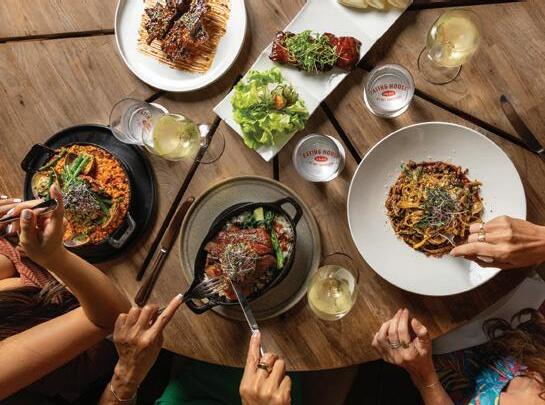






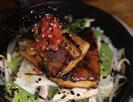



STORY BY PAUL WOOD PHOTOGRAPHY BY DANIEL SULLIVAN

The region that Maui folks call Upcountry—the habitable upper slopes of Haleakalā—has little appetite for progress. Its twisting roads follow patterns established during the 1800s if not before. Its settlers chose rocky slopes over plantation-camp lowlands, the hand-built over the well-managed. The sea is near, but thousands of feet below.
This year marks half a century that artist Curtis Wilson Cost has been preserving Upcountry scenes on canvas. He hunts for them—spectacularly
bloom-laden jacaranda trees, antique shacks with rusted roofs (a favorite subject), a single cow in a pasture rich with slanting golden light, a rock wall, a dirt road, long views from high places. He archives them in acts of heightened realism using techniques so exact that one can almost see every green blade in a grassy pasture. A corrugated roof glows like moonlight.
He learned these techniques as a kid from his father, James Peter Cost, who maintained a successful solo gallery in Carmel, California, for
twenty-five years. Curtis moved to O‘ahu as a teen, ostensibly to finish high school but primarily to surf and play music. He married Jill, his steadfast partner/adviser, and together they happened upon Upcountry—remote Kēōkea, specifically, where they built a multi-tiered, seaward facing homestead that includes the Curtis Cost Gallery, available by appointment only.
When Cost began painting fifty years ago, Front Street Lāhainā and the new West Maui resort scene was a hot art market with emphasis on impressionistic and visionary pieces. He used that scene to launch his career, but he knew he didn’t fit with the ’70s vibe. His intensely realistic landscapes hark back to Hawai‘i art from an earlier generation. Cost views Howard Hitchcock and Lloyd Sexton, both born in Hilo, as his forebears. Both were representational artists devoted to creating island landscapes as vividly as fact. “I’m in that tradition,” he says.
Evidently, the Hawai‘i Department of Transportation regards Cost as a classic Hawai‘i artist who merits a prominent place on public walls. HDOT is in the process of installing his artwork in airports across the state. Visitors landing at Kahului Airport can view 150 of his pieces, including an elevenfoot-long mural along the Welcome Wall. His works are on display similarly throughout Hilo Airport and will soon be on display at Kona Airport.
Just as Cost’s style comes from an earlier time so, too, does his subject matter; he captures a world in the process of vanishing. Shacks with rusty roofs don’t last. “I’m chasing these things before they disappear. A glimpse before they vanish. Upcountry is filled with early-plantation life, and it’s getting ripped down. I’m capturing it slower than it’s going away,” says Cost. “It’s feeling a little bit like a race.”
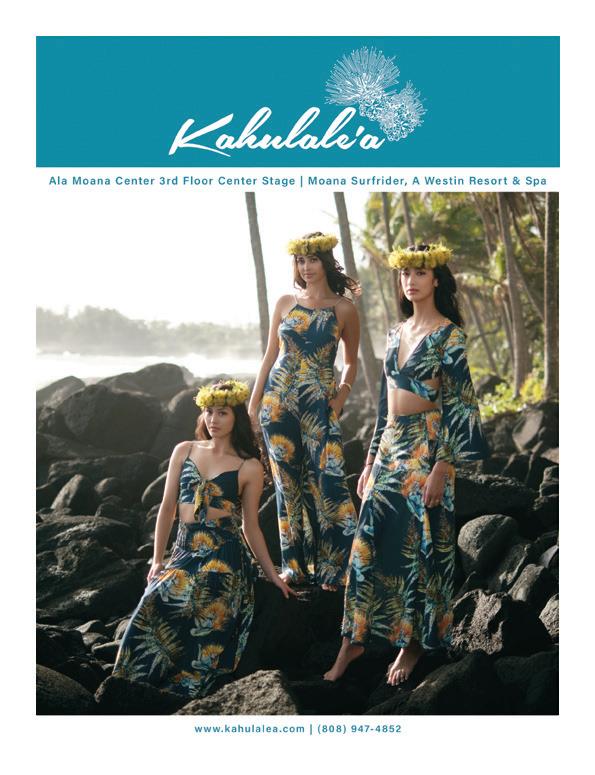


Last March, more than 170 canoe paddlers ages 7 to 70-plus gathered at Mauliola, a strip of beach in urban Honolulu across Ke‘ehi harbor from the airport’s reef runway. They came from throughout Hawai‘i and as far away as Tahiti, Canada, New Zealand and Florida. Some were competing in their first race; others were among the world’s best. All were here for Aloha Aito, a day of races that included a 1.5 - mile course for kids under 14; a 6-mile course along the sheltered contours of Ke‘ehi Lagoon, for teens, novices and competitors ages 40 and up; and a 12-mile, open-ocean run for elite paddlers and any others who dared. That so many racers from so many places, with such varied skill levels, gathered on the same day was noteworthy. Even more so because they were all there to race in V1s, the notoriously challenging single-person canoes that have long been popular in the South Pacific and are lately seeing a wave of interest in northern waters.
“No matter how good you are, even if you’re an elite paddler, when you jump from the OC1 to the V1, it’s a completely different thing,” says Christian Hauata Marston Sr., who founded the Aloha Aito race on Kaua‘i in 2017. “Being on these canoes teaches you not just to appreciate the water, but appreciate the technique needed to make the canoe go straight
without having to stop.” Marston was born in Tahiti but has lived on the Garden Island since he was 10. Outside of the canoe world, he’s best known as the owner of Hanalei’s iconic Tahiti Nui Restaurant, but he’s also one of the people behind the V1’s growing popularity in Hawai‘i.
There are two basic boat designs in solo outrigger racing: OC1 and V1. The numeral indicates the number of seats. There are also two-, three-, fourand six-seat outriggers. The letters point to the canoe’s origin: OC is short for “outrigger canoe,” which has been the craft of choice in Hawai‘i for the last three decades. V is for va‘a, the generic Tahitian word for canoe—same as wa‘a in Hawaiian and vaka or waka in other parts of Polynesia.
The late Joe Quigg, a legendary surfboard shaper, canoe builder and maker of all manner of watercraft, is often credited with developing the OC1. As the story goes, Quigg came up with a prototype in the early 1980s as an off-season training tool for members of O‘ahu’s Outrigger Canoe Club. At roughly the same time but 2,600 miles to the south, Tahitian paddlers were adapting single-seat canoes— va‘a hoe, traditionally meant for calm lagoon waters—for racing in the open ocean. In 1991 another O‘ahu canoe builder, John Martin, began commercially manufacturing his version of the OC1. Today, OC1s are dominant in Hawai‘i and throughout much of the world, except in the South Pacific, where the V1 reigns. The most glaring difference is the rudder: OC1s have them, allowing paddlers to steer with foot pedals; V1s do not, requiring racers to manage everything with their paddles and a variety of strokes. Paddling in the open ocean is challenging no matter the craft, but the V1 requires an exceptional mix of technique and environmental awareness—without a rudder, small variations in stroke power or paddle angle alter speed and direction.
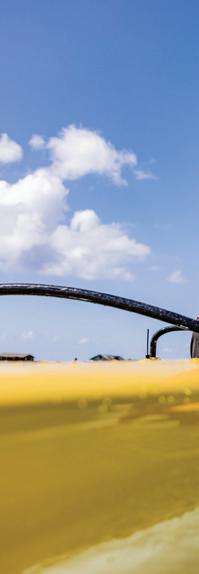
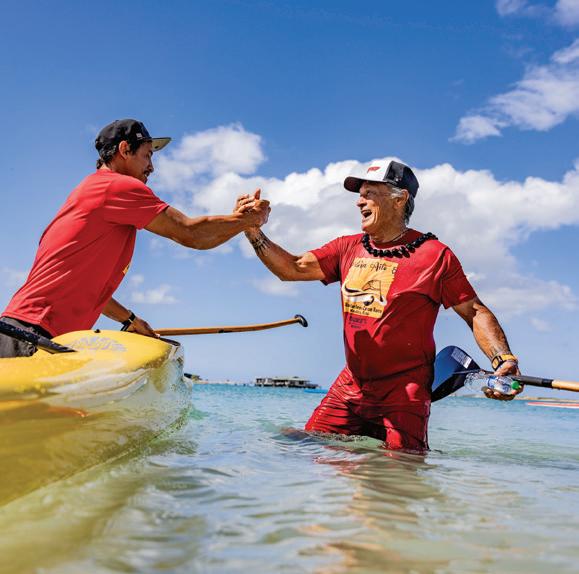
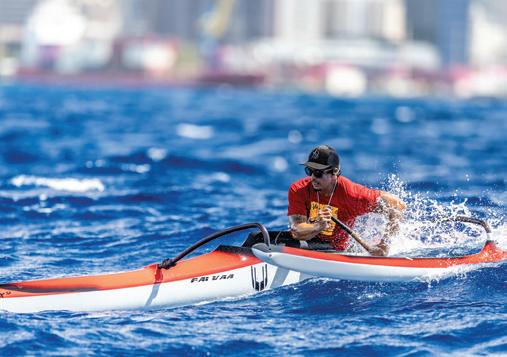
The canoes also weigh about twenty pounds, light enough for even the slightest breeze to change their course. Add currents and waves, and keeping a V1 headed in the right direction becomes exponentially harder.
Case in point was the start of the short course at this year’s Aloha Aito, which was part race, part demolition derby: Keeping a rudderless canoe going straight while bringing it quickly up to speed takes a lot of skill. With barely a paddle’s width separating dozens of twenty-foot-plus canoes from each other, it was inevitable that one would clip another, setting off a chain reaction that either spun out or blocked every boat within a fortyfoot arc. By the time that logjam was sorted out, anyone who’d avoided the wreckage was pulling away from the
crowd of also-rans. It’s all part of the learning process.
“If you want to really get better as a paddler, V1 is like an automatic coach,” says Marston, who sees the canoes as one means of helping Hawaiian paddlers to gain ground on their Tahitian counterparts, who have been the dominant force in outrigger canoe racing for decades. “Right now it’s Tahitians,” he says. “That’s my blood, that’s my heritage, but I grew up here and learned to paddle here, so it’s important to me that I transmit whatever I know, what little I know, about paddling to the kids.”
Marston knows more than a little. He started paddling in the early 1970s with Hanalei Canoe Club
on Kaua‘i. Back then and up until the early 2000s, Hawai‘i largely dominated the Moloka‘i Hoe, the annual fortyone-mile race from Moloka‘i to O‘ahu, which was founded in 1952 and remains one of the world’s premier races for male paddlers. A separate race for women, Na Wahine o ke Kai, began in 1975 and runs the same course each year, two weeks prior to the Moloka‘i Hoe.
“At one point we were dominating the world,” Marston recalls. “And then all of a sudden … I was on an escort boat in 2006 with Shell Va‘a. Those Tahitian guys were so far in front, and they were just having fun—Shell Va‘a finished thirty minutes before the first Hawaiian club came in. They finished fifteen minutes in front of the second boat, which was another boat from Tahiti,


and then another boat from Tahiti. And I’m like, ‘Something’s wrong, we have to get more involved with this.’ Hawai‘i used to be the champions, and I’d like to bring that back.”
So Marston founded the Aloha Aito race to help promote V1 paddling as a means of returning Hawai‘i to prominence in the OC6 race world. The single-day race is modeled—with the originators’ blessing—on two races in Tahiti, Te Aito and Super Aito. Te Aito began in 1988 with much the same purpose: to elevate Tahitian paddlers on the world stage. Or, as the
race’s French-language website recalls it (roughly translated), “To go win the beautiful lady that is the Moloka‘i Hoe and to simply become the champions of the high seas world!” Super Aito was founded in 1992 as a race for the best of the best: The twelve-mile Te Aito is open to all; the top one hundred finishers qualify for the thirty-mile Super Aito.
The strategy to win the “beautiful lady” paid off: Prior to 1992 only one Tahitian crew, Te Oropaa, had won the men’s channel crossing. That was in 1976. Following the founding of Super
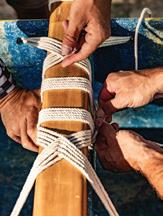
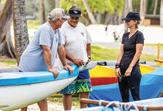
LEFT / Surfer, board shaper and paddler Gordon “Slash” Gaspar with his V1 at Kailua Bay.
Aito, Tahitian teams won back-to-back races in 1993 and 1994, before Hawai‘i reestablished itself, winning nine of the next eleven races. But between 2006 and 2019—when the race was last held before the pandemic—only one Hawai‘i crew took the top spot. Or at least, the top spot in the men’s race: Throughout the 2000s, Hawai‘i teams have won all but two Na Wahine o ke Kai.
During this same period, solo canoe racing has gone global: In Hawai‘i, California and elsewhere, there are races that build up to late
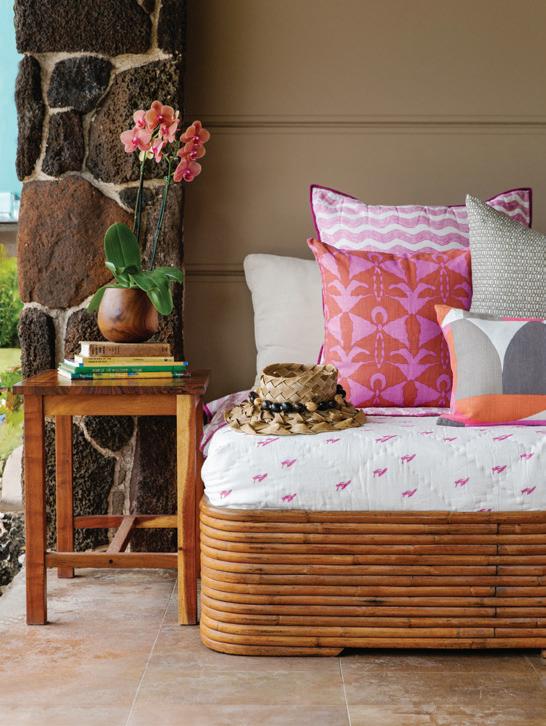
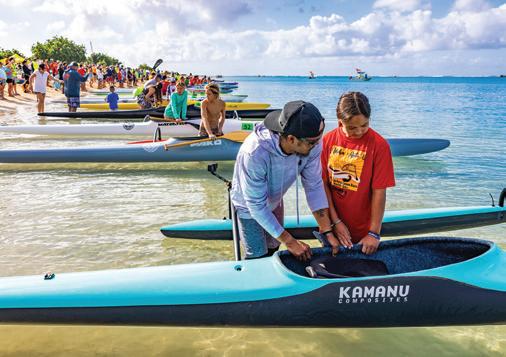
Mekealoha Loo shares some pre-race V1 advice with his 12-year-old daughter La‘akea. “The coolest thing is seeing kids do something that people in their thirties and forties think is too hard,” says paddler Micah Kalama (seen on pages 32–33). “Kids are fearless—it just takes showing them what’s possible.”
spring OC1 crossings of the Kaiwi Channel between Moloka‘i and O‘ahu. The International Va‘a Federation (IVF) World Distance and World Sprint Championships, which are held on alternate years at venues worldwide, include solo divisions racing in V1. In all these races, the Tahitians are the ones to beat.
Down at Kailua Beach, in the parking lot across the street from Buzz’s Original Steak House, a semipermanent, sawhorse-mounted memorial often blocks out one of the lot’s prized spaces, fronting the hale wa‘a (canoe house) shared by Kailua and Kai Oni canoe clubs. Until May of last year, this spot was occupied most days by the white minivan of Joseph “Stuboy” Kanai Kalama Jr.,
a.k.a. Uncle Stu, a.k.a. the Governor of Kailua—Vietnam vet, outrigger canoe paddler, former coach at Kai Oni and fixture at the beach park. This year’s Aloha Aito race, the first since his passing, was dedicated to his memory.
Two or three times a week since last September, a growing flotilla of V1s has been heading into Kailua Bay and out toward where Uncle Stu’s ashes are scattered, near Popoi‘a (a.k.a. Flat Island). This is Team RDRLS Hawai‘i Wa‘a—that’s RDRLS as in “rudderless”—a program founded by Marston and David Kalama. Kalama and his family own and care for most of these canoes, housed either at the Kai Oni site or at the family homestead in Waimānalo. When the V1s are out, Kalama and wife Kim, both lifelong paddlers with decades of coaching experience, watch from the
beach, taking note of each paddler’s technique and giving post-workout feedback. Out on the water, in a black carbon-fiber V1, their son Micah puts the paddlers through their paces. Their grandson, Joevid, helps coach the kids’ section of the program, while others of the family are always around to help things run smoothly.
“So Stuboy is my dad’s older brother, and then their dad is Joseph ‘Stew’ Kalama Sr.,” says Micah, when asked about his family’s canoe genealogy. “Joseph Sr. was a founder of Kai Oni [in 1952] and also of Hui Wa‘a”— one of O‘ahu’s two outrigger racing associations—“and he was also a canoe builder, more on the whole concerned with keeping tradition and the cultural side alive. That’s the line—all my dad’s cousins used to live over at Buzz’s Lane, and my dad’s family was farther up the

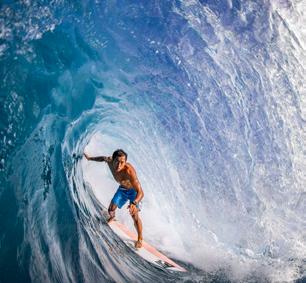

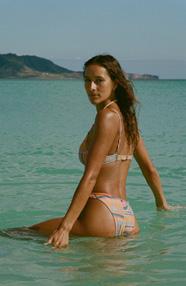
2350 KALAKAUA AVENUE, HONOLULU HAWAII
O’NEILL CLOTHING IS ALSO AVAILABLE AT HIC STORES ON OAHU, MAUI, AND THE BIG ISLAND
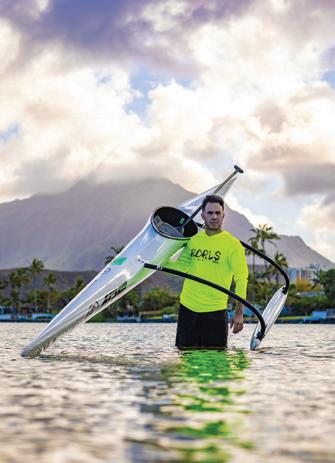
street in the Gramberg house, my greatgrandfather’s place. Kai Oni is the ‘birth club’ for a number of other clubs on O‘ahu and the other islands.”
David Kalama and Christian Marston refer to each other as hānai (adoptive) brothers. Their relationship stems from the Hanalei Canoe Club, which was founded by Kalama’s parents, Joseph Sr. and Shirleyanne, who also loaned the club its first racing canoe. “We used to come over and stay at David’s parents’ house, the whole club,” Marston chuckles. “Hanalei and
Kai Oni and David’s family—it was one big family. David’s dad lived and breathed canoes—that was his life. In my view the Kalama family and the Van Giesons on the Leeward side have done more than almost anyone else for paddling on O‘ahu. … Those two families are so close, they’re like bread and butter.”
How the Kalamas came to be involved in V1 flows directly from Kalama’s relationship with Marston. “So Uncle Christian just shows up one day at my dad’s place with a trailer of
V1s, literally just dropped it off in the yard and said to my dad, ‘Hey, I want you to teach people how to paddle these boats,’” recalls Micah. “My dad’s a carpenter. He was working as a foreman boss on the Leeward side and was already trying to juggle that and refurbishing Kai Oni’s boats, and now we had something like twelve boats, old and new.”
RDRLS was formed not long after, in 2018, at the same time Marston proposed moving Aloha Aito to O‘ahu. “Yeah, I’m sure Micah was thinking,
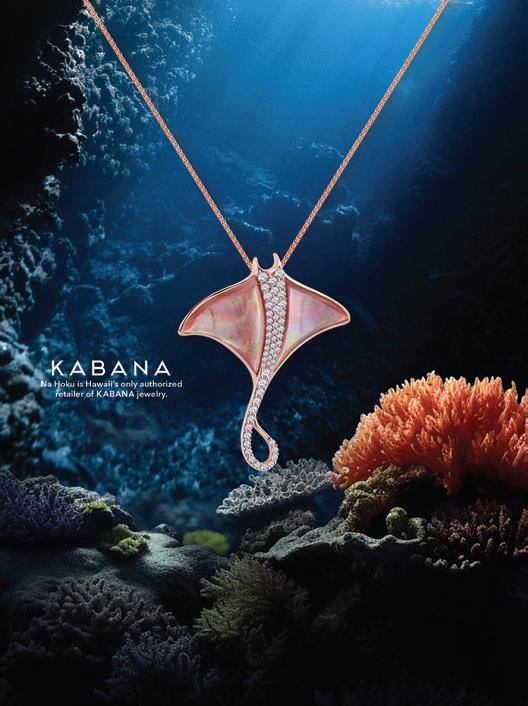

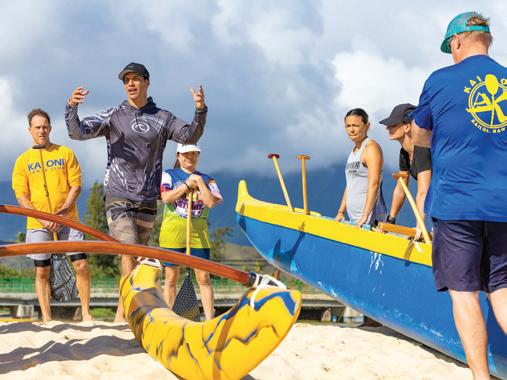
David and Kim Kalama paddled and coached multiple championship crews before returning to Kai Oni Canoe Club, which David’s father helped found in 1952. “I grew up around paddling my whole life,” says their son Micah, pictured above center. “It is definitely not recreation— it’s passing on a legacy.”
‘What is this guy doing?’” laughs Marston when asked to confirm the origin story. “At the time David wasn’t paddling. When I showed up with the trailer, I knew he wasn’t going to be too happy at first. But I also knew that he loves paddling and he loves canoes. He’s one of the few guys out there who can build you a canoe from a log—not just a canoe but a beautiful canoe— that’s a talent that he got from his dad.”
“My dad will spend his whole paycheck to buy a new boat and say, ‘We’ll just get it because we can get a kid on it,’” says Micah. He estimates that RDRLS now has around seventyfive members. “My grandfather was the same way—he was giving koa canoes to clubs in the 1950s and ’60s, just build them and give them away. That’s
also part of Aloha Aito: In Tahitian, ‘te aito’ means ‘the warrior.’ But with Aloha Aito the message is, ‘Everyone can do it; let’s see everyone in a boat.’ Te Aito and Super Aito are two of the most prestigious one-man races in the world. Not many people will ever experience that, but here you can—this is a race for all.”
Each year, the IVF holds its world championships in a different part of the world, with paddlers from as many as thirty-five countries alternating between sprint races one year and long-distance races the next. In addition to hosting Aloha Aito and preparing team members for July’s Race Around the Hat—the other
major V1 race on this year’s O‘ahu calendar, hosted by Keola o ke Kai canoe club in Kāne‘ohe Bay—a near-term RDRLS goal was to qualify paddlers for this year’s World Sprint Championships, which run August 13-24 in Hilo.
But there are longer-term goals, Micah says. “Some people want to do V1 as a tool to be competitive, and that direction is awesome for those who are driven to maybe one day be the best in the world. For us it’s not always about competition. It’s about tradition and history and culture and heritage. It’s about teaching things as simple as how to treat your canoe—don’t drag it on the sand, always face it to the ocean. …That’s something we really focus on: Showing more care and doing it in a more traditional way.” hh


Savor Island style culinary creations from our collection of signature dishes, including fresh fish from our local waters. Every day our chefs go crazy with menu favorite Hook, Line and Sinker specials, delivering an ocean of flavors to your plate. Or try our signature sliced teriyaki steak, and don’t forget to sip and savor hand crafted cocktails to the sounds of live music.
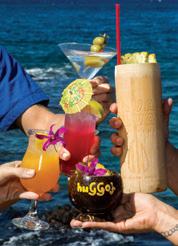


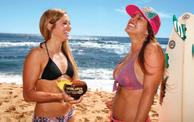
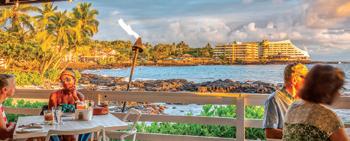







Your eyes might be on the big stars, but it takes more than A-list talent to make a movie or TV show. Whether in a soundstage or on location, sets need to look and feel natural. Often it’s the background actors who create that realism, from extras milling in crowd scenes or day players delivering single lines. Hawai‘i’s legion of background actors and day players might have small roles, but they play a big part in the success of the many productions shot in the Islands.
“When I got the call to audition, they didn’t tell me what movie it was
for,” says Jeremy Gilbert, a classically trained stage actor who moved to Hawai‘i in 2011 with his wife, Wendy Calio, also an actor, singer/dancer and choreographer. Gilbert knew only that the audition would be for a small but intense scene. He landed the part of a tracker who gets chomped by a dinosaur in Jurassic World: Fallen Kingdom. “I’m in the movie for about fifteen to twenty seconds,” Gilbert says. “But I was on set for twentytwo days, and with all of the prep and makeup and special effects, they were sometimes fourteen- or sixteen-
hour days.” Gilbert got the part by pretending (quite convincingly) to get eaten by a dinosaur—he didn’t know what kind.. “I heard a couple of guys auditioning before me who were screaming and going crazy,” he recalls. “The casting director, Katie Doyle, told me, ‘Just try to keep it subtle but also, you know, real at the same time because this is a T. rex biting your head off.” So I just went for it. We did one take, and she said, ‘Perfect! We’re done here.’” In the end, Gilbert’s character met his fate in the maw of Blue, the velociraptor queen.
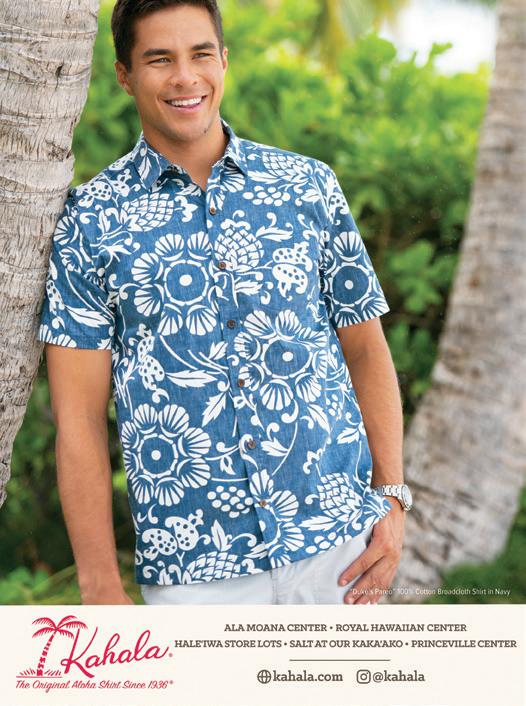
While Gilbert’s experience gives new meaning to the term “bit part,” few small roles are so dramatic. If the job involves any speaking at all (even a solo scream), it’s considered a “principal” role. If there are no lines, it’s typically “background,” that is, the hundreds or even thousands of extras who bring scenes to life without making noise or stealing focus. It might sound easy to be an extra for something like a beach scene or a sports event, but call times might be 6 a.m. or earlier, and an extra might be on set until 6 p.m. or later, portraying random people in a restaurant, at a party or walking across the street. The many productions shot in Hawai‘i every year mean there’s a demand for background actors of all types, as well as “day players”—actors with minor speaking roles who perform their scenes in a single day of shooting.
“There can be a lot of waiting around, but when the camera’s rolling it’s all about blending in, even if you have to do it over and over again,” says background and principal actor David Sikkink. “If you’re supposed to be in the background eating at a shrimp truck or having a burger, you have to learn how to just take tiny nibbles and move your mouth to make it look like you’re really eating. Because you’re going to keep taking that same bite again all day.” Sikkink, an alum of the Minneapolis Children’s Theatre Company, has performed in multiple film and television productions in Hawai‘i since moving here in 2005. “The Beatles may sing, ‘All I have to do is act naturally,’” he says of working as an extra. “But so many times, when people get in front of a camera, they become self-conscious. That’s the hard part, acting naturally and trying not to stand out.” Take after take, they reset and do it again.
Sometimes real-world skills or serious acting chops are required.
“When you’re casting background, it’s always good when you can hire people that actually have the abilities that they’ll be portraying,” says casting director Johanna Bautista, who specializes in finding background talent and actors. “For example, if you’re looking for someone to play a cop on a show like Hawaii Five-0 or Magnum P.I.,
it’s great to hire someone with tactical training, especially when it’s an action scene. Or if you need a football team or soccer team, to get people who actually play football or soccer.” Bautista’s database includes notes on background actors’ special skills, training and other attributes. For the latest Taika Waititi film, Next Goal Wins, about the national soccer team of American Sāmoa, “We needed to hire tons of people who could actually play soccer,” Bautista recalls. “So we scouted all over the island looking for Pacific Islanders or Polynesian people who had some soccer experience.” (Those interested in putting their names on Bautista’s list can sign up at hawaiicastingondemand.com.)
Playing the part might mean more than running on a field in a sports jersey or storming a beach with an invading army. Background talent can make a tangible difference in the feelings evoked in a scene. Extras have to convincingly express joy, fear, panic, rage—and they have to do it without making any noise at all.
“If you’re drinking and chatting with friends in a bar or restaurant scene, you have to move your lips like you’re talking, but you’re really not speaking the words. You’re just mouthing nonsense phrases like ‘peanut butter and jelly’ or ‘green eggs and ham,’” says Sikkink. “You could be in a scene where there’s some disaster happening and you have to run down the street in a panic, but usually you would just be making the facial expressions and not actually screaming.” Even something like putting a coffee cup down on a table or using silverware has to be done silently, so that the microphones capturing dialog from the principal actors won’t pick up the clink.
Extras also often have to move in patterns that aren’t intuitive while trying to make it look normal. “Sometimes the director or assistant director will tell you, ‘This is what I’m going to need you to do,’ and you have to follow those directions exactly,” Sikkink says. Failure to get it just right can cause problems and delays on the set. “Even something as small as crossing too close to the principals could potentially kill the scene, or not walking in what we call a ‘banana curve,’ where you’re literally walking in the shape of a banana. It looks like a

straight line on camera but you’re really moving in an arc.”
Getting the background to look just right takes time and talent. There can be intricate choreography, elaborate costuming and storylines that require a group of extras to perform as a collective. “For big scenes with a lot of background, I like to get everybody together and explain what the scene’s about, what they’re supposed to be feeling and thinking, so they can really get involved,” says producer and director Bryan Spicer, whose credits include more than two hundred episodes of Hawaii Five-0 and Magnum P.I. Since extras can’t usually read the script, they often don’t know what’s happening in the story, so the directors’ guidance is essential. But when it’s not possible to direct each background actor individually, they have to wing it. “We once did an episode of Hawaii Five-0 with a period scene, where we had to re-create an invasion of pirates,” Spicer recalls. “So we got all the background performers together, explained the scene and gave them all permission to find their inner pirate. If you want to limp or have an eye patch, or whatever you want to do, make it your own. That way they create their own character and become invested in the story.” When the cameras rolled, the pirates marauded each in their own way, but collectively in character.
“The number of extras needed for a typical show is a lot larger than people may realize,” says Shayne Hartigan,


owner of Alessi Hartigan Casting, who’s been involved with several large-scale productions in Hawai‘i. “On any given production you may have twenty to thirty principal actors, but on the background side you could be looking at anywhere from five hundred to a thousand.” Hartigan estimates that shows like Magnum P.I. or Hawaii Five-0 average 750 to 1,000 extras per episode. “On shows like Magnum or Five-0, we’d sometimes have large scenes needing military servicemen and women as background, like for a funeral scene with an honor guard,” Hartigan says. “We would hire real honor guards to re-create these scenes, do a full service, and sometimes have crowds upward of four hundred people. We’d always try to work with liaisons from the military branches to offer those background roles to actual military personnel and their families.”
With so many people involved in so many aspects of background, keeping them coordinated and costumed can be challenging. “Sometimes with Magnum P.I. we’d be shooting multiple scenes simultaneously with multiple crews,” recalls Anne Selby, an actress and set costumer who’s been on both sides of the camera. “As a costumer I could have twenty-five background actors in one scene playing bar patrons and they all need aloha wear. And then I’m running over to the other set, where we’re shooting a cop sequence where everyone needs to be in full police gear.” She would photograph each actor’s outfit for approval by the head costume designer. “I love the background actors,” Selby says. “They really work hard. But I felt like I needed flies’ eyes because I had to watch them all and make sure nobody spilled food or drinks on their costumes.”
Sometimes, with experience, extras become principals. They might climb the ladder to become a “featured extra,” someone who figures significantly in a scene, or a day player with a line or two of dialog, or a stand-in for a principal during tedious lighting and scene blocking processes. Jeri Lynn Endo never thought she’d end up so involved in acting. “My only experience was being in a school play in fifth grade,”
she says. “After that I had nothing to do with acting for the next thirty years.” Then one day her husband was working on a film crew for the movie Picture Bride. “They needed families to appear as background, and we had two young boys,” she recalls. “So we went to work that weekend as extras.” After the scene wrapped, Endo went back to her work at Kap‘iolani Medical Center and family life. “But later I ran into the casting director and she said, ‘Where have you been? We have something else for you.’” Endo worked as a double for lead actress Tamlyn Tomita in scenes where Tomita had no dialog and didn’t need to be recognizable.
Endo parlayed that experience into becoming a regular and sometimes featured extra on other productions. She played the mother of Chin Ho Kelly (Daniel Dae Kim) in Hawaii Five-0. She’s performed in a number of local productions and appeared in commercials for Hawaiian Airlines and others. Endo had a leading role in the 2016 independent local short “Aloha Vegas,” which was produced by student filmmakers at the University of Hawai‘i’s Academy for Creative Media and screened at the Hawai‘i International Film Festival. Endo has since become active in the local film production and independent filmmaking community, serving as a volunteer coordinator at the Hawaii Filmmakers Collective. Many other Hawai‘i-produced independent films also feature local actors transitioning from background to principal, and provide opportunities for students and professionals aspiring to act, write, produce and direct. In 2020, filmmaker and actress Deborah Glazier of Windward Films even made a short film, “Extra,” which portrays the drudgery and dreams of a background actor in Hawai‘i.
“Local actors, artists and filmmakers are doing incredible work, not just in movie and TV features and short films but also new and alternative media like streaming and web content, even game development,” says Georja Skinner, chief officer of the Creative Industries Division (CID) of the Hawai‘i Department of Business, Economic Development and Tourism. “Our local film community and offshore productions
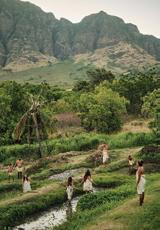
validate that here’s a constant need for background.” Skinner has worked with producers with roots in Hawai‘i like Angela Laprete, who recently wrapped the upcoming Apple+ series Chief of War featuring Jason Momoa, to focus on development and training for Hawai‘ibased performers and producers.
For those who already work in the industry and want to keep their skills sharp or for those who want to get involved, there are local resources both through the State of Hawai‘i and the Screen Actors Guild. “CID, UH community colleges and SAG-AFTRA offer training for actors on an ongoing basis, from background all the way up to speaking roles,” Skinner says. “You might not realize it, but background plays an essential role, and good background acting takes practice. It’s like going to the gym—you have to keep your skills up to really hone the craft.” The state’s Creative Lab Hawai‘i program provides free panels, workshops and immersive mentorship programs for actors and others in the creative arts. “It takes a lot to look natural on camera,” Skinner says. “You may think it looks easy, but it’s not.” hh

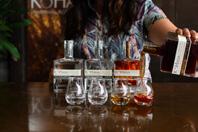



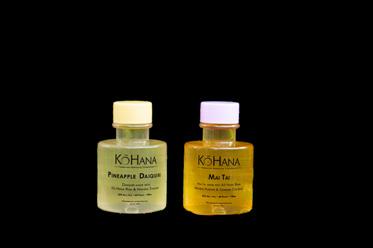

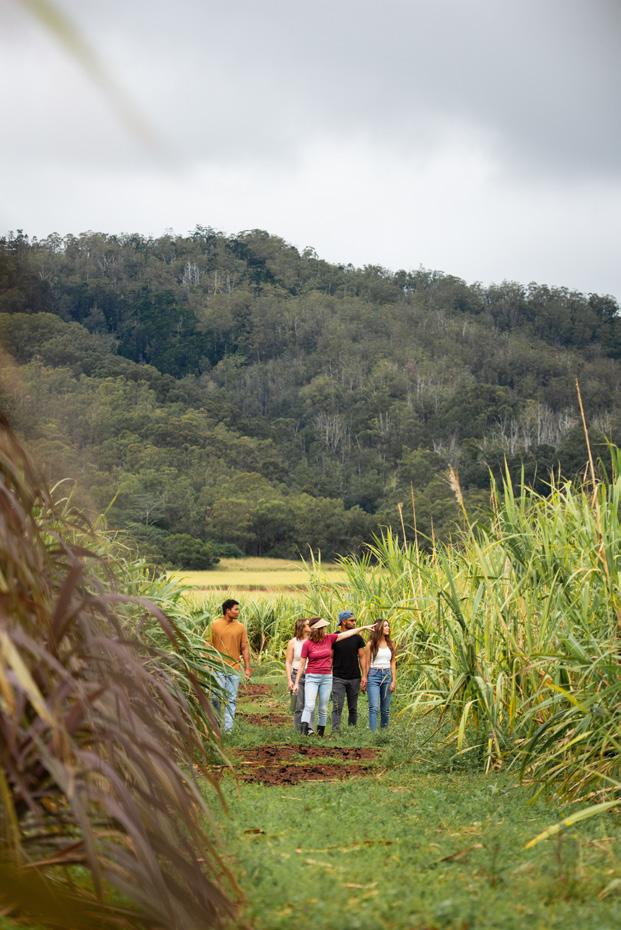

Lost &
Whatever hikers get themselves into, the Honolulu Fire Department gets them out
Halfway up O‘ahu’s Ko‘olau Mountains, Ian Snyder made his peace with God. The 34-year-old hiker from California had rolled hundreds of feet from a ridge and smashed into a shelf below, breaking his elbow, finger and a cheekbone. Consciousness came and went, only faintly registering the dull roar of engines on Pali Highway in the near distance. There was no going back up. Below, no way down except by waterfall. Snyder dragged himself to a spot between two rocks for shelter, close to a trickle to drink from. His two phones, which had gotten wet, were dead. “I remember day, night, day, night,” he says. Then he lost count. “I remember praying for a rescue and thinking, ‘If this is it, I’m content to go.’” He could hear planes passing far overhead.
Then, three days after the fall, he heard the shudder of helicopter blades. A yellow-bellied machine floated into view. Snyder waved.
“He’s waving,” the pilot, Zach Potter, said over the radio.
“He’s alive?” said Chris Johnson, the firefighter sitting opposite him.
Adrian Cravalho, a fire rescue captain on the ground nearby, also couldn’t believe it. “He’s waving at you?”
STORY BY JACK TRUESDALE

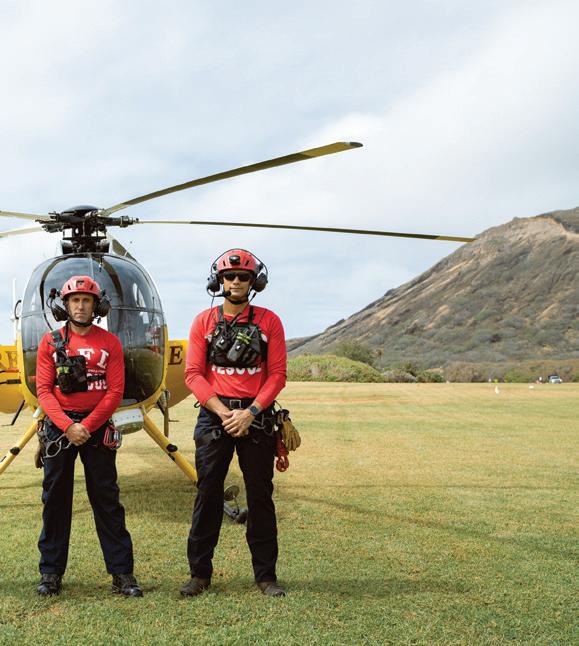

Hawai‘i’s ridges, like Kalepa Ridge on Kaua‘i
before you know it, you need rescuing. On the opening page, Honolulu
and Chris Johnson have all received special training to rescue lost, injured or
Snyder hadn’t shown up to pick up his kids from school that week, so his family filed a missing person report. Before he fell, he had, like countless hikers before him, posted videos of Hawai‘i’s grand, green peaks to social media. Police tracked the location of the device posting the videos, and that’s where rescue firefighter Lanson Ronquilio was driving the firetruck that Thursday afternoon. In the back of the truck, Ramsey looked through Snyder’s posts, trying to calculate his probable trajectory. When they arrived at the Nu‘uanu Reservoir, the firemen put on their red helmets and red long-sleeves and pulled their harnesses up around their waists.
The helicopter arrived, and rescue fireman Shaun Forges and Johnson climbed aboard. Potter flew to the location the police had sent, and the team searched from the air for half an hour before Forges rappelled down to the site to keep searching. He found a Clif Bar wrapper, then what might have been the path of a sliding object. “Our
mindset was that we would find a body rather than a live person,” Cravalho says. So the whole team was shocked when that body waved, a few hundred feet from where they’d been looking.
Potter flew over to pick up Forges, dropped him back at the landing zone and picked up Ramsey. When they returned, Johnson lowered Ramsey on a rope onto the ten-foot-wide ledge. “He was surprisingly coherent”—he remembered his name—“but he was injured and he wasn’t gonna be moving anywhere,” Ramsey says. “If we didn’t find him, I don’t know how long he would have lasted.”
Ronquilio followed, and the two firemen packed Snyder into a Stokes basket, a portable, hard-backed stretcher. “I couldn’t wrap my head around the fact that the guy was alive,” Ronquilio said. “As far as disbelief goes, it was a ten.” They belted him down across his chest, hips and legs. They clipped straps into a carabiner centered over his navel, then secured the rope descending from the chopper. Ramsey clipped himself in and sat next
to Snyder. As the helicopter ascended, the inescapable ledge below grew smaller and smaller until it was gone. “I remember flying through the air. I remember getting chilly,” Snyder says. “And the guy said it’d only be a minute.”
More than a century ago, across Nu‘uanu Valley from where Snyder fell, three men—one of whom was “the expert trail and mountain man of the outdoor promotion committee”—barely survived a hike up Lanihuli, the distinctive spire just north of the Pali Gap. In February 1915 they attempted “a route never before essayed” and, with “but one lunch among them,” tried a shortcut along a “razorback ridge,” the Hawaiian Gazette reported. By nightfall they ended up on a ledge, looking five hundred feet down on three sides to the valley below. They crawled back and, gripping onto trees growing at right angles from the mountain, reached a less daunting cliff of a mere hundred feet. The next day, the famished trio crawled up to the summit where, upon seeing a man from a rescue party bearing food,
Experience our Hawaii
Whether you want to fly high above the clouds, hike to a waterfall or snorkel with our sea life, adventure awaits.











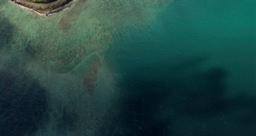
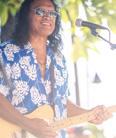
Hawaii’s premier live music venue Year-round entertainment
Daily live island music paired with handcrafted beers and cuisine
Home of Duke’s on Sunday with the incomparable Henry Kapono 4–6pm
Come be here.
Discover our experiences and find the places where Hawai‘i’s most renowned artists come out to play.

they “almost fell down the steep trail in their eagerness.”
“There are places on that alleged trail that are absolutely dangerous, and either a trail should be cut up through this wonderful glen or a notice posted forbidding people to use the trail,” one of the rescuers, Alexander Hume Ford— who taught Jack London to surf and founded the Outrigger Canoe Club—told the paper. “We must have an outdoor man that knows the trails thoroughly from personal experience, and how to guide and instruct our young students so that no mishap will occur.”
In those days the Trail and Mountain Club often sent its members to search for wayward hikers. But eventually the responsibility fell more regularly to the Honolulu Fire Department’s rescue crews.
In 1934 the Honolulu Star-Bulletin covered the rescue of a ten-year-old boy and two friends who had set out for a swim at Mānoa Falls. “FIREMEN RESCUE MORRIS BOY; YOUTH NOT HARMED BY A NIGHT OF EXPOSURE,” read one of the paper’s front-page headlines. “FRIENDS DEAD AFTER PLUNGE FROM A CLIFF,” read another. “Lad Says He Had ‘Swell Night’ On Manoa Ledge,” read a third, less emphatically. At the time, said lad was “unaware of the fate of his two companions,” and the rescuers had just given him hot coffee.
In 1948 a Honolulu Rapid Transit driver named Donald Kennedy hiked up behind Wilhelmina Rise and got lost. After a day and a night wandering, just past midnight, fire rescue teams found him headed for a streambed. Even the experienced hikers of the Trail and Mountain Club sometimes got into trouble. In 1959 fifteen of its members hiked into Kahana Valley and got stuck overnight on a ridge no wider than a foot. They sang to stay awake, for “to doze off meant death in a plunge hundreds of feet to the floor of the valley,” the Honolulu Advertiser reported. By the time rescuers began trekking up the valley the next morning, however, the hikers had made their way out “under their own steam.” One of the lucky told the paper, “I’ve been stranded on a mountaintop before, but it wasn’t as dangerous, wet and slippery as this one.”
Despite the intervening decades of society’s breakneck advancement, the rain continues to fall, the rocks still crumble and gravity is always bringing us down. In the past decade, hikers on O‘ahu’s trails have continued to fall and die: the ‘Ohana and Mahalo Trails (2023), Lanikai Pillbox (2023), Maunawili Falls (2021), Mā‘ili Pillbox (2021), Lulumahu Falls (2020), Punalu‘u Castle Trail (2017), Luakaha Falls (2017), Pu‘u Manamana (2016) and Mānoa Falls (2016). Perhaps the most fatal trail, the three-peaked Olomana hike on the Windward side, is a prime example of the problem’s insolubility. The best the island’s bureaucrats could do—short of closing and strictly guarding the trail—was erect a sign at the trailhead two years ago: “ATTENTION Olomana Trail Users,” it reads. “Six people have fallen to their deaths after hiking past the first peak.”
The particular fruit of modernity that might be most responsible for keeping fire rescue teams busy? “Instagram,” deadpans Ronquilio. His crewmates laugh. “Can’t believe everything on Instagram,” Cravalho adds. Nearly twenty thousand posts are tagged #olomana on the social media app, showing hikers standing on or scaling the trail’s promontories and knife-edge trails.
While Olomana is the deadliest, it’s not O‘ahu’s busiest spot for the fire rescue crews. The title, at least for the start of 2024, goes to Lulumahu Falls, a popular but slippery hike in Nu‘uanu, followed by the Lanikai Pillboxes in Kailua and then a tie between Diamond Head and Koko Head. Last year, when the fire department recorded 290 “highangle rope rescues,” Lulumahu Falls was again the busiest, but Diamond Head beat out Lanikai Pillboxes for second. In 2022, a year with 242 rope rescues, Diamond Head beat out Lanikai Pillboxes and Koko Head.
Honolulu Fire Department (HFD) rescue crews cover the entire island and its surrounding waters out to three miles. The division has two trucks, three watches and thirty rescuers total. (Other specialized divisions in the department include the helicopter team and the hazmat team.) To take the rescue exam, firemen must have
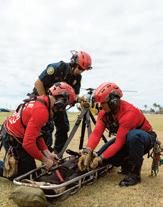
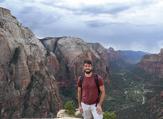
BOTTOM / Ian Snyder, pictured in Zion National Park more than a year before his fall while hiking on O‘ahu. Snyder, an experienced hiker, went astray following Google Maps and fell hundreds of feet from a ridge in the Ko‘olau Mountains. Injured and trapped on an inaccessible ledge, Snyder miraculously survived for three days before firefighters reached him by helicopter.


worked in the department for at least four years and typically have had up to a year of specialized training. Those who pass go through an interview process and a rescue agility test. If HFD gets a call that someone’s stuck somewhere they can’t get themselves out of, they go. They’ve rescued people stuck between cement walls—a six-year-old boy whose leg was caught and a homeless man. A teenager running down the Koko Head stairs tripped, fell and blacked out; they flew the helicopter over, rappelled down and pulled him out. A Russian man was stuck on the Ko‘olau ridge at night; HFD came and got him. More recently, Ramsey and Forges had to hike some five hours to retrieve a young man abandoned by his friends and escort him back down; he wasn’t injured—just lost, scared and alone.
The danger to the rescuers is obvious. More than a year ago, Ramsey and Ronquilio rappelled from a helicopter to a steep slope on the third peak of Olomana. A hiker had fallen two hundred feet, and the firemen, to make sure they themselves wouldn’t fall, tied up to trees on the slope as they tried to rescue the man, who was himself just a nudge away from another, longer drop. The man was “technically alive still,” Ramsey says, but wouldn’t be for long. Despite the danger, the effort to save a life—even when it doesn’t work out, which sadly in this case it did not—is worth it for them.
Social media users who think with their thumbs often take to the internet to indict those whose poor decisions outdoors necessitate a rescue. They advocate for saving taxpayer dollars, for
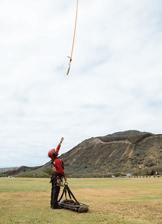
ABOVE / Ramsey reaches for the helicopter’s rope during a practice drill at Sandy Beach.
LEFT / Kamaka‘ala practices rescuing Johnson in a folding triangular harness nicknamed the “diaper,” a method for hoisting victims who have not suffered a spinal injury.
better allocating scarce resources and for the safety of the rescue personnel. For years, some Hawai‘i lawmakers have proposed charging negligent hikers for rescues, but fire officials oppose this, worrying that those in need will hesitate to call for help. The fire department, meanwhile, budgets for rescues. “We exist to do that job,” Ramsey says. “We’re happy to do our job—and find people alive. There are circumstances where maybe we’ll feel this person really endangered themselves and other people,” Ramsey says. “But that social media thing can be funny; it can be frustrating to read.”
Not long after Snyder’s rescue, three of the crew set out to rescue a young man stuck on a steeper cliff well above Snyder’s landing. Forty mph winds blew out of the south, and the

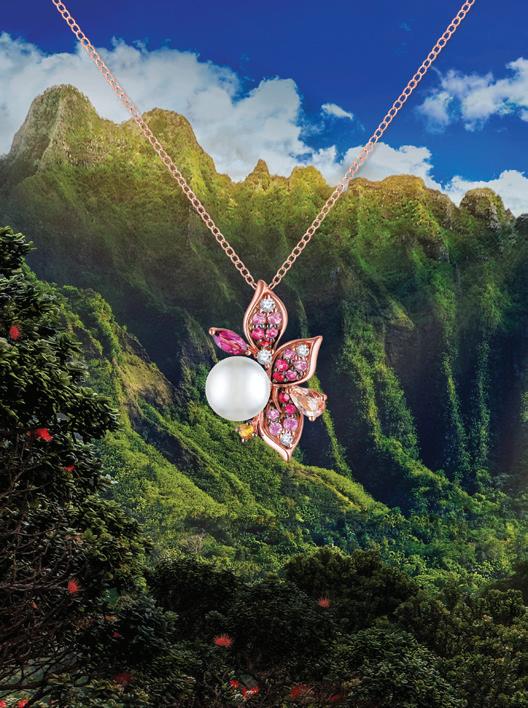



summit was ringed with clouds. “So one, you’re on a trail that’s not sanctioned, and two, it’s one of the worst days, weatherwise, to go,” Cravalho says. The helicopter, able to travel only so far, dropped the three men, who proceeded to climb a steep and risky section to reach the hiker. They realized they couldn’t go back the way they’d come, so they hiked another three hours to get him out. “Those are the kinds of calls I would say that we were put in more of a risky situation than we needed to be,” Cravalho says.
Snyder’s saga has been turned into a public service announcement. Less than a week after his rescue, he walked, slowly, into a meeting to thank the firefighters who rescued him. He wore a purple lei, and despite the cane in his hand, his arm in a sling, the gash on his forehead and his eye swollen shut, he smiled. He told his story to some of the media in attendance and used the opportunity to discourage hikers from using Google Maps for trails, as he had. By the time Snyder was back home in California, he was contacted
by the communications director for the Hawai‘i Department of Land and Natural Resources, who flew out to film a “lessons learned” PSA. One of those lessons: Don’t hike alone. By March, Snyder was back to hiking and running. “Once I finally got to the chiropractor and straightened out my spine again, I slept quite well,” he says. Vision in his right eye remains a concern.
Even with a century of hikers getting stuck and no dearth of cautionary tales, the problem might still be getting worse. “Ever since Ian’s story
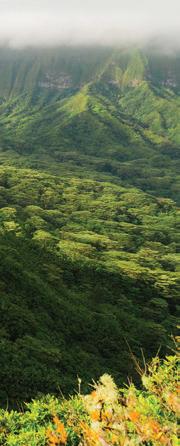

came out, I feel like we’ve gone on that same trail more. Prior to his incident, we hadn’t gone on the trail,” Cravalho says, proving that curiosity can kill the copycat. “And I noticed, actually, a few of the calls that we’ve done are collegeaged kids, and they stated to us that they’ve done it multiple times recently.” Johnson, one of the firefighters who first spotted Snyder alive, knows it’s all part of the job. “We’re not upset that we get put in those situations,” he says. “If we don’t figure it out, no one else will.” hh

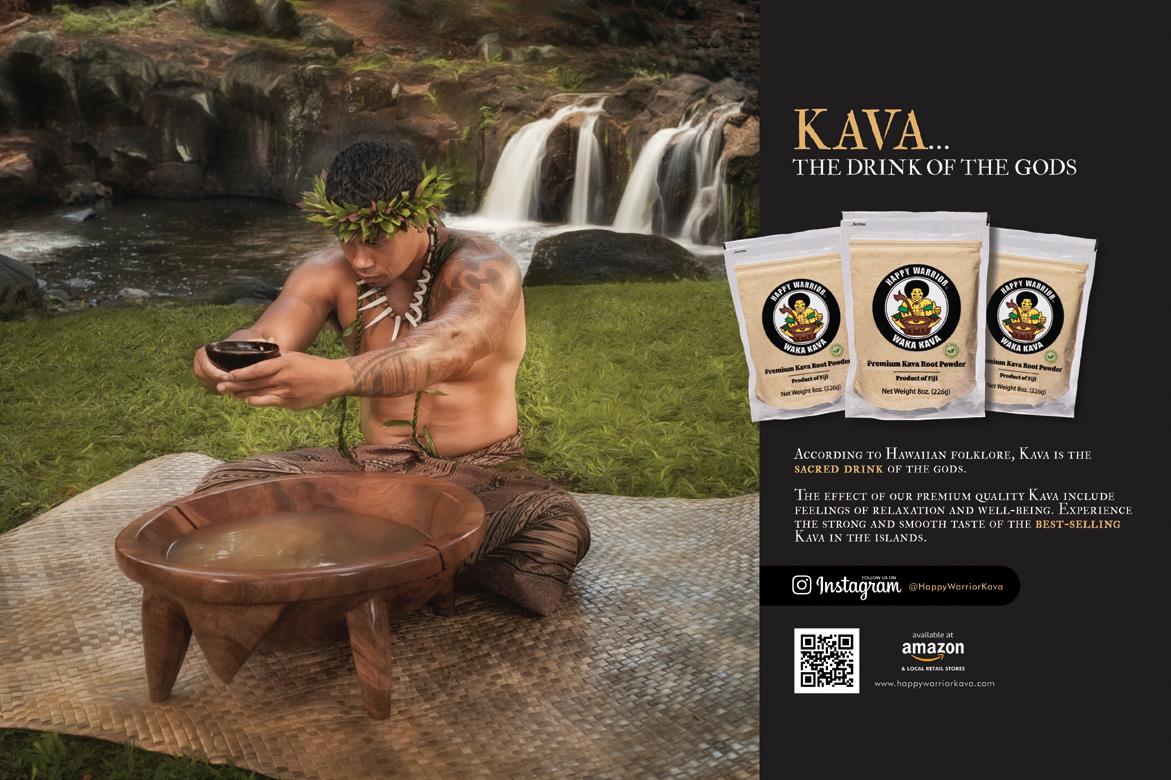

STORY BY SARAH ROSE
BY MICHELLE MISHINA
Outside of Islands, aloha wear is the most globally recognizable symbol of Hawai‘i, except maybe for the pineapple. A bright, tropical design printed in repetition on a lightweight shirt with its tail untucked or onto a loose-fitting dress has near universal, iconographic status: It says Hawai‘i Barely a century old, aloha wear is enduring—it might even be eternal. There may be no clothing more recognizably anchored to a place than aloha wear: It’s hard to even imagine a Hawai‘i without it. It is fashion that tells a single story, of tradewinds, swaying palms, rolling waves and happy beachfront memories.
Or, as Tory Laitila wryly calls this type of aloha wear, “the wearable postcard.” Laitila is the curator of textiles and historic arts of Hawai‘i at the Honolulu Museum of Art (HoMA). He’s the driving force behind Fashioning Aloha, a major exhibition running from April 12 to September 1 showcasing the variety and range, the history and politics, the influences and inspiration of Hawai‘i’s signature style over the past ninety-odd years. But as the exhibition makes clear, aloha wear goes much deeper than the postcard image of Hawai‘i: It tells the story of a remote Island nation at the nexus of rapid global
change, economic development, political upheaval, cultural revival and maybe above all, the love of a place.
Fashion’s vagaries have left aloha wear largely alone for most of its existence: In a century when Paris runways have swung between poodle skirts and miniskirts, and menswear traveled from top hats and tails to no shirts, no shoes, no service, the mu‘umu‘u and the aloha shirt have maintained a kind of consistency that appears to defy fashion gravity. And yet, the tropical prints of aloha wear have been adopted by those very same couture houses, such as Valentino and St. Laurent.

While the prints have changed over time, aloha wear comes down to two primary styles—the aloha shirt and the mu‘umu‘u—which have remained remarkably consistent in shape and style over the past century. That said, how do you define aloha wear? Laitila’s answer is deliberately broad: “It is clothing from or sourced in or for Hawai‘i that expresses affection or affinity to Hawai‘i,” he says. That covers a lot of ground, to be sure. While the outfits might not change much relative to the runways, the layers of meaning packed into all of that aloha have expanded and evolved over the last century.
The origin story for the aloha shirt is quintessential Hawai‘i: Like any myth, it is a composite, contested and complicated. In the 1930s several tailors asserted authorship for the original aloha shirt—the repeating print fabric, the loose-tail shirt—but no single claim bears out any proof. Aloha shirts have many parents, whoever might have stitched the first into existence; it is a multiethnic mix unique to Hawai‘i, as so many things in the Islands are.
Aloha wear began with the demands of an island economy. Sourcing cloth in the middle of the North Pacific, half a world away from mills and factories, was a gamble in the days before telegrams, telephones, the internet, steam engines or airplanes. Written orders went out to Manchester, Tokyo or New York by ship; many months later bolts of trade cloth arrived (or didn’t) in Hawai‘i’s ports. Tailors got what they got. Part of Hawai‘i’s historic genius has always been its resourcefulness and its ready adoption of the novel, taking up new technologies, fashions and trends, and running with them.
Through the nineteenth and early twentieth centuries, Hawai‘i’s sugar and pineapple plantations, ranches, cities and homes were growing, and along with them the demand for sturdy yet lightweight clothing. The prints and
fabrics tailors received might have been a surprise, but so long as they were useful, cool and functional, they’d make do with what they got. So maybe it was a repeating yukata print, a lightweight cotton kimono cloth from Japan, that became the first aloha shirt. Or perhaps it was a pareu print, an English fabric imported to Tahiti in solid colors with large, white floral motifs. Aloha wear grew out of a cascade of choices and accidents made by merchants, millers, tailors and consumers.
As tourism took off with the rise of air travel in the 1930s, aloha wear too took flight. What were once functional uniforms for a remote, agrarian economy became a souvenir fashion icon recognizable around the world for nearly a century.
The exhibit was inspired by the personal collection of Linda Arthur Bradley, professor emerita from the University of Washington and prior to that a professor of apparel and product design and merchandising, and curator of historic costume and textiles collections at the University of Hawai‘i at Mānoa (as well as Laitila’s professor when he was an art history graduate student at UH). Bradley donated thirteen items and loaned three to HoMA, ranging from an Alfred Shaheen holokū (gown) to a Keoni aloha shirt from the 1940s to a vintage Waltah Clarke shirt from the 1960s.
The HoMa exhibit is organized by themes rather than a sequential history; the aloha wear on display is categorized into visual motifs, such as floral or Asian prints, but also into items that give a sense of Hawai‘i as a place, both unto itself and also as a part of Polynesia, recognizing the role that pareu fabric and kapa (bark cloth) played in the emergence of distinctive aloha imagery.
Japanese fabrics were most easily available to earliest aloha wear tailors; common prints might be birds, landscapes, flowers or other East Asian themes such as dragons or woodblockprint treasure ships. For the exhibit,


OPENING SPREAD / The Lokelani Quilt Holokū, part of the Honolulu Museum of Art’s Fashioning Aloha exhibit, is a latenineteenth-century-style dress holokū (gown) that celebrates traditional Hawai‘i quilts, specifically the lokelani (rose) motif.
TOP / Gulab Watumull was a pioneer in garment manufacturing in Hawai‘i. His family started the East India Store, which became Watumull’s. In 1955, they acquired Royal Hawaiian Manufacturing, which helped popularize aloha wear around the world.
BOTTOM / Fashioning Aloha’s interactive design studio, where visitors can create their own aloha wear designs.
FACING PAGE / Nake‘u Awai is often hailed as the “Grandfather of Hawai‘i Fashion” for being the first Native Hawaiian designer to create prints using indigenous motifs. A mu‘umu‘u, sport coat and aloha shirt by Awai are on display.




these items are showcased in relief against artwork that might once have inspired them, such as original prints from the Japanese printmaker Hiroshige, donated to the museum by writer James Michener.
Floral abundance and Hawaiian hospitality was a connection encouraged by the tourism industry’s early publicists: Hibiscus and plumeria prints alluded to the lei bestowed on visitors’ necks upon disembarking in the Islands during the “boat days” era beginning in the late 1920s, a period when interest in the Islands was spreading across the United States, promoted in part by traveling Hawaiian musicians and by the new medium of film. Each shirt and dress printed with plumeria, pineapple or palm frond then went back to Kansas, California or Connecticut, telling and selling a story of a tropical paradise. A place to return to—and to spend on.
As manufacturers began to employ Island artists to design prints, the iconography on aloha wear expanded to include themes specific to Hawai‘i. Soon there were shirts celebrating impossibly muscled Waikīkī surfers, ‘ukelele, outrigger canoes, hula dancers in gravity-defying grass skirts—images that reflected the Pacific idyll that visitors had come seeking.
But what aloha wear was not for the first fifty years of its existence was Hawaiian. Native culture had been largely omitted from the Island fairy tale that aloha wear alluded to. It was mostly marketed toward the visitor and the transplant, not the Natives. When locals and Native Hawaiians did don aloha wear, it was mainly for special occasions, largely because of the expense; for Island people, aloha wear was like their Sunday best. It wasn’t until the 1970s, as Native Hawaiians became energized to preserve and perpetuate Hawaiian language and culture, that aloha wear evolved to include truly Indigenous influences; the Hawaiian Renaissance saw a growth in prints celebrating kapa, kahili feather standards, Hawaiian quilts or traditional everyday objects and tools such as poi pounders.
“From its inception, aloha wear was made for the tourist community,” says Andrew Reilly, a professor of fashion
design and marketing at UH Mānoa. “It represents really nothing Native Hawaiian in it.” For Fashioning Aloha, HoMa pointed to this absence: The exhibit shows how a tourist souvenir can evolve into a wearable political statement for Native Hawaiians.
Nothing can ever be truly suppressed, as any Freudian will tell you. While it might take a keen eye to recognize Native influences in the earliest examples of aloha wear, they have always been there. Repeating patterns on locally made fabrics exist in the very earliest examples of Hawaiian garments we have: kapa. Prior to European contact, Pacific Islanders wore layers of bark cloth—stripped from the tree, soaked, pounded, dried and then stamped in geometric patterns with natural dyes in a range of colors, from the bright yellow of ‘ōlena (turmeric) juice to the earthy red of ‘alaea (clay).
So, a foundational notion of repetitive printing is indigenous to Hawai‘i clothing, as the exhibit demonstrates with several antique kapa pieces, both stencil-printed and freehand-painted. Captain Cook wrote about kapa in his journals just after he arrived in Hawai‘i in January 1778: “The malo [loincloth] worn by the men is a long strip of thick cloth, ten or twelve inches wide, and curiously stained with red, black and white.”
Today, curators and designers alike hope to make Native influences explicit. Aloha wear might now integrate kapa designs or reprint broadsheets from nineteenth-century Hawaiian language nūpepa (newspapers) or include explicit statements about the overthrow of the Hawaiian monarchy. This kind of aloha wear “is not about tourism,” says Native Hawaiian designer Kanoelani Davis of Pomahina Designs, whose prints are inspired by indigenous Hawaiian plants, such as ‘ōhi‘a lehua and ‘ōhai, “but to share mo‘olelo [stories], preserve our culture and resources, and to retain the language and lost names.”

ABOVE / Roberta Oaks, aloha wear designer and owner of the eponymous Chinatown boutique, working in her home studio.
FACING PAGE / Tory Laitila, curator of Fashioning Aloha, wearing “Kaulana Nā Pua” by designer Kenneth “Aloha” Victor.
There are academic and pop histories of the aloha shirt, most notably by local historian Dale Hope, that cite these early Native
influences. You’ll find his coffee-table tome The Aloha Shirt in hotel suites throughout the state, but missing from this history or given only glancing treatment is the history of aloha wear for half the people who wore it: women. The evolution from a breezy, printed housedress to an Aloha Friday staple is not hard to trace in the mu‘umu‘u. Early nineteenth-century missionaries insisted God-fearing Native women must be fully clothed. The earliest mu‘umu‘u—a long, loose frock—was created to mimic the undergarments of missionary women. For the ali‘i (chiefly) women, wearing Western clothing became a way of displaying wealth and status; the mu‘umu‘u was the underdress for women, and the holokū, or gown, was the unstructured outer garment. (One etymology of the word holokū suggests it may be a portmanteau of two Hawaiian words: holo, to go, and kū, to stop, words that Native seamstresses might have used when running needle and thread or, later, turning the wheels on early sewing machines.)
Elegant and tailored today, holokū are seen far less often than mu‘umu‘u;

Asian
items that give a
they’re typically worn only on formal occasions—a prom, wedding or cultural event such as the annual Merrie Monarch hula festival. On first look, the holokū and its younger sister, the holomū, share the corsetry and internal structure of a couture gown. The holokū is said to imitate the long, flowing train of the Hawaiian ali‘i. While trailing yards of fabric behind you looks fantastic onstage or in photos, it’s awkward for walking around. So in 1949 the holomū became the compromise: a tailored floral gown with a wide box pleat at the back that offers almost all the fun and flourish of a train. You feel like royalty when you wear it.
If the overthrown Hawaiian kingdom is indirectly referenced in the holokū and holomū, today’s aloha wear is often openly political: The mayor of Maui County, Richard Bissen, attended a press conference after the Lāhainā fires wearing an aloha shirt with the word “kū‘ē” printed on it, which can mean oppose or resist. Hawai‘i’s US
Representative Jill Tokuda similarly wore a kū‘ē-print top to a hearing in Washington DC regarding the Navy’s catastrophic fuel leak at Red Hill, which contaminated O‘ahu’s drinking water. The print has an explicit historical connotation, according to the shirt’s designer, Kenneth “Aloha” Victor: The repeating design includes signatures from what is known as the Kū‘ē Petitions. In the late 1890s the majority of the Hawaiian kingdom opposed the annexation of Hawai‘i by the United States; 95 percent of the Native adult population signed the Kū‘ē Petitions, which were hand-delivered to the US Senate.
Petition prints are recent arrivals in aloha fashion, but aloha wear has historically been political if not so politicized, says Christen Tsuyuko Sasaki, whose grandparents founded Malihini Sportswear, an aloha wear firm once seen in retail stores such as Lord & Taylor and Sears. The mass tourism that gave rise to aloha wear in the wake
of World War II is inextricably tied to America’s Cold War-era military buildup, Sasaki says. Tourism is Hawai‘i’s largest industry, representing about a quarter of the local economy, but the US military comes in a close second, at 20 percent. The engine for the explosive growth of tourism was America’s military, writes Sasaki in “Threads of Empire: Militourism and the Aloha Wear Industry in Hawai‘i.” Pink sunsets and tiki drinks printed across a shirt can be read as a fantasy cloaking the reality of Hawai‘i as a strategic asset in projecting American power, according to Sasaki. In other words, aloha wear was an object of beauty both created by and used to sell “militourism,” as she calls it.
The dark side of aloha wear went even darker in recent years, says Laitila. The extremist Boogaloo movement adopted Hawaiian shirts ahead of the January 6 attacks on the Capitol. Their rationale requires several leaps of logic that few but insiders would make: A second civil war is on the horizon,

and it’s referred to as the “boogaloo.” Boogaloo is a party from the 1984 film Breakin’ 2 Electric Boogaloo, a name that sounds vaguely like “big lū‘au.” Hawaiian shirts signal membership in antigovernment militias, and the convoluted verbal association helps stymie law enforcement and social media sites that track the growth of terrorism online. So aloha wear can go from marketing a tourist paradise to an object of pride for a marginalized Native community to signaling insurrection and still be universally recognizable as a symbol of Hawai‘i. It’s capacious enough to contain all the contradictions and connotations of Native rights, Hawai‘i history, royalism, anti-colonialism, militourism and white power militias, but at heart it is also a beautiful and unique sartorial art. “The thing about Hawaiian prints is always about the art—it is not just something to catch the eye—the backside of an aloha shirt is like a canvas,” says Bradley. Regardless of its darker appropriations, “Aloha wear is for those willing and desiring to honor our culture,” says Davis, “regardless of who you are and where you’re from.”
For Laitila the most important piece in the HoMA exhibit is not a garment but a piece of upholstery cloth. An ‘ulu (breadfruit) print from 1936 is one of the fine examples of a Hawai‘i motif that was originally designed for something else—furnishings—but then repurposed for garments. It was made by Elsie Das, who created fabrics for Watamull’s East India Store, owned by her brother-in-law. Das “can lay close claim to being the originator of the aloha print,” according to a March 24, 1950, feature in the Honolulu Advertiser. (Das is also the mother of World War II camouflage for US Army engineers, and historians say the entire war in the Pacific, from Honolulu to Wake Island, was draped in Das designs.) Her floral creations represent the kind of multiethnic, multipurpose, improvisational yet intentional mix that
is both particular to Hawai‘i and that aloha wear celebrates.
As far as the curator’s personal favorite, Laitila singles out an early-1980s holokū collaboration between designers using the original Lāhainā Sailor print, inspired by the bandannas mariners wore when they docked at Lāhainā. The current print features the Hawai‘i state flower (yellow hibiscus), the state bird (nēnē), the state tree (kukui) and the Hawai‘i state flag. “The original garment is a partnership between two designers, Reyn Spooner and Bete Inc., and references nineteenth-century Hawai‘i,” says Laitila.
It is a fact of Hawai‘i life that aloha shirts are appropriate for every social occasion, from casual surf wear as a cropped cover-up—the Hapa Jac—to black-tie wear among the state’s mightiest power players. There are very few gatherings in the Islands unbefitting for aloha wear. Laitila personally likes a long-sleeve pullover aloha shirt, of which there never seem to be enough, and he would love to see a return of the aloha sport coat, an example of which is in the HoMA exhibit. This writer thinks Watteau-backed, body-conscious holomū that make a girl feel like royalty deserve a revival.
The tradition of donning aloha wear for work on Aloha Fridays is a thing of the past now that aloha wear is appropriate every day. Aloha Fridays (a precursor to the “casual Fridays” in workplaces on the US continent) began in 1966, inspired in part by the president of Bank of Hawai‘i, Wilson P. Cannon Jr., coming to work wearing aloha shirts on Fridays. Aloha Friday caught on, and the local fashion industry was more than happy to produce office-appropriate aloha wear while promoting clothing made in Hawai‘i. Innovative brands like Sig Zane, Roberta Oaks, Tori Richard and Reyn Spooner are now beloved the world over and favorites in Island workplaces.
Ahead of the exhibition, HoMA asked Hawai‘i residents to send in pictures of themselves and their family in their favorite aloha outfits, which were then
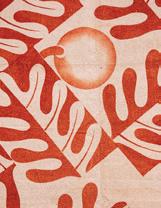
ABOVE / A detail of an ‘ulu (breadfruit) print designed by Elsie Das in 1936. This motif was created for furniture upholstery and later repurposed as aloha wear. Das, who made fabrics for Watamull’s East India Store, is considered to be the originator of the aloha print.
FACING PAGE / Roberta Oaks’ “Old News Aloha Shirt” is a collage of thirteen newspapers published in Chinatown between 1840 and 1912. “As a longtime admirer of old buildings and the stories they tell, I thought doing a newspaper shirt that highlights the importance of Chinatown’s history would be super fun,” says Oaks.
projected on the walls and posted to the museum’s Instagram feed. The museum was flooded: Locals submitted shots of aunties in antique mu‘umu‘u and of entire families jumping in the air wearing the same cheerful floral prints. Each image was a joyous multigenerational expression of aloha—and that, more than any encoded political message, is the essence of aloha wear. hh
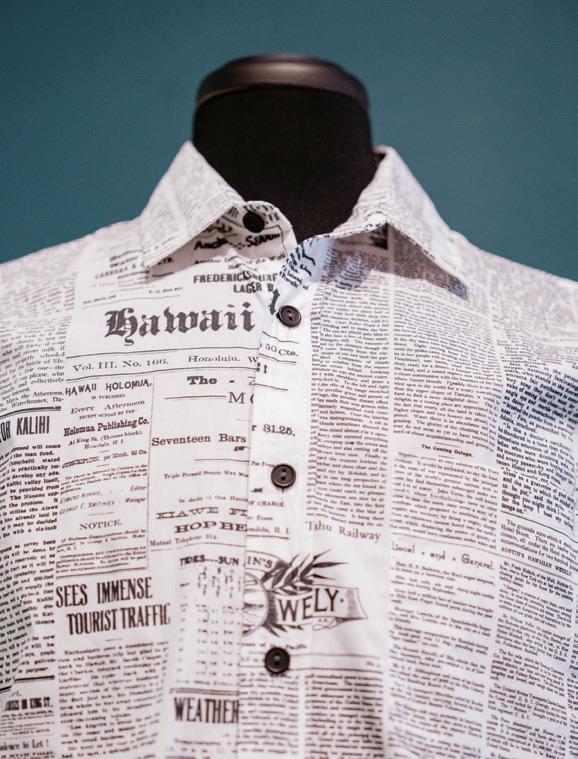

Park & Ride
Jus’ cruisin’ in the lot at Sandy’s

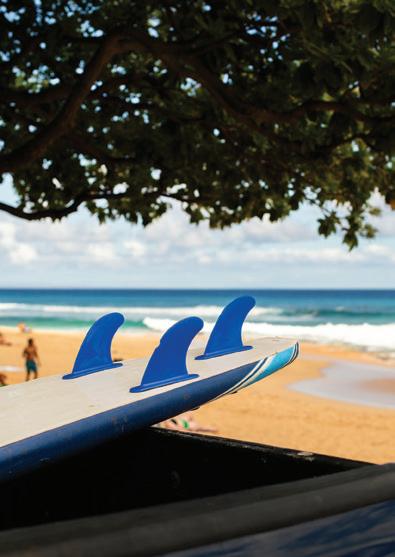

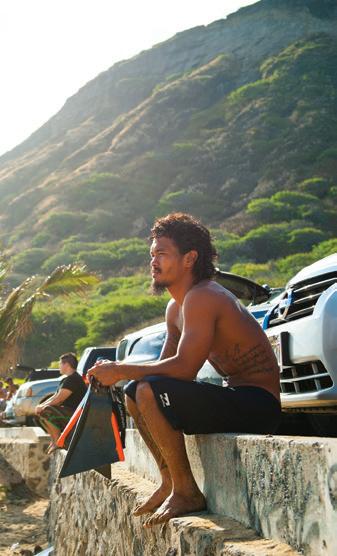
Eh, sis, you like take dis spot?” says a tatted surfer wearing only boardshorts, sunglasses and a gold chain, gesturing to a gap between cars packed in the Sandy’s lot. Maybe the Tacoma will fit. “No worries! You get ’em!” he urges while guiding the truck into place. He flashes a shaka and a toothy grin before disappearing into the crowd.
The lot at Sandy Beach, on O‘ahu’s Ka Iwi Coast, is a scene to be seen, where locals talk story, kani ka pila (jam) and potluck. Amid the rows of lifted Toyotas and dropped hardbodies, throngs gather in the glittering haze of afternoon. Jawaiian blasts from boomboxes and kalbi sizzles on the hibachi. The “boys with toys” rev their engines and burn rubber. Tailgates become tables for boiled peanuts, poke, musubi. Coolers sub as seats for card games; the players look up and groan in sympathy whenever a braddah gets obliterated in Sandy’s infamous shorebreak. When the swell rises, so do the lifeguards’ warnings to newbies: “Find safer beaches down the road!” they bark through the bullhorn. The regulars join in with whistles, cheers and pidgininfused ribbing.
This beachside bacchanale has been going for generations, fostering a sense of community and camaraderie unique to Sandy’s. For teens the lot offers that first taste of freedom; for adults it’s a nostalgic sip from the fountain of youth. And for both it’s the realm between revelry and responsibility, an endless summer where everyone, regardless of age, can be young, wild and free.
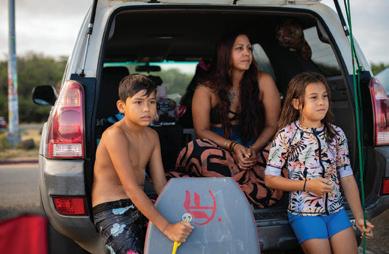
Start ’em young. Trading screen time for beach time, families post up for the day, retreating to the car for shade and snacks between surf sessions. For many locals, childhood’s fondest memories are forged in the ocean. Years later, they return to the same spots to make even more with keiki of their own.

Different zones for different moods: On the pothole-riddled west end, youth gather in a swirling social vortex accentuated by loud music and even louder cars. Under the milo trees, the vibe is mellow, a place to relax and talk story.
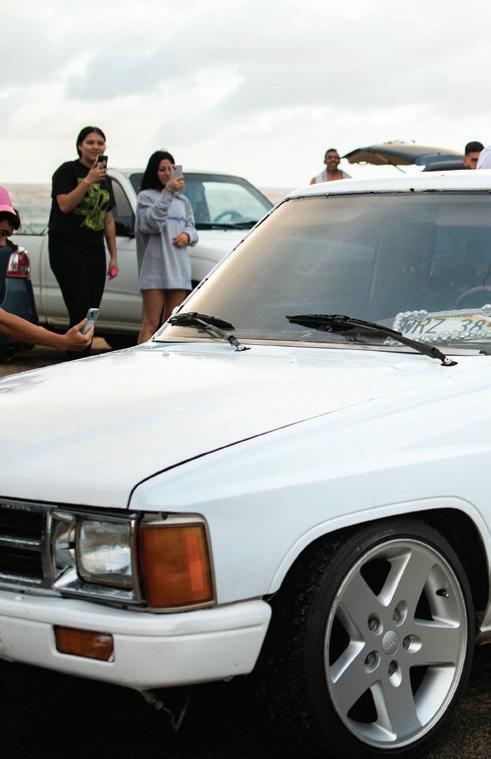
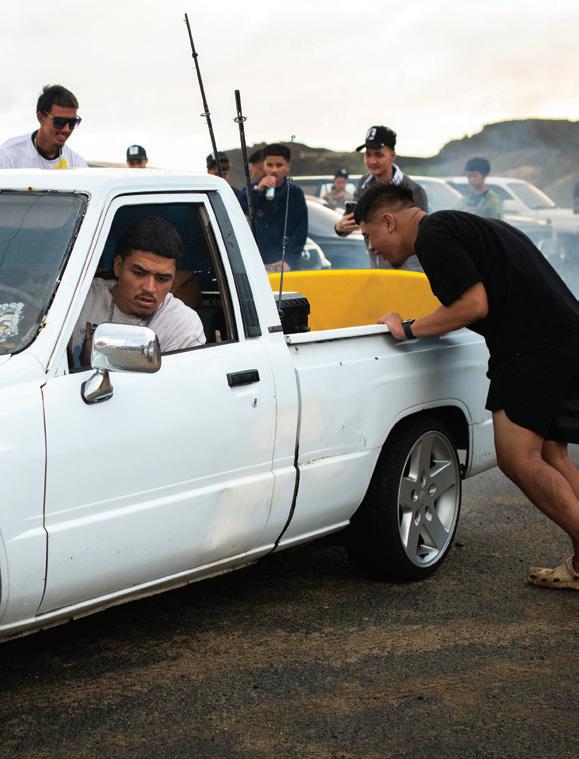

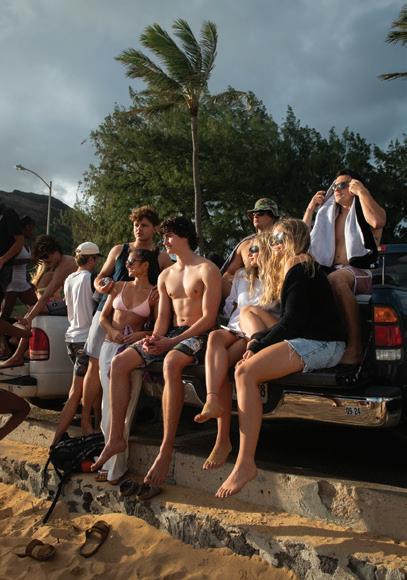

Come early for the parking, stay for the fun—weekends at Sandy’s are all-day affairs, where beachside parking stalls provide front-row seats to the action.

For many visitors stopping by on a drive from Waikīkī, Sandy’s is a glimpse of local culture beyond the tourism frontier. For those itching to experience Sandy’s but can’t, @sandybeachsurfreport chronicles the mishaps, merriment and mayhem both in and out of the water.
“It showcases the entire lifestyle at the beach, not just the surf report,” says founder Tyler Watanabe. “It’s waves, people cruising in the parking lot, tourists getting pounded in the shorebreak—it’s our community, it’s Hawai‘i.”


“When I was in middle school, I’d catch bus to Sandy’s with my friends. In high school, I’d ditch school and go there all day,” says bodysurfer Wyatt Yee. Now as an adult, Yee heads there every day after work. “Just cruising with the boys, watching everybody rip and catch barrels—no drama, just cruise and party.”


I’m milling around in a courtyard at the University of Hawai‘i at Mānoa, waiting for a forecast meeting. I’m more excited than anyone should be about a National Weather Service weekly forecast update. This is my first step in understanding how to forecast weather around Hawai‘i and specifically at one of the most interesting and extreme places in the world: the summit of Mauna Kea. Starting in the 1980s, telescopes were built atop the tallest mountain in the world (measured from seafloor to summit; from sea level Mauna Kea is 13,796 feet). But it isn’t just the mountain’s height that makes it optimal for astronomy. Being in the middle of the Pacific, on the most remote archipelago in the world, Hawai‘i is far from light pollution. But also importantly, the weather at Mauna Kea’s summit is ideal for stargazing about three hundred days of the year. The other sixty-five can be downright nasty, with winds strong enough to blow doors off of cars and snow too deep for the rare Hawai‘i snowplows. So, predicting which days will be ideal is critical information. With hundreds of millions invested in building and

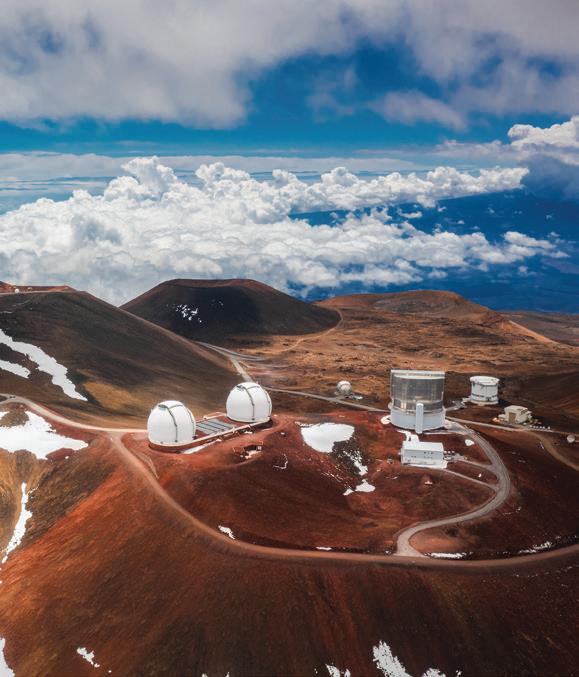

operating these observatories, few weather predictions are as valuable as those of the Mauna Kea Weather Center. It’s up to MKWC to provide the highest possible resolution forecast so that precious telescope time can be used efficiently and safely.
The Hawai‘i regional office of the National Oceanic and Atmospheric Organization’s National Weather Service (NWS) resembles a well-run military command post—NOAA is a uniformed service, after all—with multiple displays at each workstation.
(One major difference between NOAA and, say, a Navy command post is that it’s perfectly acceptable to have a surf cam feed on a workstation display.)
This is where NOAA forecasters consult “the Global,” that is, the Global Forecast System (GFS), which is shared—and revered—internationally; the idea is that everyone in the world shares data and forecasts because everyone needs a heads-up about bad weather. On a day like today, when the weather is calm, there’s plenty of room, but when something like a hurricane menaces the Hawaiian Islands, the workforce and workload might triple.
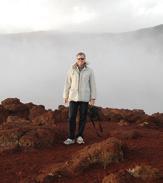

OPENING SPREAD / Observatories on the summit of Mauna Kea depend on accurate predictions from the Mauna Kea Weather Center (MKWC) to make the most of their telescope time.
TOP / MKWC director Steven Businger acclimates to the altitude at Hale Pōhaku.
BOTTOM / A false-color map illustrates winds and water vapor, both important factors for “good seeing.”
LEFT / Technicians check one of the Submillimeter Array’s receivers.
The satellite image of the Pacific displayed on the main screen is a wash of false colors, with barely visible dots representing the Hawaiian Archipelago in the center, the Marshall Islands to the left and hints of the US West Coast on the far right. The NWS model is built from data from ground stations, weather balloons and satellite data from just about every country in the world, then compiled and crunched by a supercomputer on the continent. This big Pacific view is one of many outputs, albeit one more valuable to transpacific sailors than to people planning a weekend beach campout.






Yvonne Jaramillo Ahearn Oahu | RB-20262 808.721.8088 Alesia Barnes Oahu | RB-22312 808.397.7928

Christopher Barca Maui | RB-20936 linktr.ee/christopherbarca


Jason Carey Oahu | RS-76292 careyluxury.com



Rebecca Hirsch-Keliihoomalu Big Island of Hawai‘i | RB-19834 808.895.1156 James
Chelsea Dimin Maui | RB-22400 chelseaislandrealty.com
|
Amy Conley Oahu | RB-20176 amy.conley@compass.com Jennifer L.

Gina M. Overton Oahu | RB-19334 gina.overton@compass.com

Diana Rodbourn Maui | RS-81738 diana@yestomaui.com
Melvin D. Leon Guerrero Oahu | RB-21994 melvinestates.com
Olivia Sadeler Oahu | RS-78233 olivia.sadeler@compass.com Susan L.
|


Michael D. Styring & Lisa Styring Oahu | RB-21179 | RS-78047 hawaiirealtyinternational.com

Stacey Lee Vinoray Maui | RB-19034 StaceyBMaui.com
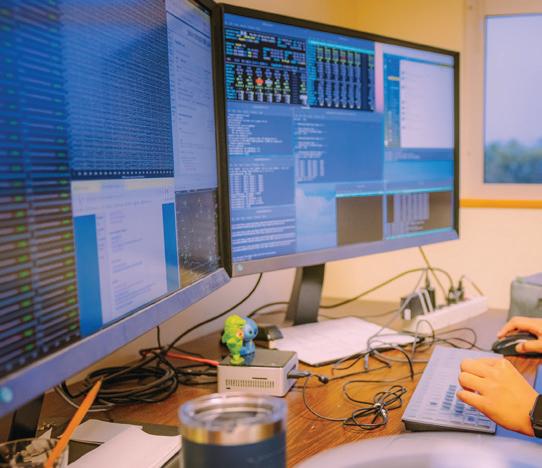
The NWS focuses on predicting big weather events, things that impact commerce or threaten the safety of the region. From the big Pacific-wide view, the displays zoom in on Hawai‘i. A small-craft advisory is in effect for most of Hawai‘i (pretty common during the winter) and “trade winds forever” is the forecast. The GFS is pretty lowres; not one city is mentioned by name, and specific islands are noted only in passing. It’s the job of local weather
forecasters to pore over the GFS’ many charts to predict potential weather impacts on their areas. Here, it might be raining deep in Mānoa Valley, while it’s sunny a mile downhill in Waikīkī. Even on dry days it’s usually raining in Hawai‘i, somewhere.
This is all very interesting, but nothing about Mauna Kea is being mentioned. But, the “air desk” chimes in with a report that an airliner traveling at thirty thousand feet encountered
unexpected turbulence. Pilots take great care to avoid turbulence, and the GFS is especially useful for flight planning. At that altitude the airliner was well into the jet stream, one of the high-altitude rivers of two hundred-plus mph winds that circle the globe and drive big changes in regional weather. There, on the false color satellite map tortured with squiggly lines, is the source of that unexpected turbulence, a “little” whorl dipping south a hundred miles from what should be

a smooth-flowing jet stream. And that information could very well impact observations from Mauna Kea.
The MKWC, conveniently stationed directly above the NWS center, zooms in much more finely than the NWS. (Also unlike NWS, MKWC is not a government agency; it’s funded by the observatories themselves, even though its data is available to the general public.)
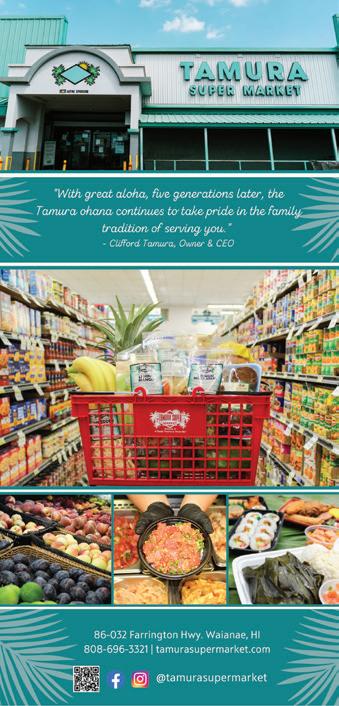



MKWC director and principal investigator Steve Businger is taking a break from grading his grad students’ labs, and lead modeler/research meteorologist Tiziana Cherubini is poring over the MKWC’s own model. Unlike the broad regional forecast from the NWS downstairs, Businger and Cherubini are focused on a few square kilometers of Mauna Kea’s summit. A supercomputer in Wyoming crunches inputs from the GFS, along with data from an array of local sensors and four daily weather balloon reports, to inform MKWC’s high-resolution model.
The result is … more charts and squiggly lines. Tiziana explains the importance of an “inversion layer” detected at or below ten thousand feet—a critical data point insofar as summit astronomy is concerned. “This inversion layer keeps tradewind moisture from climbing any higher than the peak of
Saddle Road,” she says, pointing to a horizontal divot in a smooth line on a chart. For the next three days, the forecast for Mauna Kea astronomy is looking good, but after that, she says, conditions degrade. Why?
Tiziana switches to an image of the winds at the jet stream level from the GFS. The jet stream has dipped south, as it does in most winters, but a tributary has formed and will pass right over the Islands in three days. “That’s bad for seeing,” Businger says, explaining that the fast-flowing winds of the jet stream create turbulence, which distorts starlight. Optical telescopes love very calm air; the “optical turbulence” from the jet stream, although fifteen thousand feet above the summit, compromises seeing (and that is what astronomers call it: “seeing”).
I point excitedly to the little whorl that was responsible for the airliner’s
encounter with turbulence. They both give me a gracious nod that would make a meteorology student smile. I’ve correctly surmised that the whorl portends that our observation-friendly inversion layer will dissipate by Friday. Indeed, it does.
But that doesn’t mean I should quit my day job just yet. The weather over the next two weeks—late February to early March of 2024—goes bananas, which is, I think, the official meteorological term. The whorl turns into a whirlwind. Local news weather forecasters are flummoxed to the point of issuing on-air apologies. Sunny one day and Island-wide rain the next. MKWC’s forecast page is a string of red and blue bars, indicating snow and turbulent air at the summit. In such conditions the astronomers and even the maintenance personnel of Mauna Kea take a snow day.
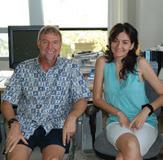
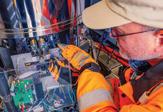
BOTTOM / A technician inspects the controllers on one of the SMA’s receivers.
“The warm pool of air that moved through was very alarming to me. … I haven’t seen that before over the last twenty-plus years of forecasting for Mauna Kea,” says Ryan Lyman. Lyman, a forecast meteorologist, is the third member of the MKWC team, responsible for maintaining the websites, data links and a handful of weather instruments on the summit. Most of the observatories have their own sensors and cameras, and MKWC combines all available metrics for the summit as a whole to fulfill its mandate of ensuring the safety of observatory operations personnel on their trek above the snow line.
For the past twenty years, Lyman has been writing the few paragraphs of prognostication that appear on the MKWC website first thing in the morning and at 5 p, five days a week. The narratives are long, prophetic and an enjoyable read for
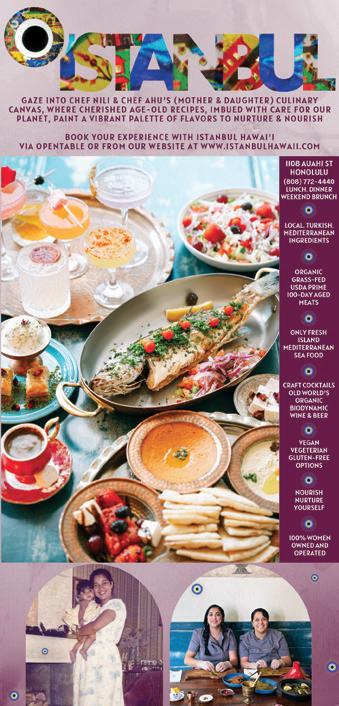
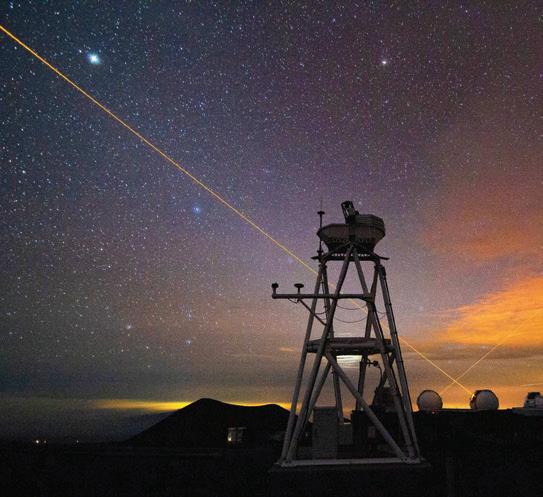
a lay meteorologist like myself, filled with discussions of cloud layers, convection, ridges and troughs, organization and instability, and boundary layer turbulence. But to put MKWC’s forecast to the grindstone, you have to get high.
If you head up to the Mauna Kea summit, your first stop is Hale
Pōhaku (stone house) at nine thousand feet, the mandatory altitude adjustment station for visitors and Mauna Kea veterans alike. The cafeteria is lively with observatory personnel chatting and acclimating over breakfast. At the entrance a huge flatscreen TV displays vital information: webcams, road conditions and the MKWC forecast. For the past two weeks, the summit was
mostly closed due to heavy snow and ice, according to three ice detectors that Lyman maintains. Now, with a break forecast and despite the persistent, pesky jet stream, Mauna Kea personnel are heading up to clear snow from the domes and perform the innumerable tasks associated with keeping the observatories running. With these high winds, the optical telescopes have little
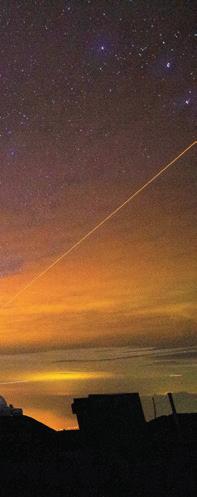
hope for good seeing, but the radio telescopes can study the cosmos despite these conditions.
Radio telescopes have sensitive receivers, like oversize satellite dishes, that detect electromagnetic whispers from comets, nebulae and even faint emissions from black holes. One such telescope, the Submillimeter Array, attempts astronomy on every marginal
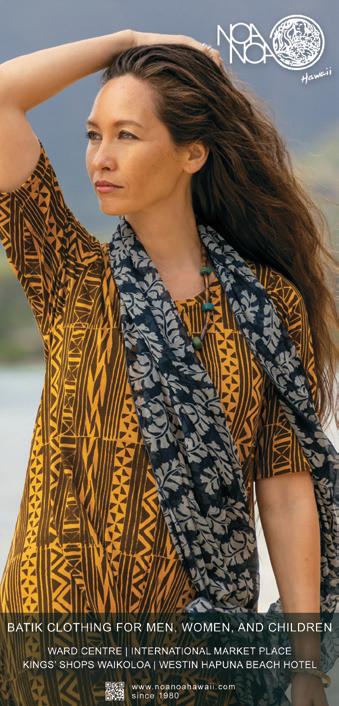
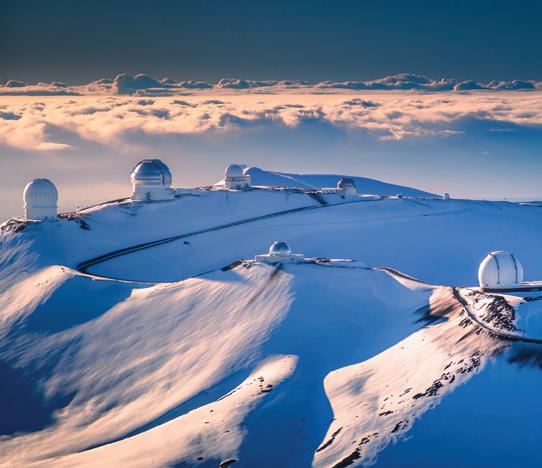
day and night that MKWC forecasts. Instead of a giant parabolic dish, the SMA consists of eight synchronized robotic receivers. Like most of Mauna Kea’s observatories, SMA has a backlog of four requests for every available observation period, so the moment the snow is dusted off SMA’s silvery receivers, observation begins.
Operator Angelu Ramos grew up just downhill from Mauna Kea. She has studied and conducted radio astronomy
since graduating from Kohala High School in 2018 and during college. During fair weather, observers like Ramos prefer to operate the array from the summit, but remote observing from SMA’s Hilo or Boston headquarters is the better option during questionable weather. I’m granted access to watch an astronomy session with the SMA crew without having to climb the summit at night. For once, I’m excited to join a Zoom call.
I log in at dusk to find that Ramos has already started her shift, narrating her work for the astronomers with commentary. “Adjusting phase … we are getting good readings, but the weather is slowly turning.” I’m brimming with questions about their target for the night, knowing that there is a sophisticated queuing system in place that selects targets according to their importance and position in the sky. Tonight’s agenda is a big-sky survey, hunting for filaments
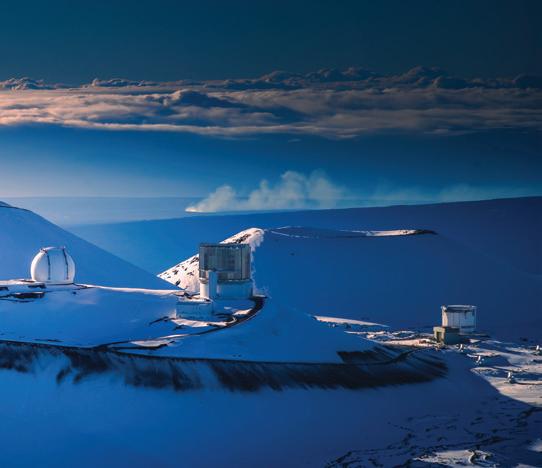
of gas crashing into protostars. But then suddenly, it’s a wrap.
“We have indications of snow on the summit,” Ramos reports. “Humidity is over 90 percent.” She knows this due to the real-time reporting from MKWC webcams and weather stations. The arrays have heated surfaces, but there’s a limit to how much snow they can melt. She initiates the shutdown sequence. This is not an “L” for MKWC; it was a college try on a marginal evening.
The next week, I log in again because the MKWC forecast is for dry weather with high- speed jet streams above. If anyone can see in those conditions, it’s the SMA. Ramos is again on watch. All is well: The array is returning to the aborted observations from the prior week, scanning a wide patch of sky to catch hints of stars being born. I stay up until 4 a.m. to check in with her again. She answers, a little groggy. “The winds gusted to thirty-
five mph, but we are still observing,” she reports. I ask if we are looking at a rare visitor to our side of the solar system: 12P/Pons-Brooks (a.k.a. the Devil Comet), a long-period comet similar to Halley’s Comet. Thanks to a spot-on MKWC forecasted break amid a fortnight of bad weather, Ramos is indeed watching the comet when no one else on Mauna Kea can. hh
For four generations, Maebo Noodle Factory has kept a Hilo institution going
Alot of things in Hilo never change, and those who call it home like it that way. It’s always kept its small-town charm, despite a few modern conveniences taking root. Rustic wooden storefronts line the main downtown thoroughfare, stores shutter by 9 p.m. and a sweet mist of rain seems to permanently hang in the air. Hilo’s low profile is purposeful, given to sports on Saturdays, slow Sundays and nights talking story in someone’s garage. It’s also a town where family ties bind, a value that has kept many generational businesses going, even through difficult seasons.
If you grew up in Hilo, you know Maebo Noodle Factory. Started by Japanese immigrants in 1950, Maebo is now in its fourth generation of





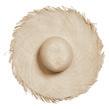



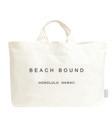

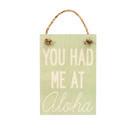
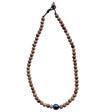

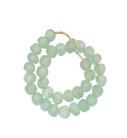










Maebo Noodle Factory founder Koto Maebo created the Hilo company’s One-Ton Chip recipe by sweetening and frying strips of wonton pi (seen above), which she gave to customers as a thank-you. Today it’s Maebo’s signature product, and the family business is being carried forward by its fourth generation.
operation, set to celebrate its seventyfifth anniversary in 2025. Maebo was originally known for its variety of fresh noodles: saimin, chow fun, udon and pi (the wrapper used for wonton), all handmade daily by the family matriarch, Koto Maebo. She would feed dough through a hand-cranked machine in her garage and deliver noodles on a bicycle to local restaurants. Maebo is best known today for the sweet and salty chip Koto invented by deep-frying strips of sweetened wonton pi. You can’t miss the bags of Maebo’s One-Ton Chips on store shelves, designed by Koto’s son Aketo, with its bright red banner and the Charles Atlas-type weightlifting mascot dressed in a red Speedo-like brief, hoisting a barbell emblazoned with the pun “One-Ton.”
Koto didn’t intend for her One-Ton Chips to take off. “In Japanese culture, small gifts are often given to customers by the store owner to show appreciation for their support,” says Randall Maebo,
one of the family’s third generation. “Obachan [grandmother] would gather and fry the kuzu [leftovers] from the production of the wonton wrappers and give it to those special customers. Before long, those customers asked to purchase the chips. Today, One-Ton Chips dwarfs the sales of noodles.”
If you didn’t grow up in Hilo, you might miss the warehouse altogether. Maebo Noodle Factory is next to Kai Store (another storied landmark), in a large, windowless, sheet-metal building, completely nondescript save for a small banner zip-tied to the chain-link fence outside. It’s an “if you know, you know,” situation, and those who know still go straight to the source to buy their Maebo products, Tuesday through Friday from 8 a.m. to 2 p.m. (park and knock on the door to the left of the building and someone will answer). The original factory was in lower Pāpa‘ikou before moving to Hilo in 1964. A devastating
fire gutted the building in 2003, but the family rebuilt it, four times bigger than before, and it was fully operational again by 2007. During the years of rebuilding, the Maebo family found ways to keep going using other certified kitchens.
As with any family business, a line of succession is not guaranteed, although in Hawai‘i there’s some sense of kuleana (responsibility) for continuing the legacy. That kuleana represents the sacrifices made in pursuit of a dream— one designed to make a better life for the generations who come after.
The fourth generation of Maebos— Chasity Enoka (41), Porsche Nathaniel (36) and Jarek Maebo (24)—now carry the responsibility of moving the business forward while staying grounded in the values of their ancestors: humility, hard work and giving back to the community that has supported the Maebo family for three-quarters of a century.
“Sometimes it’s hard to find a balance between the previous generations’ ways

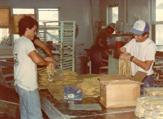
BOTTOM / William Rapoza (left) and Ronald Ah Hee pack bulk bags of noodles.
of doing business and keeping it fresh,” says Enoka, who grew up working in the factory and returned as vice president and secretary for the company in 2016. “It’s a responsibility, but I also want to do this. Taking care of our employees and giving back to our community have always been our foundation, and we will make sure that continues.”
For Jarek, the factory was all he knew. His father, Blane, who died in 2023, was the third generation to serve as president, and his wife, Lehua, worked right beside him. “I started to help on the line when I was in intermediate school,” says Jarek. “I was the designated flashlight holder when my dad would work on fixing things in the factory, so I learned along the way.” Jarek joined the business full time the same year as Enoka, learning every job on the line, and now serves as president. “My dad was a man of few words, but he taught me everything I needed to know to take on this role. We all wear many hats. I’m
also quality control, dough mixer and equipment fixer.”
Jarek is one of only two people who know the One-Ton Chip recipe. “It’s all up here,” he says, tapping the side of his head. “I don’t think anyone ever wrote it down. I guess we should really do that, huh?” For now, Jarek preps the secret sauce for the chips a day ahead, and the employees take care of the rest.
Before the fire in 2003, Maebo Noodle Factory was automated, from mixing to noodle cutting to filling, weighing and sealing. However, Blane wanted to provide more jobs for the community, so when the factory reopened in 2007, humans replaced machines for once, and fifteen employees took over all the filling, weighing and sealing of One-Ton Chip bags. Today the factory produces 32,400 pounds of One-Ton Chips every month, selling them in four- and fifteen-ounce bags available in most grocery stores and gas stations statewide. They also have a twenty-ounce bag at Costco and Sam’s Club in Hawai‘i, and Costco in the Bay Area. Enoka also developed a furikake One-Ton Chip, available only at the factory (except during the holidays, when you can also find it at KTA Super Stores on Hawai‘i Island).
Maebo cranks out 560 pounds of noodles monthly, too, sold to local restaurants for use in salads and kālua pig nachos. The chips are also sold as far away as Las Vegas, California and Washington state.
On a Thursday the factory is bustling. Bryan Baker mans the fryer, his usual post, armed with two large long-handled steel strainers. He scoops mounds of freshly fried chips into a colander to drain. His glasses, fogged from the heat, are pushed down to the middle of his nose so he can see over the top. He places the strainers down long enough to season the cooling chips. It’s just three minutes between batches. Three industrial fans cool the chips quickly for packing, making his job the noisiest in the room. Most of the employees have a few tasks on which they focus. You would think the repetitiveness would get boring, but they beg to differ and easily pass the time with chatter.
Joel Arruda, 60, makes twenty years with Maebo Noodle Factory this October.








Your support and generosity have had an amazing impact in helping Maui’s affected animals since the wildfires on August 8th. Mahalo.
220+
220+ animals adopted to new families. animals from Lahaina taken in.
880+ animals reunited with families.
1,500+ non-shelter animals treated by MHS vets.
881,950+ pounds of pet food donated.
For the most up-to-date info, visit: mauihumanesociety.org
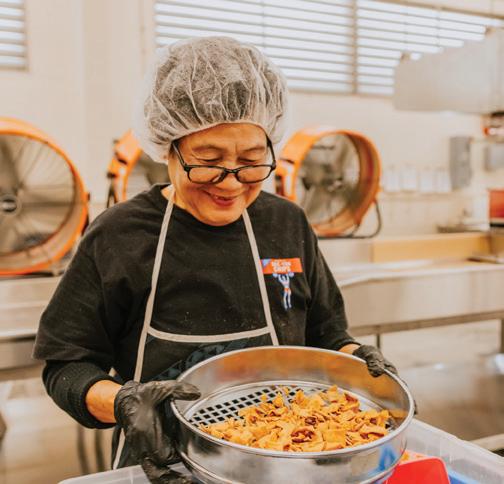
Maebo Noodle Factory offers just a few products, but it’s enough. In keeping with the family’s “no waste” mantra, Porsche Nathaniel uses the discarded pieces of chips to make One-Ton Chip shortbread cookies—sweet, buttery, crunchy cookies that Nathaniel makes by hand. Above, Rose Seguban sifts crumbs from a fresh batch of chips to be used in Nathaniel’s cookies.
He’s at a table with Elizabeth Fujimoto, 77, sifting excess flour off batches of uncooked chips, which are placed in red gallon buckets for frying. “Elizabeth keeps me on my toes,” Arruda jokes. Fujimoto points a gloved finger at him. “He’s teasing me because I’m the oldest one here,” says Fujimoto. “Everyone in here could be my child!”
“The Maebo family gave me a job when I didn’t have one,” says Arruda. “I got
really depressed when I lost my previous job. I grew up here in Hilo, and the Maebo family was always so nice. I just jumped right in. They help their workers out a lot. It feels like we are part of the family.”
Rose Seguban is on the production line, dusting salt from her uniform. “Look at me!” she laughs. “I’m covered!” Seguban sifts the smaller, broken pieces of chips into a bucket, which is set aside for another Maebo product. Golden brown
chips, slightly twisted from frying, line the seventeen-foot stainless steel cooling table from end to end. Employees fill quart-size plastic containers with chips, which are then poured into bags and weighed by hand before taking their final ride through an X-ray machine—like a TSA checkpoint for snacks—to look for foreign objects before they are sealed.
The third musketeer in the fourthgeneration legacy is Porsche Nathaniel,







SHOHEI OHTANI



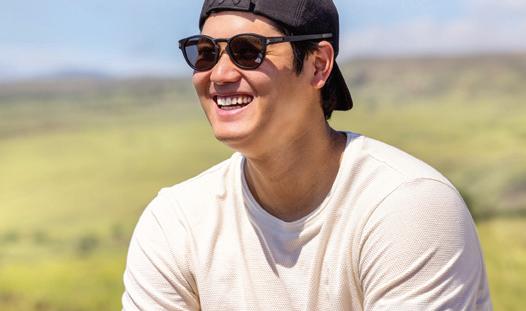





who jumps on the line at the front of the X-ray and stands the open bags on end, feeding them through the machine. “I used to be the fastest at this!” she says. “I’m out of practice.” Nathaniel, who spends her days as a realtor, is the mastermind behind one of Maebo’s favorite products: One-Ton Chip shortbread cookies. She makes all the cookies herself to this day—between four thousand and twenty-thousand cookies a week, depending on the season—using the pieces of broken chips that would otherwise be wasted.
“With great-grandma Koto, there was never anything wasted, so we learned to innovate and try new things,” says Nathaniel. “It’s in our genes. It was important to me to have a new product with my own twist on it when I joined the family business—something that would make my grandma Rachael proud.”
Maxine Maebo, daughter of secondgeneration owner Aketo and his wife, Rachael, was two when the Hilo factory was first built; now 63, she is still an officer for the company. She remembers hard times in the early days, but also the
dedication of her obachan and ojichan (grandfather), as well as her parents, in making do with what they had. “My grandparents used to have to wait for the chickens to lay the eggs so they could make the noodles,” says Maxine. “They were poor. Money was always tight. My parents never shared that part of it with us, but at home I could tell money was tight. People always thought we were a rich family, but we really had to pinch and save.”
Family duty required that she “work” at an early age. “I remember a lot of long hours for my parents,” recalls Maxine. “Sometimes the machines would break, and we’d have to stay until midnight. One of my jobs when I was about five was packing the chips by hand. I remember sometimes I would get mad and I’d overstuff the chips into the bag, so when it went through the roller the person who was sealing it had to stop and unload it. They would get so mad at me, but I just wanted to go home and watch TV.” If Ojichan was in a good mood, at the end of the day, he’d give Maxine a quarter for her labor. “Kai Store is right next door, so I’d run as
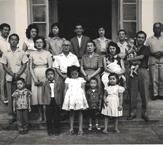
ABOVE / Down the generations, through fires, economic downturns and the pandemic, the Maebo family has kept the chips coming, forgoing automation to employ as many Hilo residents as possible.
fast as I could and spend my money on candy,” she recalls.
When the fire struck in 2003, the family had just replaced the factory’s roof. “I had just come in from Maui, and my grandma Rachael picked me up,” recalls Enoka. “We were driving home when my friend called me and said, ‘I think your guys’ building is on fire.’ My gram and I were the first ones on the scene, even before the firetrucks. It was already engulfed. My gram was just devastated … the reality of seeing something she worked so hard for just burning to the ground.”
“It all could have ended after the fire, but it was decided right away that the factory would be rebuilt,” says Jarek. “I feel really honored to continue this legacy, and I’m grateful for all the effort the generations before me put in for us to be able to have this. Some people don’t like working with family, but I think we all share the same mindset. We are all looking out for the family business together, not just our own personal interests. It’s easy to work together because it means something to all of us.” hh

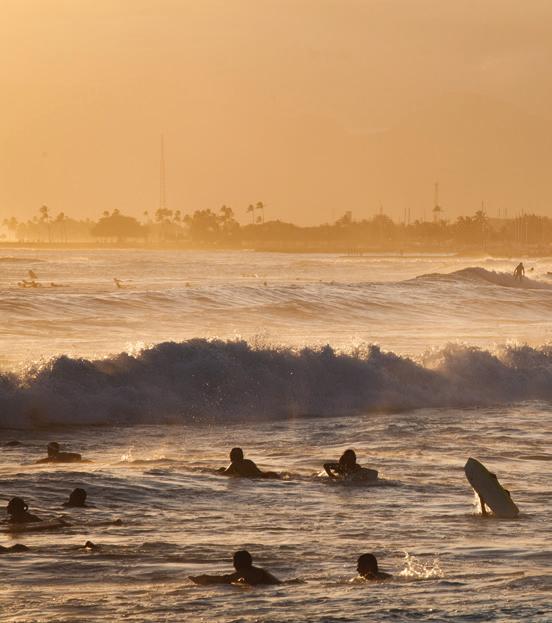
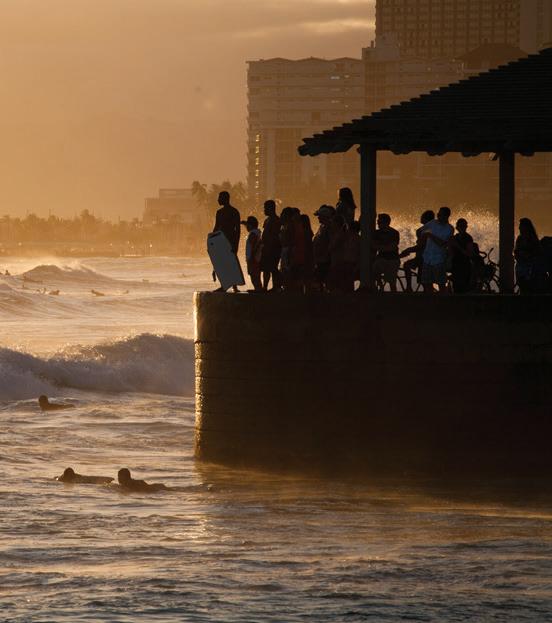

Complete your Pearl Harbor experience. The USS Missouri is no ordinary ship—it is America’s most historic battleship. Home to 2,700 sailors, nine 66-foot-long guns, 1,220 projectiles and a deck big enough to host a surrender ceremony presided over by General Douglas MacArthur. Ask about the new Captain’s Tour and Chief Engineer’s Tour. Shuttle service from the Pearl Harbor National Memorial visitors center included with admission.

(808) 455-1600
ussmissouri.org
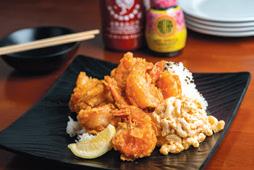
Native Hawaiian owned and operated, the popular bEASTside Kitchen is conveniently located on Oahu. Minutes between Waikiki and the best beaches. Famously known from the tent roadside for its TruckStyle Garlic Umami Shrimp, Guava BBQ Fried Chicken and local home style recipes to our full service restaurant located in East Oahu. Hawaiian musicians Wednesday - Saturday Evenings and Happy Hour food and drinks M-F from 3 to 6pm! bEASTside is a must stop!

(808) 888-0138
bEASTsideKitchen.com

Imagine all the places you will go
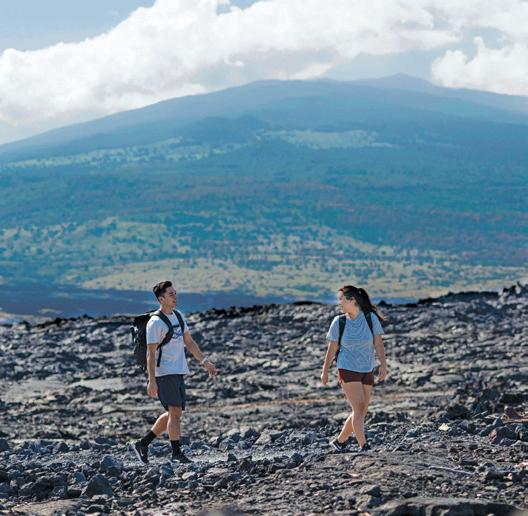
There’s a lot more to see and do outside of your hotel. Right now, save up to 35% off base rates and earn 1,000 bonus miles* on rentals of two consecutive days or more when you book with Avis and Budget through HawaiianAirlines.com/Cars.
*Car reservations must be booked through HawaiianAirlines.com/Cars. Offer valid until Jan. 31, 2025. For complete Terms and Conditions, please visit HawaiianAirlines.com/AvisBudget.
Hawai‘i Convention Center
August 23–25, 2024
info@madeinhawaiifestival.com
Hawaiian Airlines presents the 30th Annual Made in Hawai‘i Festival, showcasing Hawai‘i’s creativity and rich cultural heritage, offering attendees an opportunity to explore an impressive array of thousands of madein-Hawai‘i products while enjoying live entertainment, chef demos and more. The three-day festival will be the largest ever in its thirty-year history and will be held at the Hawai‘i Convention Center, August 23–25, 2024.
This year, the festival is proud to offer 600-plus vendor booths, spotlighting the state’s most talented local artisans, entrepreneurs and crafters. In addition, onstage you’ll find Nā Hōkū Hanohano Award-winning entertainment featuring Jerry Santos, Kupaoa, Kawika Kahiapo, Frank DeLima and the Kani Ka Pila Grille Talent Search. The festival will also offer an impressive showcase of Hawaiiana, shopping, fashion shows and a beer garden. There’s something for everyone!
Follow @madeinhi #madeinhawaiifestival
Hawai‘i Convention Center
Saturday, August 31 & Sunday, September 1, 2024
okinawanfestival.com
The Hawai‘i United Okinawa Association is proud to present the 42nd Okinawan Festival on Labor Day weekend at the Hawai‘i Convention Center. Celebrating all things Okinawan, the family-friendly festival is one of the largest ethnic festivals in Hawai‘i, bringing together Okinawans and Okinawans-at-heart for delicious food, fun shopping, beautiful performances and much more.
The Okinawan Festival showcases Hawai‘i’s multiethnic culture and invites locals and visitors alike to enjoy Okinawan performances, shopping with local vendors, children’s games and cultural exhibits. There will be plenty of food like Okinawa soba, okidogs, pig’s feet soup, and, our favorite, andagi (fresh fried Okinawan donuts)!
Entertainment from performing arts groups will fill both days with Okinawan dance, karate, taiko, and live music. The state’s largest indoor bon dance will be held on Saturday night only from 5:30 to 9 p.m.
okinawanfestival.com


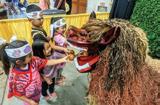

AUGUST
Second Fridays Museum exhibits are open for viewing from 5:30 to 9 p.m., along with cultural demonstrations, keiki activities and a night market with food trucks and local vendors. Bishop Museum, (808) 847-3511
Every Friday and Saturday Honolulu Museum of Art remains open until 9 p.m. with opportunities to explore the galleries, stargaze in the courtyards and enjoy live art experiences and music. Honolulu Museum of Art, (808) 532-8700
Sunday through Thursday
A modern take on the Kodak Hula Show featuring mele (songs) that honor Waikīkī, and dancers from hālau across Hawai‘i. Presented by the Council for Native Hawaiian Advancement. Free. 9:30 a.m. Tom Moffatt Waikiki Shell, blaisdellcenter.com
8/3
This annual festival presents Korean culture through food, dance, art, music and entertainment. 11 a.m. to 8 p.m. Frank F. Fasi Civic Center Grounds, koreanfesthawaii.com
8/5–10
Showcasing dancers and choreographers from Asia and the Pacific, the biennial festival returns with two weeks of concerts, courses and workshops. University of Hawai‘i at Mānoa, (808) 956-8246
8/10
Kalākaua Ave closes to traffic and turns into a pedestrian marketplace with more than 140 vendors offering apparel and accessories, jewelry and crafts, delicious local street food and drinks. 4 to 10 p.m. Free. Waikīkī, (808) 531-5050
8/11
Hawai‘i’s longest-running noncompetitive hula event, the festival brings together hālau (troupes) from around the state for a day of dance. 9 a.m. to 2 p.m. Free. Kapi‘olani Park, (808) 768-3003
8/16–18
Top Pokémon players from around the world compete for a prize pool of more than 2 million dollars and the coveted title of Pokémon World Champion. Hawai‘i Convention Center, pokemon.com
8/17–25
A celebration of waterman, Olympian and ambassador of aloha Duke Kahanamoku, with various lifestyle sports competitions and cultural, hula, film and music presentations. Waikīkī Beach, dukesoceanfest.com
8/31
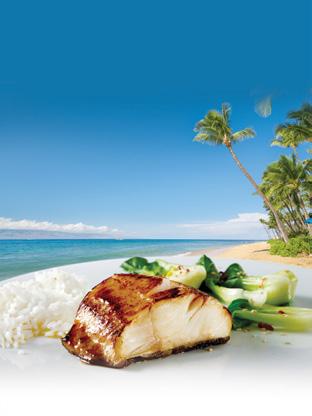
A gathering of some of the greatest slack key musicians, this festival features five hours of musical performances, with local cuisine and crafters. 5 to 9 p.m. Waikiki Aquarium, (808) 226-2697
8/31
Iconic Hawaiian band Kapena reunites for a night of beloved hits like “Reggae Train” and “Masese.” Tom Moffatt Waikiki Shell, blaisdellcenter.com
8/30–9/1
This fashion showcase features ticketed shows from eighteen international swim and resort wear designers and a free marketplace with over fifty vendors. Wai Kai , hiswimshow.com
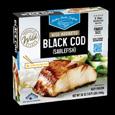

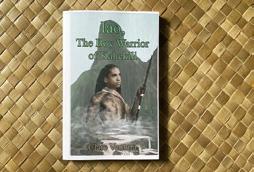

Step back into time when Kamehameha conquered, united, and ruled the Hawaiian Islands. Know the sacredness of the mist that still lingers in the Wailuku Valleys, until today. Feel peace as you understand our spirits never die: we are all spiritually connected. Scan QR to buy!
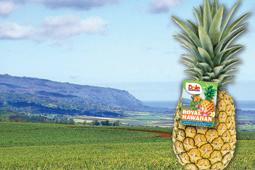
Bring home a bite of paradise! The exotic pineapple has been associated with Hawai‘i & the DOLE® brand for over 100 years. The fertile, volcanic soils of O ’ahu are kissed with Hawaiian sunshine, warm tropical rain and gentle tradewinds, creating the sweeter, juicier DOLE® Royal Hawaiian® Pineapple.
barnesandnoble.com





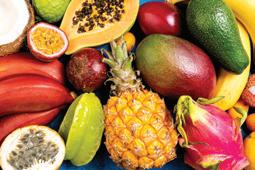
Kaka‘ako, Pearlridge Center, KailuaTown, Hale‘iwa
Immerse yourself in local food culture at any one of our Farmers Markets. Taste the true Hawai‘i. Experience our local farmers, culinary masters, and artisans. Fresh locally grown produce. Tropical Fruits and Vegetables. Come Hungry! Leave Happy. Our chefs cook healthy, island style grindz. Need a Gift? Our local artisans have you covered. Kaka‘ako (Sat), Pearlridge (Sat), Kailua Town (Sun), Hale‘iwa (Thur).

(808) 388-9696 farmloversmarkets.com
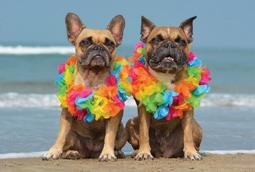
At Island Pet Movers, we believe that pets are more than just companions; they’re cherished members of our families. We understand that relocating a pet can be a significant and sometimes overwhelming experience. That’s why we’re here to redefine pet relocation, providing a level of care, expertise, and dedication with the spirit of Hawai‘i and Aloha.


Hawaii Ocean Charters offer private Waikiki catamaran cruises and shared tours to visitors and locals looking to have an ocean adventure with guides that truly care about your experience. Sunset cruises, guided snorkeling, whale and dolphin watching, coastal sightseeing, and firework shows are among the memorable tours our guests love the most. Use promo code HANAHOU for 10% off!

(808) 400-1506
hawaiioceancharters.com


With Jules & Gem Hawai’i, any place can be paradise. Light one of our signature candles and be transported to fragrant memories of Hawai’i: enjoying the ocean breeze and feeling the warm sun on your skin. We take pride in hand making our products on O’ahu and ensuring that every fragrance is true to its name. Shop our products at resorts and retailers across the islands, or get them shipped from our home to yours by shopping online.
(808) 772-4060 julesandgemhawaii.com
9/6–8
A three-day convention of comics, costumes and all things nerdy. Fans gather to show off their cosplay, meet celebs, play video games and support local artists. Hawai‘i Convention Center, comicconhonolulu.com
9/14
Kalākaua Avenue closes to traffic and turns into a pedestrian marketplace with more than 140 vendors offering apparel and accessories, jewelry and crafts, delicious local street food and drinks. 4 to 10 p.m. Free. Waikīkī, (808) 531-5050
9/21
Thousands gather on Kalākaua Avenue for food and entertainment as part of this year’s Aloha Festivals. Hawaiian music, hula, crafts, lei and cuisine are offered throughout the event. 6 to 9:30 p.m. Waikīkī, alohafestivals.com
9/21
A children’s boogie boarding competition focused on creating ocean awareness, cultural connection and fostering the competitive spirit. 7 a.m. to 3 p.m. Free. Sherwood Beach, (808) 635-2435
9/21&22
This festival of Native American culture features local and Mainland arts and crafts, activities for kids and dance concerts, drumming and singing. 9 a.m. to 4 p.m. Bishop Museum, (808) 392-4479
HAWAI‘I COMEDY FESTIVAL
9/27&28
An annual sidesplitting showcase of local comedians, writers, directors and actors performing their original work. Doris Duke Theatre, hicomedyfest.com
ALOHA FESTIVALS
9/28
A parade featuring floats decorated with fresh flowers, pā‘ū riders and participants from marching bands to civic leaders. 9 a.m. to noon. Ala Moana Park through Kalākaua Avenue, alohafestivals.com
9/29
Cyclists from around the world come together for the largest cycling event in Hawai‘i featuring 25, 50, 75 or 100-mile rides. Kapi‘olani Park, hbl.org
9/29
A grueling and prestigious forty-one-mile women’s outrigger canoe race across the channel from Moloka‘i to Waikīkī. Hale o Lono Harbor, Moloka‘in to Waikīkī Beach, O‘ahu, nawahineokekai.com
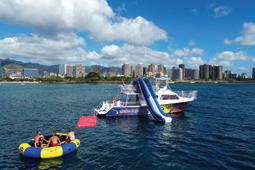
1125 Ala Moana Blvd Slip B-01, Honolulu
Get ready for a day of sun, sea, and unforgettable memories with Living Ocean Tours on one of our custom built luxury snorkel boats in Waikiki! Snorkel the crystal waters of Oahu with our Hawaiian Green Sea Turtles, take a thrilling slide down our two-story waterslide, bounce on a water trampoline or cruise into the sunset while looking for whales.

(808) 436-3483
www.livingoceantours.com
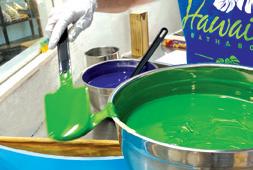
67-106 Kealohanui Street, Waialua
Watch our master soap maker when you visit North Shore Soap Factory! Come for the soap, stay for the stamping. Customize your bar at our stamping station. Book a Behind-the-Scenes Tour* to see how we handcraft Hawaiian Bath & Body® soaps and skin care products. Local art, gifts and more. Find us in the big, coneshaped building!
637-8400
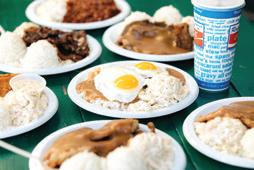
Kalihi, Pearlridge
Family owned since 1961, Rainbow Drive-In is known for their generous portions of simple, hearty Hawai‘i comfort food. Stop by one of three locations for the best Loco Moco or a delicious plate lunch. After enjoying a famtous Slush Float for dessert, leave with one of our exclusive logo-emblazoned merch items from the Rainbow Tiki shop.

(808) 737-0177 rainbowdrivein.com

685 Auahi St Building 2 Suite 121, Honolulu
Laidback yet refined, vein at KAKA‘AKO features a modern Mediterranean with Japanese influence created by Executive Chef Dell Valadez. The dishes, such as the Lamb “Scottadito” with Pickled Plum Tapenade and Pistachio pasta topped with Prosciutto di Parma, are intriguing in descriptions and enticing in flavor, making vein the ideal locale for a unique and exceptional dining experience.

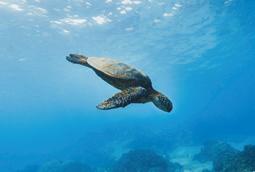
Waikīkī, Hawai‘i
Ultimate Circle Island Tours prides itself in providing custom client relationships through our 16-location boutique family-style tours. We are one of only a few O‘ahu circle island tours that include the chance to view the noble Hawaiian green sea turtles on O‘ahu’s North Shore. Come with us to enjoy a full day of exploring O‘ahu. Use promo code HANAHOU for $65 per person all ages special!

(808) 376-4800
veinatkakaako.com
(808) 460-6163
ultimatecircleislandtours.com

59-864 Kamehameha Highway, Hale‘iwa
Waimea Valley is a wahi pana (storied place) deeply rooted in Hawaiian culture. Today Waimea is home to six cultural sites and 5,000 unique plants from all over the world. Allow the wonders of Waimea to speak to you as you walk through this place of healing. Experience the tranquility and the sites that hark back to a bygone era in Hawai‘i’s history.

(808) 638-7766 waimeavalley.net
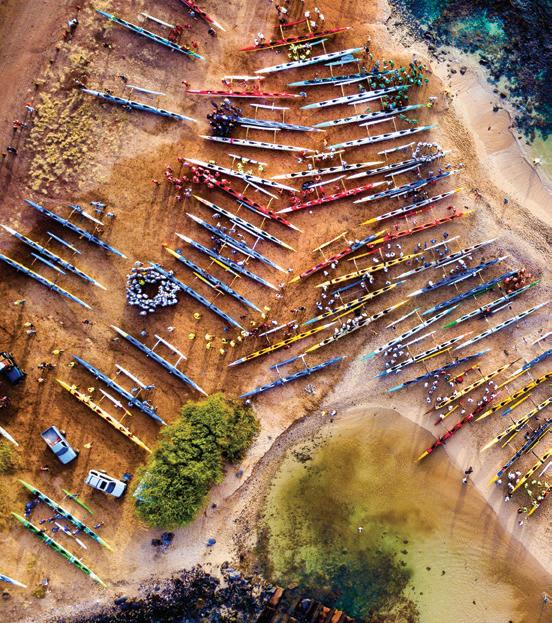



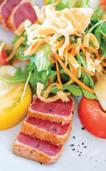

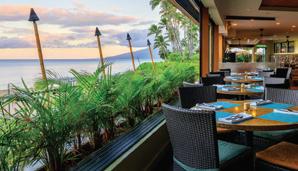

WILDLIFE WEDNESDAYS
Wednesdays
Join naturalists from the Hawai‘i Wildlife Discovery Center every Wednesday and learn about humpback whales, monk seals and more Maui wildlife. 10 a.m. to noon. Whalers Village, (808) 661-4567
JOHN CRUZ ISLAND STYLE SERIES
First and Third Wednesdays
Nā Hōkū Hanohano award-winning singersongwriter John Cruz has built his career telling stories through songs about everyday people and experiences. His ongoing Island Style series celebrates the ties that bind. 7 p.m. ProArts Playhouse, proartsmaui.org
KANIKAPILA THURSDAYS
Second and Fourth Thursdays
Maui artists perform live music and families can participate in giant yard games. 5:30 to 7:30 p.m. Queen Ka‘ahumanu Center, (808) 877-3369
HĀNA FARMERS MARKET
Fridays
Locally grown produce and products from East Maui. Free. 65-and-over shopping starts at 2:30, general admission from 3 to 5 p.m. Hāna Town Center, (808) 378-0084
KĪHEI FOURTH FRIDAY
Fourth Fridays
A monthly community street party with food trucks, entertainment, crafters and kids’ games. 6 to 9 p.m. Free. Azeka Shopping Center, kiheifridays.com
UPCOUNTRY FARMERS MARKET
Saturdays
Locally grown produce, fish, prepared food and products. Free. 7 to 11 a.m. Kulamalu Town Center, (808) 572-8122
QKC KEIKI CLUB
Third Saturdays
Monthly crafting and creativity activities for kids presented by Queen Ka‘ahumanu Center and Handmade Gifts & Decor. 10 to 11 a.m. Queen Ka‘ahumanu Center, (808) 877-3369

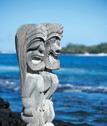



Sundays
An evening marketplace with local food and product vendors and live entertainment. Free. 4 to 8 p.m. Kahului Shopping Center, (888) 948-6382
Last Sundays
Beginner and experienced performers improvise live theater on stage. 6:30 p.m. ProArts Playhouse, proartsmaui.org
Fourth Sundays
Polynesian dance and hula performed at QKC’s center court. 1 to 2 p.m. Queen Ka‘ahumanu Center, (808) 877-3369
Through 8/4
One of the most performed shows in America, Seussical is a musical celebration of the many characters of Dr. Seuss Historic Iao Theater, mauionstage.com
Through 8/7
A group exhibition featuring seven contemporary Japanese photographers who go by the collective name of “photography?end?”. Maui Arts & Cultural Center (MACC) Schaefer International Gallery, (808) 242-2787
8/2–23
An exhibition showcasing works by more than 250 keiki (youth) artists participating in Hui No‘eau Visual Arts Center’s summer arts program. Hui No‘eau Visual Arts Center, huinoeau.com
8/27–10/19
This invitational exhibition features ten contemporary ceramic artists with connections to Hawai‘i whose work explores the medium of clay- and earthderived materials. MACC Schaefer International Gallery, (808) 242-2787
8/29–9/2
A celebration of compassionate cinematic vision and storytelling, presenting the best of studio and independent releases. Various locations, mauifilmfestival.com
LĀ ‘ULU BREADFRUIT DAY
9/7
Taste food made with ‘ulu (breadfruit), shop at a plant sale including Pacific ‘ulu tree varieties and try hands-on Hawaiian crafts and games. Free. 10 a.m. to 2 p.m. Maui Nui Botanical Gardens, mnbg.org
9/13&14
Maui’s premier adult hula competition features award-winning hālau competing in solo and group performances. MACC, kumaikahula.com
9/13–11/8
A juried art exhibition of all media celebrating the native species of Maui Nui (Maui, Lāna‘i, Moloka‘i, Kaho‘olawe). Maui artists explore watersheds and raise awareness about the importance of protecting native species. Hui No‘eau Visual Arts Center, malamawaoakua.org
9/21
Held in honor of Uncle Richard Ho‘opi‘i, one of Hawai‘i’s most beloved and talented musicians, this singing competition showcases some of Maui’s finest amateur male falsetto performers. The Ritz-Carlton Kapalua, festivalsofaloha.com
9/21
A community festival with local crafters, silent auction, baked goods, fresh produce, plants and flowers, kids’ zone and food vendors. Proceeds shared with Kula Community Watershed Alliance. St. John’s Episcopal Church, stjohnsmaui.org
9/27
Rock band Chicago performs their signature sound with horns, iconic vocalists and classic songs. MACC, (808) 242-2787
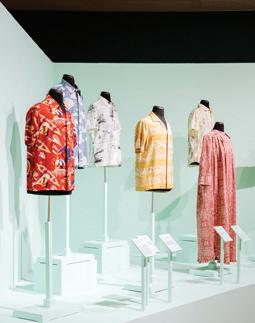
Watch a curated selection of films and series on the in-seat media player or Hawaiian Airlines app.


Located in Upcountry Maui at the historic Kaluanui Estate, Hui No‘eau Visual Arts Center is a community arts center offering classes, workshops, exhibitions, and events. Discover the 100-year-old Kaluanui home, enjoy local artwork in one of our year-round exhibitions, or tour the scenic 25-acre grounds. Supported in part by the Hawai‘i Tourism Authority.

No processing, resort or booking fees!
Escape to a quiet old Hawaiian style resort at The Kuleana & at The Napili Bay in Lahaina. Dine, shop, eat, relax on the beach. Book hassle free directly with owners of an ocean front 2 bd Penthouse that sleeps 6 or Studio sleeping 4. Your dream vacation awaits! Book today on link below.
(808) 572-6560
huinoeau.com

3651 Omaopio Rd, Kula
Surfing Goat Dairy, nestled on the slopes of Haleakalā in Maui’s Upcountry, is evolving from a commercial dairy into a culinary agro-tourism haven. Visitors can experience the sweet magic of our goats and their milk. Book an interactive tour, or simply enjoy our award-winning cheeses and freshly made culinary offerings, like our famous Goat cheese chocolate truffles.

(808) 878-2870
surfinggoatdairy.com

BANYAN DRIVE, HILO


Mondays
A one-hour nature walk through an oldgrowth Hawai‘i rainforest on an easy loop trail. Walkers are introduced to the native plants and birds of Kīlauea volcano. Free. 9:30 a.m. Volcano Art Center’s Niaulani Campus, (808) 967-8222
Thursdays
Observe the traditional art of baking Portuguese bread in a large wood-fired stone oven, or forno. Bread sales begin at 1 p.m. Program begins at 10 a.m. Kona Historical Society, (808) 323-3222
Fridays
Take a walk back in time to 1912 and meet the founder of the Hawaiian Volcano Observatory, Thomas A. Jaggar, at the edge of Kīlauea volcano. Free. 10 a.m. to noon. Hawai‘i Volcanoes National Park, (808) 985-6000
Second and Fourth Fridays
Live music, food trucks and dozens of local vendors with Hawai‘i Island products, artwork and other artisanal goods. 4 to 8 p.m. Kings’ Shops in Waikoloa, (808) 886-8811
First Saturdays
Local crafts and art vendors, keiki entrepreneurs, fresh food, ‘ohanacentered outreach, sustainable-living resources and live music. Free. 9 a.m. to 2 p.m. Kona Grill House, (808) 960-7728
Second Saturdays
Keiki of all ages are welcome to join guest artists and local organizations in making a variety of creative projects. Free. 10 a.m. to 2 p.m. East Hawai‘i Cultural Center, (808) 961-5711
Second Saturdays
Local crafters and makers selling gifts, art, crafts and food. 9:30 a.m. to 3:30 p.m. Kona Commons Shopping Center, (808) 854-1439
Through 8/4
This year marks the 62nd anniversary of this storied fishing tournament, in which teams from around the world compete to catch the largest prized Pacific blue marlin. Kailua-Kona, (808) 326-7820
8/1–9/15
This international group exhibition will feature artworks by seven artists that each have a unique style driven by process, color and mark making. Kahilu Theatre, kahilu.org
8/4&9/28
For the anniversary of the Great American Outdoors Act and National Public Lands Day, Hawai‘i Volcanoes National Park offers free admission all day. Hawai‘i Volcanoes National Park, (808) 985-6000
8/10
Hula and chant on a sacred site near the Volcano Art Center with Hālau Hālauolaokalani. Call ahead to confirm the monthly event. 10:30 to 11:30 a.m. Volcano Art Center Gallery, (808) 967-7565
8/13–24
This twelve-day international canoe racing event brings thousands of paddlers and spectators from over thirty-five countries. Hilo Bay Front, (925) 998-2984
8/17
Local storytellers, dancers and musicians join together to tell stories, myths and legends, and share other talents. Mauna Lani Auberge guests, Hawai‘i residents, and resort employees and their families are welcome. 5 to 8 p.m. Eva Parker Woods Cottage, (808) 885-6622


8/17–9/14
A small-scale exhibit spanning two thousand years of surfing history through the lens of thirteen modern Kānaka ‘Ōiwi (Native Hawaiian) creatives and cultural practitioners. Donkey Mill Art Center, donkeymillartcenter.org
8/18
Ali‘i Drive transforms into a festive, pedestrian-only marketplace filled with music and art. At 4 p.m. there is a free Hawaiian music concert at Hulihe‘e Palace. 1 to 6 p.m. Kailua-Kona, (808) 936-9202
8/29–9/2
In partnership with Blue Ribbon Restaurants and Māla‘ai: The Culinary Garden of Waimea Middle School, this one-of-a-kind festival connects chefs, sommeliers, mixologists, friends and neighbors in the spirit of culinary creativity. Mauna Lani, Auberge Resorts Collection, (808) 885-6655
8/29–9/2
The largest long-distance canoe race in the world attracts dozens of canoe clubs and hundreds of paddlers from Hawai‘i and beyond. This five-day event also includes a cultural festival, parade, fair, lū‘au and food booths. Kona, qlcanoerace.com
8/31&9/1
This annual end-of-summer rodeo raises scholarship funds for children of Parker Ranch employees, with events like team roping, bull riding, double mugging and more. Waimea, (808) 885-7311
SEPTEMBER
9/14
This bimonthly series highlights local musicians at the Dietrich Varez Hall surrounded by native rainforest. July’s concert is titled The Odyssey of Jazz Saxophone. Volcano Art Center’s Niaulani Campus, (808) 967-8222
KĪLAUEA
9/14
Hula and chant on a sacred site near the Volcano Art Center with Hālau o Kou Lima Nani Ē. Call ahead to confirm the monthly event. 10:30 to 11:30 a.m. Volcano Art Center Gallery, (808) 967-7565
9/15
Ali‘i Drive transforms into a festive, pedestrian-only marketplace filled with music and art. At 4 p.m. there is a free Hawaiian music concert at Hulihe‘e Palace. 1 to 6 p.m. Kailua-Kona, (808) 936-9202
9/7
Big Island Road Runners’ longest running event. The route for both races includes Lili‘uokalani Park and Hilo Bayfront. Reed’s Bay Park, bigislandroadrunners.com
9/20–22
A weekend of events hosted by nonprofit Kona Pride Inc. celebrating and bringing visibility to Hawai‘i Island’s LGBTQ+ community. Various Locations, konapride.com
9/21
Honoka‘a town celebrates the United Nations International Day of Peace with a parade and festival. Honoka‘a, honokaa.org
9/26–11/1
Leslie Gleim uses aerial and macro photography to capture images of lava flows and volcano ecologies on Hawai‘i Island. Kahilu Theatre–Hāmākua Gallery, kahilu.org EVENTS: HAWAI‘I
9/8
Ali‘i Drive transforms into a food truck festival with ‘ono (delicious) eats, live entertainment and hula performances. 12 p.m. to 6 p.m. Historic Kailua Village, 808-326-7820
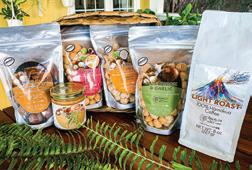
45-3279 Mamane Street, Honoka‘a
Stop by “The Nuthouse” and see what’s crackin’! Ā hualoa Family Farms grows, processes, and produces delicious 100% Hawaiian macadamia nuts and 100% H ā m ā kua coffee in Historic Honoka‘a town, the gateway to Waipi‘o Valley. Come in for free samples, relax on the l ā nai, enjoy a cup of coffee and take home your favorite macadamia nut flavor. See you at The Nuthouse!

(808) 775-1821
ahualoafamilyfarms.com
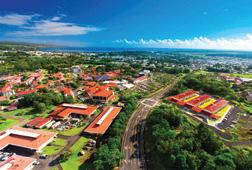
200 West Kāwili Street, Hilo
Not all classrooms have four walls. With 10 of the 14 world climate zones right next door, you can learn, live and thrive at one of the most diverse campuses in the nation. Experience place-based learning rooted in aloha - Your Journey is Our Focus. Visit UH Hilo’s Admissions Office for a campus tour and receive a special bookstore discount.

(808) 932-7446
or 1 (800) 897-4456
hilo.hawaii.edu/tours


hawaiianairlines.com/hawaiistories/hana-hou

Volcano, Hawai‘i
Volcano Art Center promotes, develops and perpetuates the artistic, cultural and environmental heritage of Hawai’i through art and education. Celebrate the Past, Present and Future of the Arts as VAC turns 50 in 2024! Join us for exhibits, classes, and concerts honoring Hawai’i artists and attend free, ongoing programs including Hula Arts At Kīlauea and Guided Forest Tours. Become a member today.

(808) 967-8222
volcanoartcenter.org


See web site for various locations
September 22–28, 2024 www.maliefoundation.org
The Mālie Foundation is a Hawaiian organization that collaborates with individual community members, organizations, schools and businesses to sustain its programs each year. Mālie strives to nurture Hawaiian culture by creating respectful and authentic hands-on experiences for residents and visitors, and supports Hawaiian-language immersion schools and other programs that preserve and perpetuate Hawaiian culture. This year’s theme is Ka Makahiki o Nā Mea Ho‘okani— Year of Implements & Instruments.
The Kaua‘i Mokihana Festival is one of the Garden Island’s longest-running events. All who participate in and attend this and other Mālie Foundation events help to pass on the traditions of our kūpuna (ancestors) through hula, music, language and history.
Kaua‘i Mokihana Festival will be held on September 22–28, 2024, with events such as Hawaiian church service, a composer’s contest, workshops, a hula competition and a two-day craft fair with vendors from across the Islands. Sponsored by Kilohana CNHA, Hawai‘i Tourism Authority, County of Kaua‘i and the Hawai‘i Community Foundation.
Royal Sonesta Kauai Resort
November 11–17, 2024
kauaiwritersconference.com
info@kauaiwritersconference.com

Widely considered to be the premier writing and publishing event in the US, the Kauai Writers Conference includes a faculty of forty-five bestselling authors, prominent literary agents and publishers. You can choose from forty conference sessions and twenty intimate master classes on many aspects of the art and business of writing.
The carefully selected agents and publishers come in search of new authors. They offer oneon-one sessions in which writers can present their work. Attendees range from people just beginning their writing journey to others who


have completed novels, memoirs, screenplays, works of nonfiction, short stories and collections of poetry. They come to hone their writing craft, find their way to successful publication, and enjoy the company of fellow writers and renowned authors.
This year’s authors include, among many others, Lauren Groff, Billy Collins, Ruth Ware, Chris Pavone, Tom Perrotta, Molly Ringwald, Christina Baker Kline, Jean Kwok, Meg Wolitzer and Marta Kauffman. Publishers include Simon and Schuster, HarperCollins and Poets & Writers.
The event features deeply authentic Hawaiian cultural experiences with performances by major legends of Hawaiian music. The conference takes place in the beautiful Royal Sonesta Kauai Resort on Kalapakī Beach, Līhu‘e. Indoor-outdoor settings for classes and meals make for a casual atmosphere in which lifelong friendships form, book deals get made and lives are changed.
Learn more and register at kauaiwritersconference.com
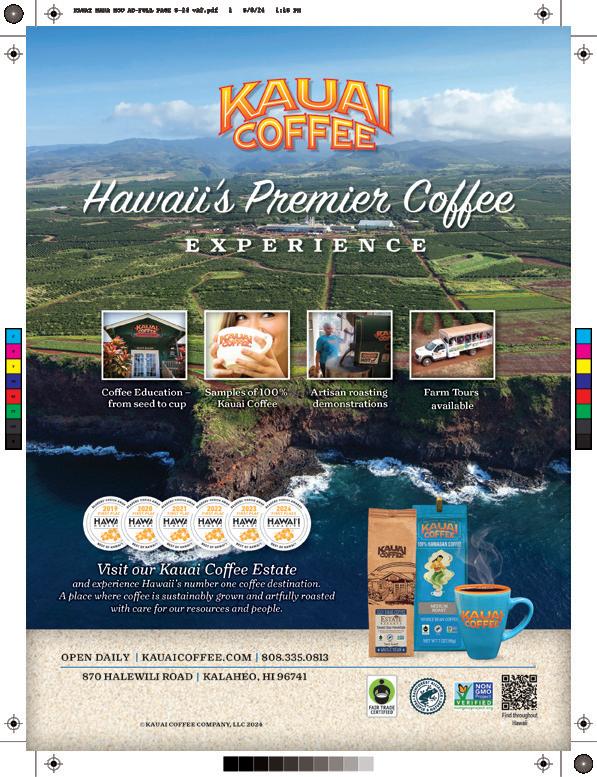
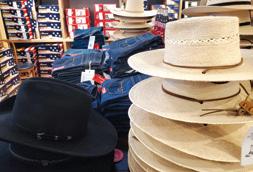
4427 Papalina, Kalāheo
Browse our showroom, now featuring: Abilene, Billy Cook, Blundstone, Carr & Day & Martin, Hario, Haws, Justin Boots, Kimes Ranch, LC King, Mauviel, Montana Silversmiths, Mu’umu’u, P alaka, Pāpale, Records, The Tailored Sportsman, Thorogood, Toyo, and Western Aloha (808) 378-2116 horsesaregood.com

4-1400 Kuhio Highway, Kapa‘a
At Kela’s Glass Gallery, it’s all about the glass art. See for yourself the stunning Color Changing Jewelry by the owner Mimi. This impressive gallery features the works of over 150 fine glass artists. Apparently the specialization works. Kela’s Glass Gallery won the prestigious Top Retailer Award from NICHE Magazine voted on by over 10,000 American artists.

glass-art.com (808) 822-4527

Aloha and Irashaimase are the warmest greetings one can receive in Hawaii. We invite you to dine in our garden as well as our air condition dining room. Allow time to shop in our stores Blu-Umi, Banana Patch Studios and Aloha Spice. All located in the Hanapepe Gathering space. Mahalo and Arigato-gozaimasu

(808) 855-5016
japanesegrandma.com
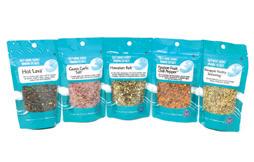
1-3529 Kaumuali‘i Highway Unit 2B, Hanapēpē
Salty Wahine Gourmet Hawaiian Sea Salts is a family-owned Kaua ‘ i Made Company that specializes in Kosher Hawaiian Sea salts, seasonings, and tropical sugars using fruit infusions like mango, coconut, guava, passionfruit, dragonfruit, and pineapple. All products are made by hand with Aloha in our Salty Wahine commercial kitchen/factory in Hanap ē p ē , Kaua ‘ i.

(808) 378-4089
saltywahine.com
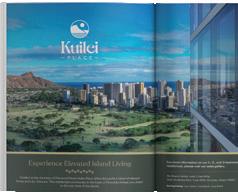
“Our advertisements in Hana Hou! magazine received an excellent response. Our ad reached our target audience, generating significant interest and engagement, resulting in positive outcomes for Kuilei Place.”
ALANA KOBAYASHI PAKKALA Executive Vice President, Kobayashi Group.
“We have a great partnership with Hana Hou!, and our advertising gets strong results. We don’t advertise anywhere else and are pleased with the business generated by our ad in Hana Hou!—both in person and through website sales.”
BRYCE ZANE
Sales Manager, Dole Hawaii
“Hana Hou! has been our most important form of marketing communication to customers since we started advertising in the magazine in 2000. To achieve the greatest impact, our new ‘Collections’ are introduced first in Hana Hou! and there is no doubt that our advertising in Hana Hou! has contributed greatly to our success.”
COLE SLATER President & CEO, Maui Divers Jewelry
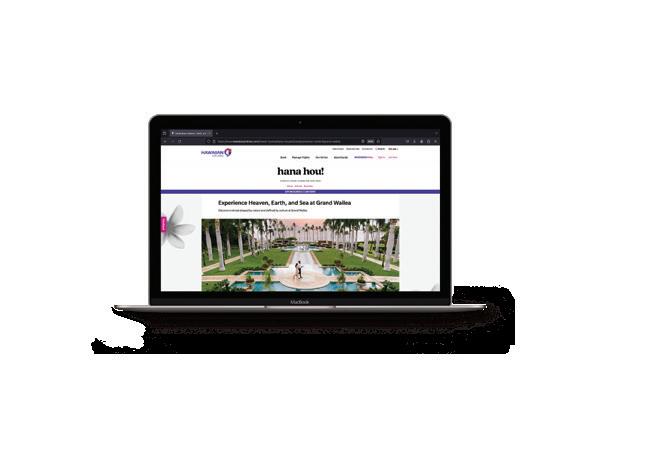

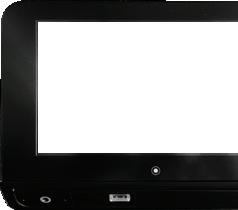
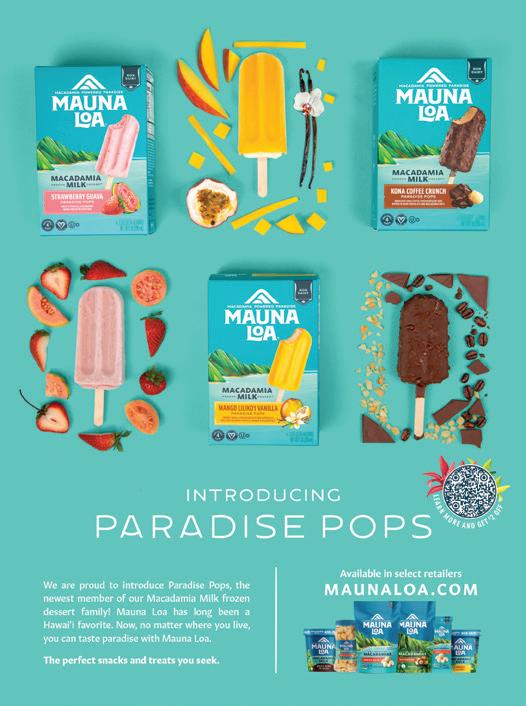
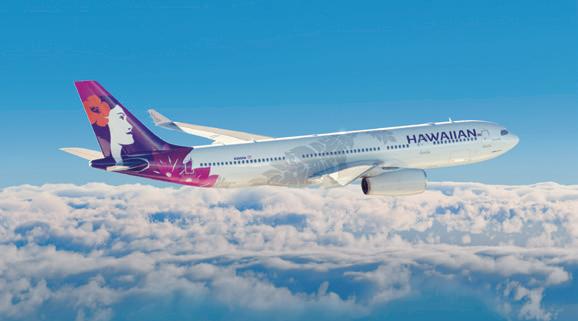
E nanea i kā mākou ho‘okipa, a e luana i ka lele ‘ana!
Please enjoy our hospitality, and have a relaxing flight!
In Hawaiian culture, mea ho‘okipa means "I am your host." This phrase expresses the spirit of hospitality you'll find on our flights, whether you're traveling to the Neighbor Islands, between Hawai‘i and North America or within the Asia-Pacific region. If there is anything that we can do to make your flight more enjoyable, please don't hesitate to let us know.
144 / In-Flight Meals
145 / Streaming Entertainment on A321neo Aircraft
146 / In-Flight Snacks, Souvenirs and Beverages
148 / Terminal Maps
150 / HawaiianMiles Partners
152 / Route Map
154 / The ‘Ohana Pages
It’s true. We’re one of the only airlines left in the country to serve you a complimentary meal at mealtime in the Main Cabin. You’ll find Hawai‘i-inspired meals on select flights to and from Hawai‘i, always served with our unique brand of Hawaiian hospitality.

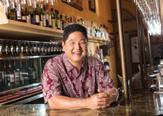
Above top: Wade Ueoka and Michelle Karr-Ueoka
Bottom: Chuck Furuya
Left to right: Chef Robynne Mai‘i of Fete Restaurant, Chef Mark Pomaski of Moon and Turtle in Hilo, Executive Chefs Wade Ueoka and Michelle Karr-Ueoka of MW Restaurant, Chef Jason Peel of Namikaze and Chef Keaka Lee of Kapa Hale.
Hawaiian Airlines’ in-flight service shares the sights, sounds and tastes of Hawai‘i, and when it comes to our First Class meal service, that means exciting, varied Pacific Rim cuisine with our Featured Chef Series. This esteemed collaboration showcases some of Hawai‘i’s most dynamic chefs creating menus for meals served in our forward cabin.
The Featured Chef Series is overseen by Hawaiian Airlines Executive Chefs Wade Ueoka and Michelle Karr-Ueoka.
Sit back and enjoy Hawai‘i’s vibrant food culture and our distinct onboard experience.
Executive Chefs Wade Ueoka and Michelle Karr-Ueoka opened MW Restaurant in Honolulu in 2013. Their cuisine combines inspirations from travels around the world with Hawai‘i’s culinary traditions and local bounty. To sample MW’s latest creations visit their new location at 888 Kapi‘olani Boulevard in Honolulu.
MWRestaurant.com
Chuck Furuya has a passion for the world’s oldest fermented beverage and holds the distinction of becoming only the tenth person in the United States to pass the rigorous Master Sommelier examination, in 1988. You can find Chuck at Chuck Furuya Uncorked on YouTube.

Our A321neo and select A330 Aircraft are now equipped with Starlink Internet. It is fast, free internet available for everyone right when you step on board. Switch to Airplane Mode and
• Connect to “ Starlink WiFi on HawaiianAir ”
Please note: Rollout of Starlink Internet across our Aircraft is currently underwaynot all A330 aircraft include this service. Look for the Starlink In-Flight WiFi logo at the door to know if your aircraft is equipped with this new service.
The following is not permitted with our in-flight internet service:
• No voice or video calls
• No Livestream broadcasting
• No viewing obscene/offensive content
Guests on our A321 aircraft are also able to stream complimentary entertainment on their personal electronic devices.
IN THE HAWAIIAN AIRLINES APP ˙
1. Once onboard:
• Switch to Airplane Mode
• Connect to “Movies on HawaiianAir” WiFi network
2. Open the Hawaiian Airlines app:
• Select “More” » Select “In-Flight Entertainment”
IN A BROWSER ˙˙
1. Connect to “Movies on HawaiianAir” WiFi network
2. Open browser and type in URL: HawaiianAirWifi.com
3. Choose from the menu and enjoy!
˙ Supported on IOS 13+ and on Android 8.0+
˙˙ Internet Explorer and Edge browsers are not supported at this time
Hawaiian Airlines offers DJ-hosted, curated audio programming devoted to musical styles from across the globe, ranging from award-winning Hawaiian music to jazz and K-Pop.*
FEATURED CHANNELS INCLUDE:
Island Favorites
From the latest songs to all-time classics, Island Favorites presents the best of Hawaiian musicians, including Ei Nei, Maunalua and others.
Classic Jawaiian Rhythms
The melding of Hawaiian melodies with Jamaican rhythms creates a uniquely Island groove.
‘Ukulele Wizards
A celebration of Hawai‘i’s iconic instrument and those who use it to make musical magic, including Pali Ka‘aihue and others.
Slack Key Serenity
George Kahumoku Jr. is among the kī ho‘alu masters showcasing varied interpretations of the Hawai‘i-born slack-key guitar style.
*Available only on A330 and A321neo aircraft.


Noho Home x Hawaiian Airlines
We are proud to partner with Noho Home by Jalene Kanani on the limited edition Leihōkū Collection. Products are available while supplies last.
Products may also be available at NohoHomeHawaii.com. Prices may vary.

Travel Blanket ˙˙
Reusable Cleaning Cloths (3)
Chopsticks (5 pairs)
Travel Wrap
$18.00
$12.00
$12.00
$16.00
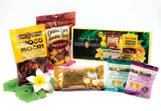
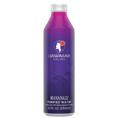
Mananalu Water in Keepsake Hawaiian Airlines Reusable Aluminum Bottle, 22 oz ˙˙
Keepsake blanket, popular local snacks, souvenirs and sundries are available from the Pau Hana Snack Cart. Cabin crew will advise when the cart is heading down the aisle on domestic flights or is open in the galley on Australia and New Zealand flights.
Selections and quantities are limited and may vary. To print receipts of in-flight purchases, visit HawaiianAirlines.com/receipts.
Mananalu Water in Keepsake Hawaiian Airlines Reusable Aluminum Bottle, 22 oz ˙˙
Hawaiian Chip Company Taro and Sweet Potato Chips
Island Princess Caramel Macadamia Nut Popcorn
Kona Chips Furikake Chips
Samurai Furikake Popcorn
Snack Packs ˙
Made in Hawai‘i Snack Sampler K
Choco Caramel Popcorn, Choco Mochi, Lightly Salted and Maui Onion Macadamia Nuts, Mele Mac
Classic Snack Box GF
Crackers, Chickpeas, Turkey Stick, Hummus, Gummies, Sweet Treat
Keiki (Child) Snack Box GF Cheese Puffs, Granola Minis, Turkey Stick, Applesauce, Gummies, Sweet Treat
‘Ono Snack Box GF Salami, Cheese Spread, Dried Fruit, Olives, Crackers, Sweet Treat
Cheese Tray with Crackers and Dried Fruit
Classic Snacks
M & M’s Peanut
Maruchan Cup Ramen Chicken
Pringles K
Noho Home Travel Blanket
Ear Buds with Hawaiian Airlines Zipper Case
Juices
Passion-Orange-Guava* (POG)
Pineapple Orange Nectar / Apple / Orange
Mott’s Tomato / Mr. & Mrs. T Bloody Mary Mix
Hot beverages
Lion Coffee* / Tea
Soft drinks
Coke / Diet Coke / Sprite
Diamond Head Strawberry Soda
Canada Dry Ginger Ale
Milk (Lowfat or Whole)
Club Soda / Tonic Water / Flavored Sparkling Water
Cocktails
Mai Tai (Kō Hana)
Pineapple Daiquiri** (Kō Hana)
Aviation** (On the Rocks)
Old Fashioned** (On the Rocks)
Spirits
Rum (Koloa Rum)
Vodka (Ocean)
Scotch (Dewars)
Whiskey (Jack Daniel’s)
Gin (Tanqueray)
Koloa Pineapple Passion*** (Koloa Rum)
$10.00
$10.00
$10.00
$10.00
Wines & Champagne
Summer Club Pogmosa
Sparkling White Wine with Passionfruit, Orange, Guava
Mionetto Prosecco Sparkling Wine Split
Woodbridge Cabernet Red Wine Split**
Benton Hills Cabernet Red Wine Half Bottle
Woodbridge Chardonnay White Wine Split**
Benton Hills Chardonnay White Wine Half Bottle
Red or White Wine Glass***
Beers
Big Swell IPA (Maui Brewing Co.)
Bikini Blonde Lager** (Maui Brewing Co.)
Da Hawai‘i Life Lite Lager (Maui Brewing Co.)
Hard Seltzer Dragon Fruit** (Maui Brewing Co.)
Heineken**
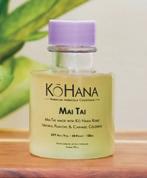
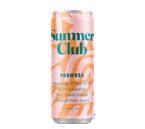

Complimentary beverages provided by
*Complimentary on Neighbor Island flights.
**Available for purchase on Neighbor Island flights. ***Complimentary glass of wine on flights to/from New York, Boston, Austin. Complimentary glass of Koloa Pineapple Passion on flights to/from West Coast North American cities. $8 per glass thereafter.
All beer, wine, champagne and spirits available for purchase on North American flights. Complimentary in First/Business Class.
Alcoholic Beverages
Only alcoholic beverages provided by Hawaiian Airlines and served by Flight Attendants may be consumed on board the aircraft. No alcoholic beverages will be served to persons who appear intoxicated or to those under 21 years of age.
Hawaiian Airlines’ complimentary items may change or vary from time to time, and availability can be affected by aircraft schedule changes.
Beverage menu is subject to change. Some items may not be available on all flights and/or classes of service. Beverage availability is limited. Beers, wines, spirits, snacks and sundries are available for purchase with major credit/debit cards only.
˙ Snack box components are subject to availability. Please see snack box for list of included items.
˙˙ Available on select North America flights only.
GF Gluten-Free
K Kosher
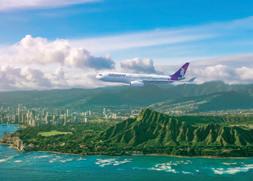
A mile flown is a mile earned. Join HawaiianMiles for free and earn miles every time you fly with us or earn miles with our hotel, car rental, and shopping and dining partners. With miles that never expire, the sky is the limit.
Visit HawaiianAirlines.com/Join/HanaHou.

Scan to join for free!
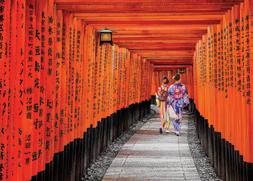
Fly with our partner airlines and earn miles. Make sure your HawaiianMiles number is included with your reservation when booking or checking in with an agent. You can also redeem miles with our partner airlines to fly to exciting destinations for the vacation of a lifetime.


Earn up to 2 miles per $1 spent at hotels participating in the Marriott Bonvoy program including:
• The Ritz-Carlton®
• The Luxury Collection®
• Autograph Collection®
• Marriott Hotels®
• Marriott Vacation Club®
• Sheraton®
• Westin® and more
Plus, HawaiianMiles members can redeem miles for Marriott Bonvoy points to experience all that Marriott Bonvoy offers.
Visit HawaiianAirlines.com/HawaiianMiles/Partners.

As an exclusive benefit, all HawaiianMiles Pualani Elite members can status match to Boyd Rewards special All Access tier that includes VIP benefits when you visit any Boyd destination.
And all HawaiianMiles members can transfer your Boyd Rewards points to miles, as well as redeem miles for Boyd Rewards points – a great way to enjoy Boyd Rewards’ tier benefits and experiences.
Visit HawaiianAirlines.com/HawaiianMiles/Partners


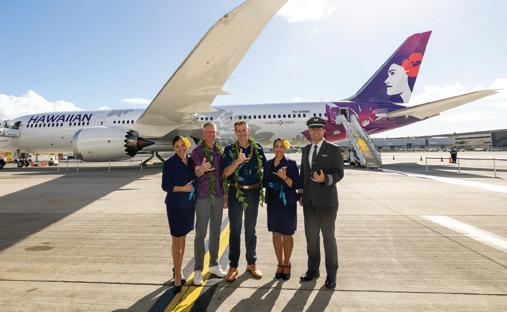
On April 15 we marked another milestone in our near ninety-five-year history: The inaugural flight of our new flagship aircraft, the Boeing 787-9 Dreamliner. That afternoon aircraft N781NA— named Kapuahi after the star known as Aldebaran in Western astronomy— departed Honolulu’s Daniel K. Inouye International Airport for San Francisco. Our first 787-9 guests were welcomed with lei, live music and hula by the Hawaiian Airlines Serenaders.
“Today marks an incredible achievement for all of us at Hawaiian Airlines and I’d like to thank all of our teammates, Boeing and our many partners for helping us make this moment possible,” said Peter Ingram, president and CEO of Hawaiian Airlines. “Our 7879 is a true flagship that, when paired with the award-winning hospitality of our crew,
will provide guests with an unforgettable Hawai‘i travel experience.”
The moment they step onboard Kapuahi, guests are immersed in an island-inspired cabin design, which evokes Hawai‘i through form, texture and soothing sunrise and sunset lighting. The 34 Leihōkū (garland of stars) Suites feature lie-flat seating, 18-inch in-flight entertainment screens, personal power outlets, wireless cell phone charging and direct aisle access. Set in a 1-2-1 configuration with doors, the suites offer privacy or a shared experience with combinable double suites, allowing couples to fall asleep while gazing at a starlit ceiling inspired by the constellations that guided early Polynesian voyagers.
The 787-9 Main Cabin consists of 266 ergonomically contoured Collins Aerospace Aspire seats, which maximize traveler space while offering more
shoulder and hip room. Each seat also features a 12-inch seatback monitor with USB-A and USB-C charging ports.
Kapuahi, which was revealed in February during a formal blessing ceremony in Honolulu, is now one of two 787-9s currently flying our Honolulu-Los Angeles and Honolulu-Phoenix routes. By the end of 2024 we expect to have five 787-9s in service, with another seven scheduled for delivery through 2027.
In conjunction with the inaugural flight of our new Boeing 787-9 Dreamliner aircraft, we also have released a new safety video. For nearly a decade our previous video transported guests to destinations across the Islands while employees relayed important safety information. In the new, seven-minute video, more than fifty new and original


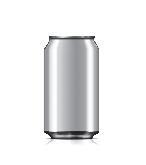

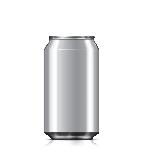






cast members—including teenagers or adults who were keiki (children) in the 2015 spot—are shown in different locations doing their favorite things, from fishing in Hilo Bay to ‘ohana (family) gathering for a backyard pā‘ina (party).
The production team spent three months planning and seven days filming. Their efforts resulted in a tropical, community-inspired storyboard that is both educational and celebratory of our airline ‘ohana and the places they call home. The video takes viewers to all four major Hawaiian islands—O‘ahu, Maui, Hawai‘i Island and Kaua‘i.
In continuing the theme of ‘ohana, keiki from the 2015 video were assigned the same lines in the updated version. The production team also scattered hidden placements of “aloha” throughout the video—look closely and you should be able to spot the word eleven times. Didn’t catch them all? You can also see the video online at: youtu.be/XbxFIanVIR4
An aircraft cabin isn’t the typical setting for learning a new language … that is unless you’re traveling on Hawaiian Airlines. For several years now, our employees have been working to normalize the use of ‘ōlelo Hawai‘i (Hawaiian language) by incorporating it into the flight experience. Translations are available throughout our cabin, from seat numbers and wall signage to safety videos and announcements.
Out of all of our efforts to honor Hawai‘i’s native tongue, the most impactful have been bilingual exchanges between our employees and guests on special ‘ōlelo Hawai‘i flights. “I’m always thinking about the Hawaiian language,” says Manakō Tanaka, senior specialist in community and cultural relations, who is among the flights’ organizers. “We are always trying to find the next meaningful opportunity to celebrate ‘ōlelo Hawai‘i and plant those
seeds with our guests and among our non-speaking colleagues.”
So far, nine ‘ōlelo Hawai‘i flights have been organized across the carrier’s network, from Neighbor Island routes to more distant destinations like Tokyo, Portland and Boston. According to Tanaka, the flights are often planned to mark a special occasion, such as a route anniversary or Mahina ‘Ōlelo Hawai‘i (Hawaiian Language Month).
For example, in 2018 a group of inflight and airport operations employees— many Hawaiian language immersion school graduates—came together to host one of our first ‘ōlelo Hawai‘i flights, from Honolulu to Las Vegas. The flight was organized to honor and celebrate a special guest that day: Dr. Larry Kimura, who taught many of the flight’s crew members and is considered the grandfather of the Hawaiian language revitalization movement.
Earlier this year, during Mahina ‘Ōlelo Hawai‘i, we hosted the first
language flight for our Boston route, welcoming guests at the gate and onboard the aircraft with bilingual announcements. The crew offered guests translation cards with useful phrases such as “I _____ na‘u ke ‘olu‘olu” (May I please have _____) and educational coloring sheets for keiki (children). During their layover, employees visited the Peabody Essex Museum to pay homage to the Hawaiian god Kū, who is depicted in a six-foot-plus-tall wooden relic displayed at the museum.
To lift the language companywide, in 2019 we partnered with the University of Hawai‘i–West O‘ahu to establish an ‘ōlelo Hawai‘i language certification program. As of this spring twenty-three employees have tested and qualified for the certification and now display the Hae Hawai‘i (Hawaiian flag) on their name tags, joining other colleagues who are certified in Japanese, Chinese, French, Korean and Samoan. These speakers often help organize and host ‘ōlelo Hawai‘i flights, though they don’t represent the entire population of speakers at the company.
“There are plenty of fluent speakers who haven’t gone for the test or just have not completed the process yet,” says Tanaka. “Hawaiian has many employees, including managers and leaders, who can speak very well and are involved in ‘ōlelo Hawai‘i flights too.”
In May we published our annual Corporate Kuleana (Responsibility) Report, highlighting Environmental, Social and Governance (ESG) initiatives aimed at growing sustainably. We continue to work toward the goal of achieving net-zero carbon emissions by 2050 through investments in sustainable aviation fuel (SAF) and fleet modernization. Last year we announced that, over five years starting in 2029, we will source 50 million gallons of SAF from biofuel company Gevo, Inc. In parallel, we are actively collaborating with Par Hawaii, the largest refinery in the state, to explore local SAF production. We are also on track to conserve three million gallons of jet fuel via operational initiatives through 2028, having saved approximately 800,000 gallons in 2023.
This year, we inaugurated service of the fuel-efficient Boeing 787-9 aircraft, and will eventually have twelve in our fleet. In preparation for a new growth phase, in 2023 we also welcomed nearly 1,000 employees— for a year-end workforce of 7,362— while expanding career pipeline initiatives with schools and universities.
“I am immensely proud of our achievements in the past year, and the dedication of our employees to make us a better airline,” Hawaiian Airlines President and CEO Peter Ingram said in the report’s welcome message. “Their aloha for one another, our guests, and the communities we serve inspires me each day, and it is what will build our continued success in the years ahead.”
The full 2024 Corporate Kuleana Report can be found online at: issuu.com/hoike/docs/ hawaiianairlines2024corporatekuleana report?fr=xKAE9_5A9Rg
In May we inaugurated daily nonstop service between Salt Lake City and Honolulu with a festive gate-side celebration, welcoming our first guests on the route with fresh orchid lei, cake, live music and hula by the Hawaiian Airlines Serenaders. Flight HA84 departs Honolulu each day at 6:50 p.m. and arrives in Salt Lake City the following day at 5:15 a.m. The return flight, HA83, departs at 7:00 a.m. with a 9:55 a.m. arrival in Honolulu, giving guests ample time to hit the beach or explore the island.
“We know the Hawaiian Islands have a special place in the heart of Utahns and for some, a Hawai‘i vacation also means reuniting with friends and family,” said Brent Overbeek, executive vice president and chief revenue officer at Hawaiian Airlines. “Our new Salt Lake City service comes at the perfect time for travelers planning their summer vacations and we look forward to welcoming them with our award-winning Hawaiian hospitality.”
Guests onboard our 189-seat Airbus A321neo will enjoy free highspeed Starlink internet, Hawai‘i-inspired menus by our featured chefs, local libations from Maui Brewing Co. and
Kō Hana Hawaiian Agricole Rum, island snacks and treats from the Pau Hana Cart and complimentary in-flight entertainment, including exclusive video content from HanaHou! TV. To view flight schedules or to book a flight, visit HawaiianAirlines.com.
Throughout each year, we demonstrate our commitment to our Island home in numerous ways, including through event sponsorships. Among the major gatherings we’re proud to support are two occurring in August.
The Duke Kahanamoku Ocean Festival, which runs from August 17 through 25 in Waikīkī, celebrates the life of Hawai‘i’s most famous waterman with a variety of competitions: surfing, swimming, outrigger canoe and paddleboard racing, beach volleyball and more. We are honored to host the festival’s opening ceremonies, which take place on August 16.
Meanwhile, the Made in Hawai‘i Festival is celebrating its thirtieth anniversary this year with hundreds of vendors and performers offering everything from food to fashion, home décor, live music and more. We’re proud to once again serve as the official airline of the festival, which runs August 23 through 25 at the Hawai‘i Convention Center.

Schedules of events for both festivals can be found at dukekahanamokuoceanfestival.org and madeinhawaiifestival.com
For more news and information about our airline ‘ohana, visit newsroom. hawaiianairlines.com
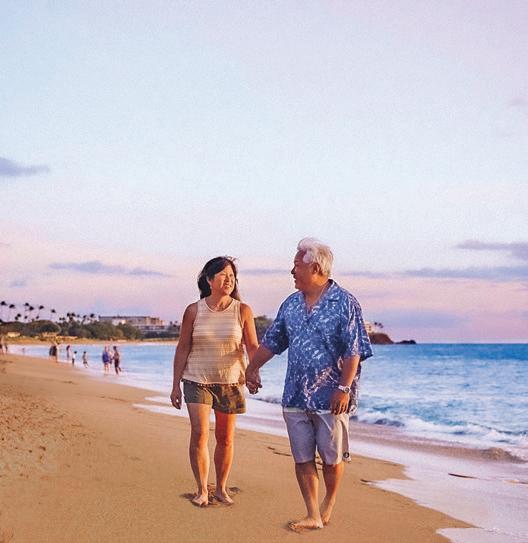

STORY BY CATHARINE LO GRIFFIN
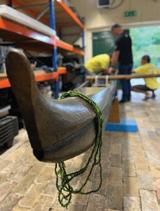
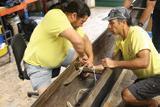
On July 4, 1891, Mr. HR Armstrong of London, a close associate of King David Kalākaua, sent a memo to the curator of the Norwich Museum in England. “Sir,” he wrote, “His late Majesty King Kalakaua, of the Hawaiian Islands made me a present of a native canoe, some 18 feet in length with paddles and outriggers complete. … If you will accept the boat I will have it cleaned and forwarded as soon as possible.”
The Kalākaua canoe became part of the museum’s collection but relegated to a
warehouse, its existence scarcely known and seen in person by only a handful of people from Hawai‘i. One of them is Hilo kālai wa‘a (canoe carver) Zak Shimose, a former apprentice of late master carver Ray Bumatay. He first heard about the Kalākaua canoe after his mentor visited the Smithsonian Institution in Washington DC in 2018 to see the world’s oldest documented Hawaiian canoe, carved from koa and hibiscus at least two centuries ago. It was a gift to the Smithsonian from Queen Kapi‘olani when she and then-Princess Lili‘uokalani made a diplomatic stop in DC in 1887 during their trip to Queen Victoria’s Golden Jubilee in London. One of the Smithsonian’s curators mentioned a “sister” canoe in England. That piqued Shimose’s interest.
“Look at it in the context of the times,” Shimose says. “It was less than five years prior to the overthrow. These gifts were given with the intention of making a statement: ‘Hey, we’re an independent, strong nation.’” Last summer Shimose, along with fellow carvers Alika Bumatay (Ray’s son) and Paul Higgins, visited the Norfolk Collections Centre near Norwich to see the canoe. They were welcomed by museum staff and local dignitaries, including a representative of the Crown.
Even under the warehouse’s fluorescent lights, the Kalākaua canoe, at least 150 years old, is handsome, says Shimose. Its smooth, dark koa hull is in good shape, devoid of major dings. Bumatay says that it had been carved with an adze and that its pepeiao (internal brackets) were chiseled out of the hull just as pre-contact canoes were. “The ‘turtle deck’ in the bow, i.e. forward of the raised lip, is the origin of the hurricane deck of our mail steamers,” reads the museum’s notes, nodding to a Polynesian design that British shipwrights adopted.
Bumatay greeted the canoe the same way his father had when he
approached the Kapi‘olani canoe. “This is one of the happiest canoes I have met, and I say this because he’s still serving his purpose,” Bumatay says. “A lot of canoes are not serving the purpose they were carved for. Many of our kupuna [ancestor] canoes that were carved for fishing have been modified for the sport of paddling. I can see my dad smiling as soon as he would have seen the canoe.” Bumatay noticed one of the wae (spreaders) was upside down and helped relash it. He showed the museum staff how to rig the ‘iako (spars) and ama (outrigger float), and offered to carve a canoe for the museum as “a companion to keep him company till other people from Hawai‘i can aloha him,” he says.
For a while the Kalākaua canoe rested on a rack directly under a birchbark canoe the museum acquired in 1893. During their visit the Hawaiian carvers videoconferenced with canoe carvers of the Wolastoqiyik Nation in New Brunswick, Canada, who confirmed that it was one of theirs. Shimose hopes to learn whether it might be one of three special canoes the Wolastoqiyik built in the 1820s. The first to be discovered, the Grandfather Akwiten canoe, representing the spirit of the grandfathers, was spotted in the rafters of a university in Galway, Ireland, in 2001 and eventually repatriated to New Brunswick. The whereabouts of the other two remain unknown; the Norwich canoe might be one of them.
It’s extraordinary, Shimose believes, that the oldest surviving birchbark canoe (Grandfather Akwiten) and the oldest surviving koa canoe (the Kapi‘olani canoe) were built around the same time and that perhaps their lost siblings have been roommates for the past 130 years. “There’s a purpose that the canoes have been calling out, and I think the endgame is with this Wolastoqiyik connection,” Shimose says. “I think that’s the final piece to this story.” hh


